The first half of the Bundesliga season was characterized by a crowd atop the league table. Now, a couple weeks into the second go-round of the league we — inevitably — are seeing a few teams come back down to earth, with Schalke 04 and SC Freiburg as prime examples of ‘over-performers’ who simply cannot maintain their hot finishing streak any longer. But here at StatsBomb, we choose to value fun stuff above a grim come-down story. So, in that light, we examine the two Bundesliga teams that seem primed to turn things around in 2020.
Vfl Wolfsburg
Allow me to go full-on football hipster on you, and tip a squad that has picked up a paltry four points in the last seven weeks. If we look at Wolfsburg's shot chart, it clearly shows they could put forth viable complaints in the luck department. They're running six goals behind their expected goals total. 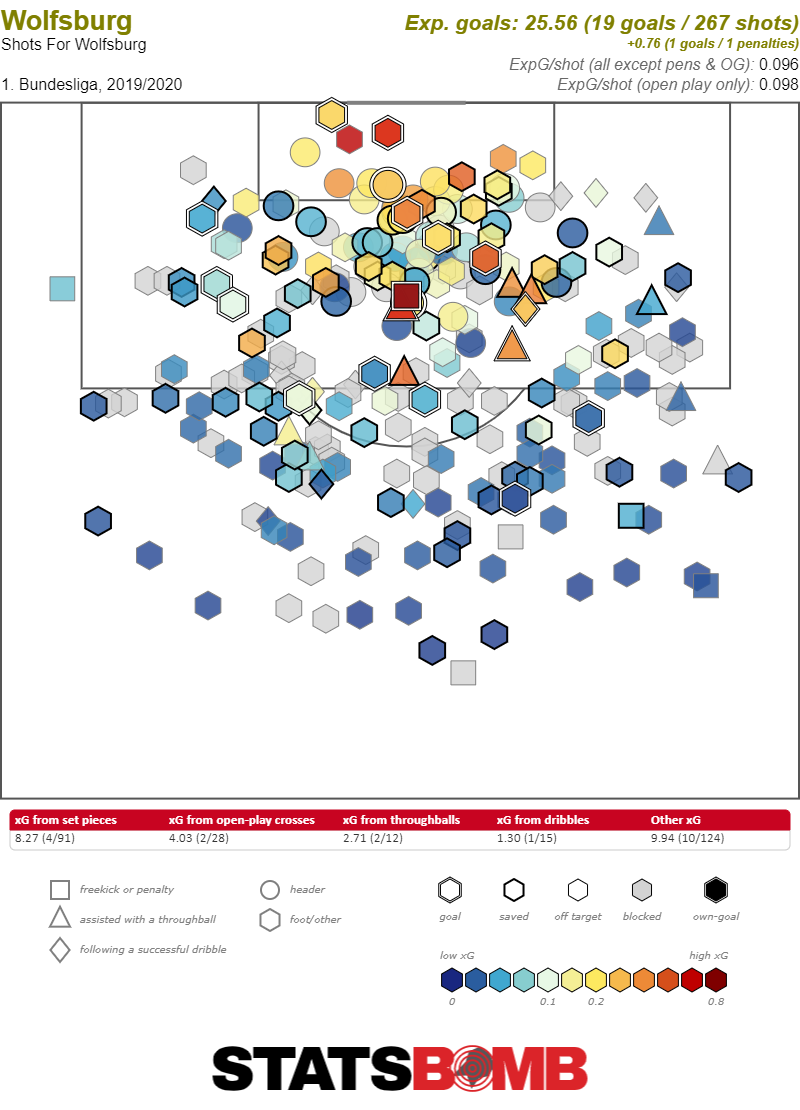 Since former LASK Linz manager Oliver Glasner took over this summer, Die Wölfe boast one of the league’s best defences.
Since former LASK Linz manager Oliver Glasner took over this summer, Die Wölfe boast one of the league’s best defences. 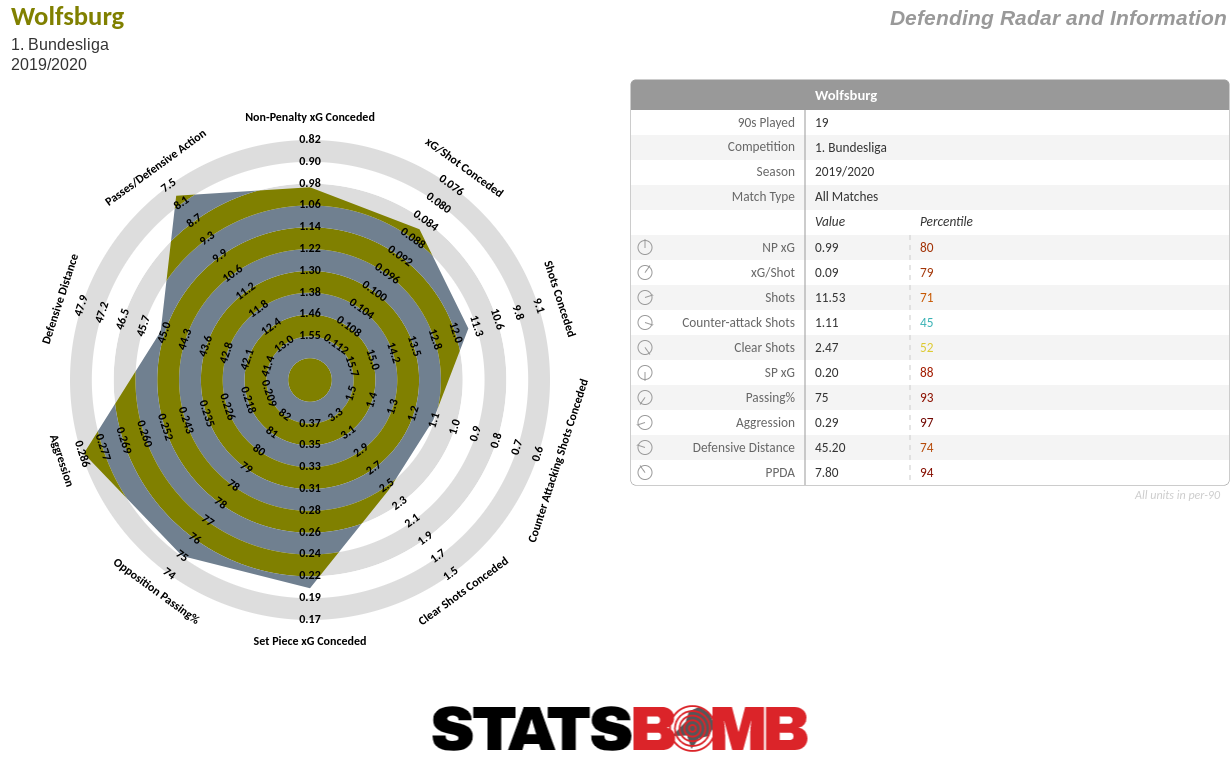 Glasner built a sturdy defensive side by implementing a rigid but beautiful pressing style, the same style that allowed his lowly LASK side to put up really impressive performances in the Austrian Bundesliga in recent seasons. But Glasner’s squad also has the personnel to drop back deeper at times, with physically strong, tall players like John-Anthony Brooks (6'4"), Josuha Guillavogui (6'3") and Marcel Tisserand (6'3") playing in the axis. Glasner has three decent wing-backs at his disposal on the flanks: summer-signee Kevin Mbabu, anonymous-but-good Brazilian William and, most importantly, French leftie Jérôme Roussilon, who, given his extremely specific dribbling skillset. seems set for a big club move next summer.
Glasner built a sturdy defensive side by implementing a rigid but beautiful pressing style, the same style that allowed his lowly LASK side to put up really impressive performances in the Austrian Bundesliga in recent seasons. But Glasner’s squad also has the personnel to drop back deeper at times, with physically strong, tall players like John-Anthony Brooks (6'4"), Josuha Guillavogui (6'3") and Marcel Tisserand (6'3") playing in the axis. Glasner has three decent wing-backs at his disposal on the flanks: summer-signee Kevin Mbabu, anonymous-but-good Brazilian William and, most importantly, French leftie Jérôme Roussilon, who, given his extremely specific dribbling skillset. seems set for a big club move next summer. 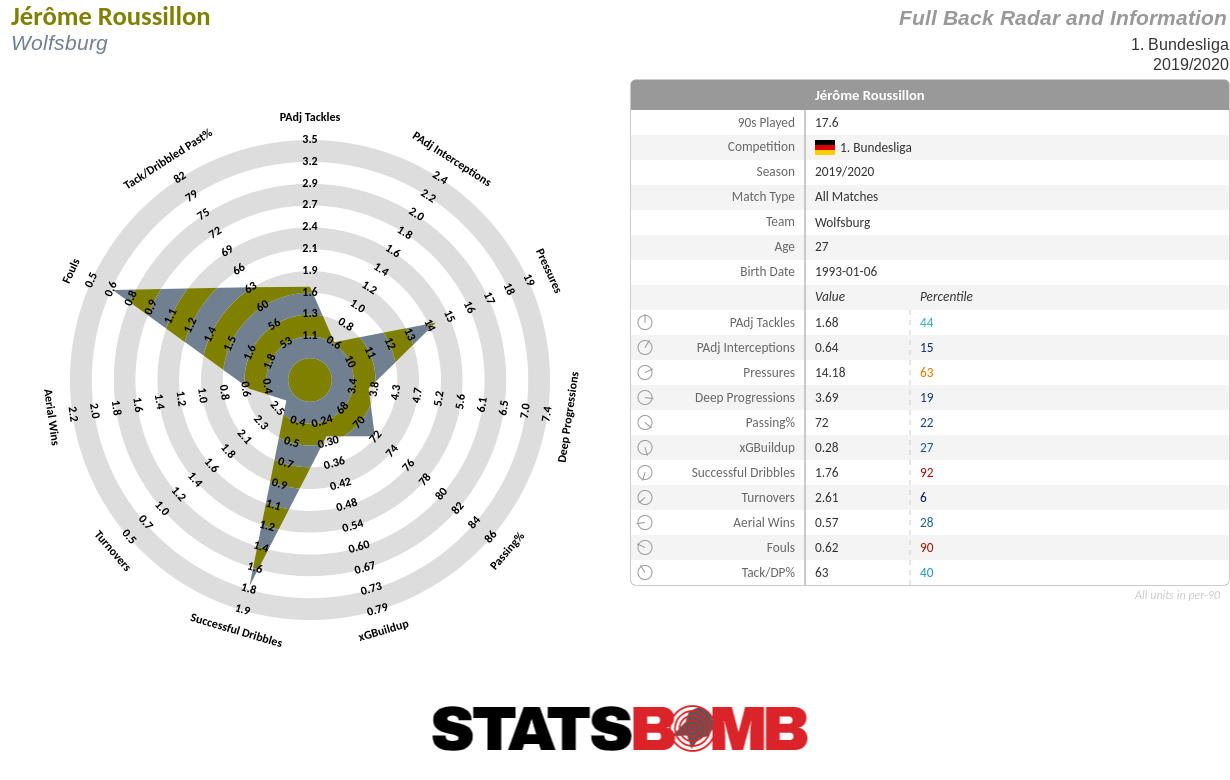 Judging by their January transfers — they replaced a mediocre centre back (Jeffrey Bruma, loaned to Mainz) with a much more promising one (Salzburg’s Marin Pongracic) — Wolfsburg won’t crash on defensively in the second half of the season. The question is whether their attacking numbers will turn around. Certain offensive woes are down to squad management, but Wout Weghorst is a truly excellent target man, whose intense running suits Glasner’s pressing style perfectly.
Judging by their January transfers — they replaced a mediocre centre back (Jeffrey Bruma, loaned to Mainz) with a much more promising one (Salzburg’s Marin Pongracic) — Wolfsburg won’t crash on defensively in the second half of the season. The question is whether their attacking numbers will turn around. Certain offensive woes are down to squad management, but Wout Weghorst is a truly excellent target man, whose intense running suits Glasner’s pressing style perfectly. 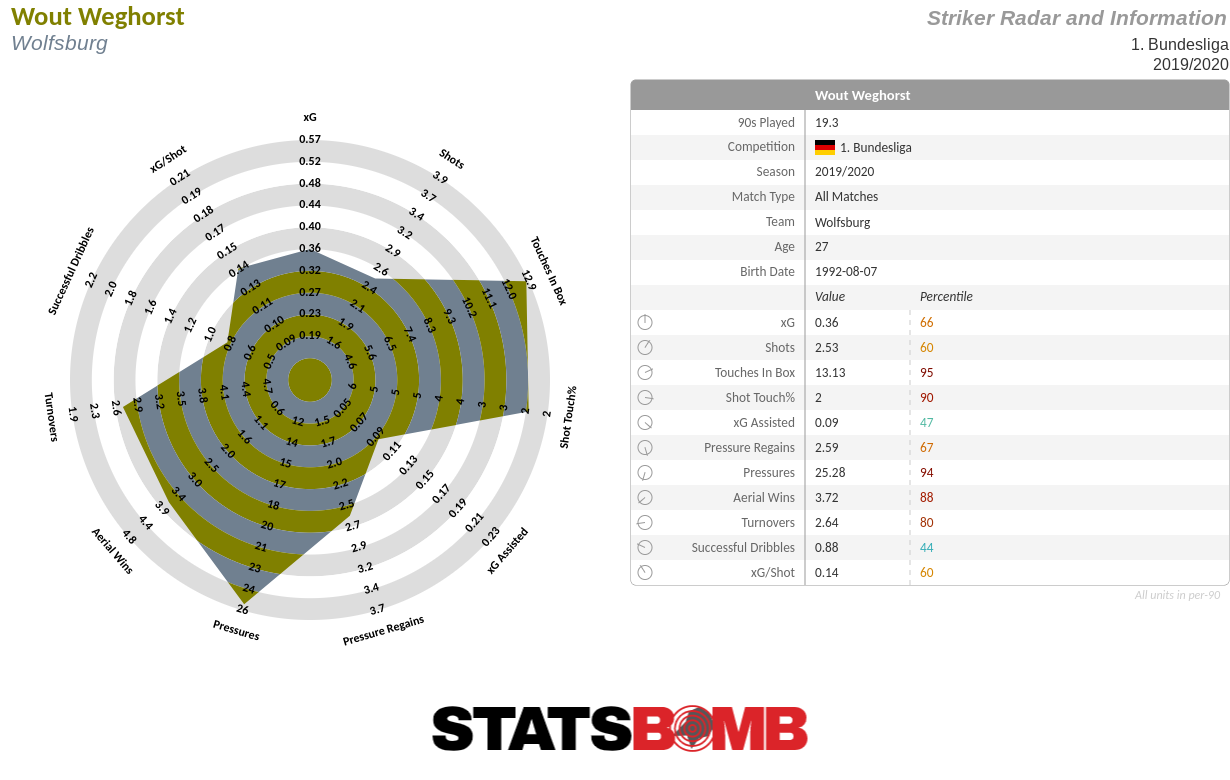 But Wolfsburg has had real trouble providing Weghorst with much-needed creative talent. Glasner rotates five players through the two positions supporting the Dutch forward: João Victor (ex-LASK), the talented but inconsistent Josip Brekalo, Swiss players Admir Mehmedi and Renato Steffen, and utility man Felix Klaus, This fivesome currently boast a disappointing cumulative goal total of six strikes in nineteen Bundesliga matches played. Not good. Finding non-Weghorst goals will be key for a successful second half of the season for Wolfsburg. Hopefully Victor in particular, who is playing well behind his xG numbers, can come good
But Wolfsburg has had real trouble providing Weghorst with much-needed creative talent. Glasner rotates five players through the two positions supporting the Dutch forward: João Victor (ex-LASK), the talented but inconsistent Josip Brekalo, Swiss players Admir Mehmedi and Renato Steffen, and utility man Felix Klaus, This fivesome currently boast a disappointing cumulative goal total of six strikes in nineteen Bundesliga matches played. Not good. Finding non-Weghorst goals will be key for a successful second half of the season for Wolfsburg. Hopefully Victor in particular, who is playing well behind his xG numbers, can come good 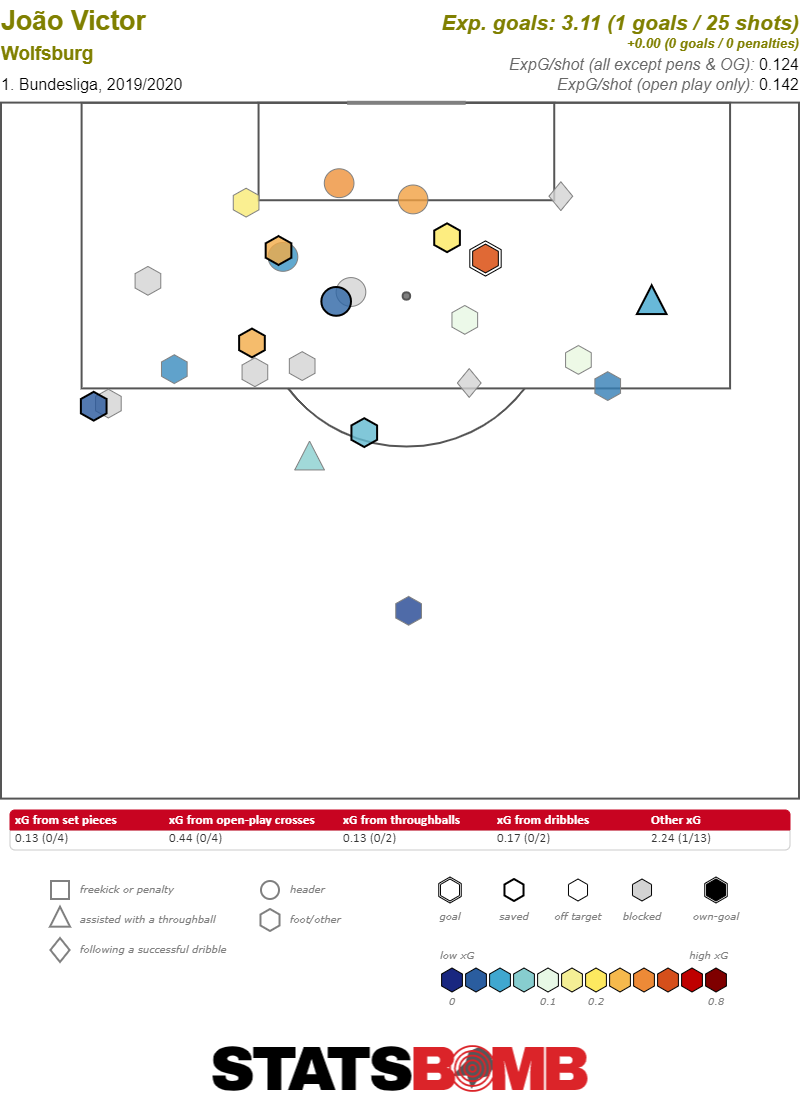
Eintracht Frankfurt
Football can be so weird, y’all. Remember the 5–1 shellacking Eintracht Frankfurt dealt to Bayern München? Well, that happened on November 2nd. 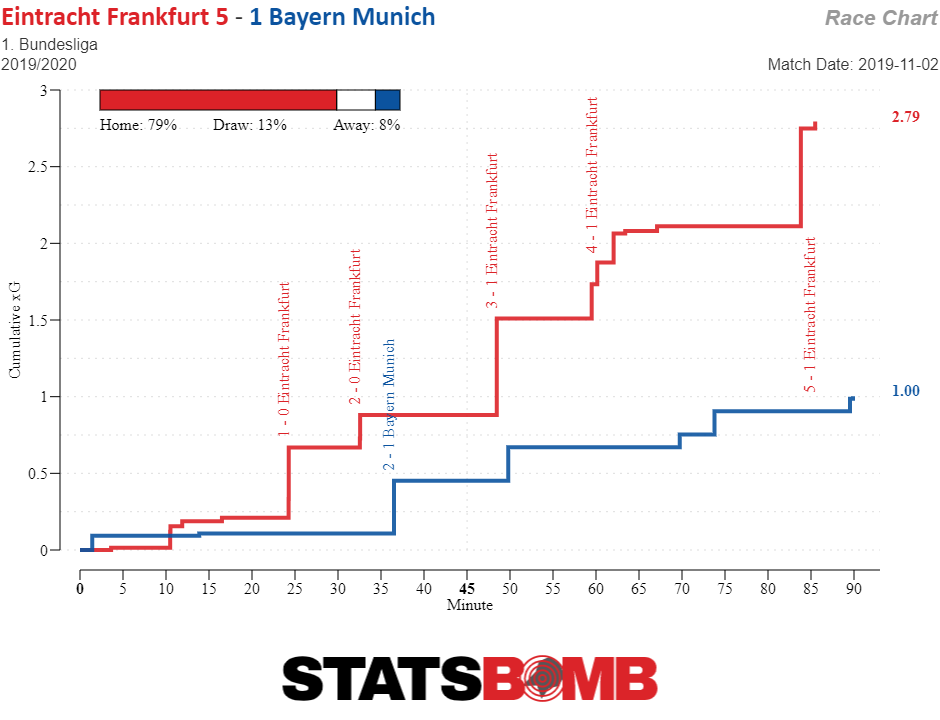 Frankfurt grabbed only one point in the remaining seven league games of 2019. The side's only hope during this horrid run of games was that their level of play — although not good, of course — never dropped to super worrisome depths.
Frankfurt grabbed only one point in the remaining seven league games of 2019. The side's only hope during this horrid run of games was that their level of play — although not good, of course — never dropped to super worrisome depths. 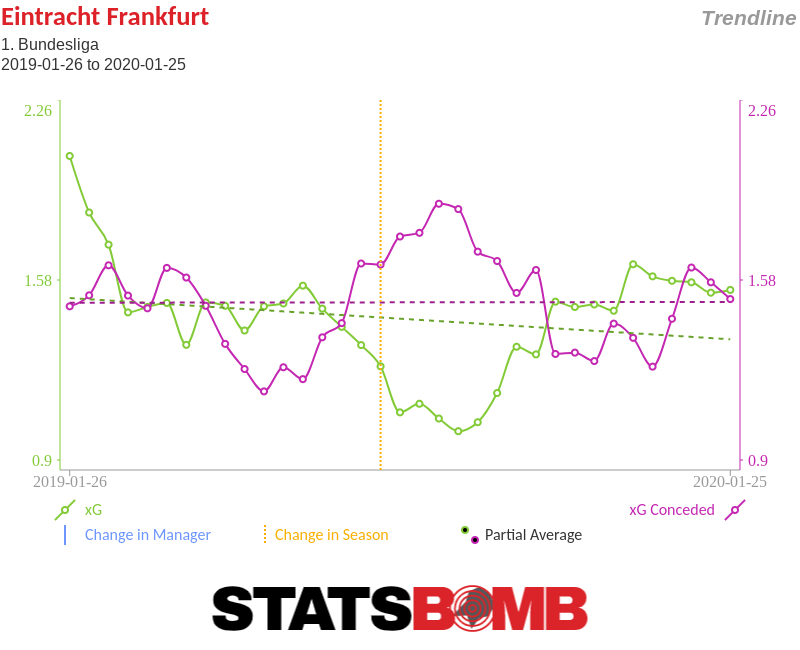 And lo and behold! Frankfurt have stormed out of the gate in 2020. They re-opened their league campaign by beating Hoffenheim 2–1 on their turf, and followed that up with a 2–0 victory against league leaders RB Leipzig. On paper, Eintracht manager Adi Hütter has opted for a much more defensive style than the one at which his team excelled last season. Since the winter break, Hütter has traded in the 3-4-1-2 system for a 4-4-1-1 setup, with Timothy Chandler and Filip Kostić — both wing-backs in the old system — as wingers, and the intense running of Mijat Gaćinović as the only support of central striker Bas Dost.
And lo and behold! Frankfurt have stormed out of the gate in 2020. They re-opened their league campaign by beating Hoffenheim 2–1 on their turf, and followed that up with a 2–0 victory against league leaders RB Leipzig. On paper, Eintracht manager Adi Hütter has opted for a much more defensive style than the one at which his team excelled last season. Since the winter break, Hütter has traded in the 3-4-1-2 system for a 4-4-1-1 setup, with Timothy Chandler and Filip Kostić — both wing-backs in the old system — as wingers, and the intense running of Mijat Gaćinović as the only support of central striker Bas Dost. 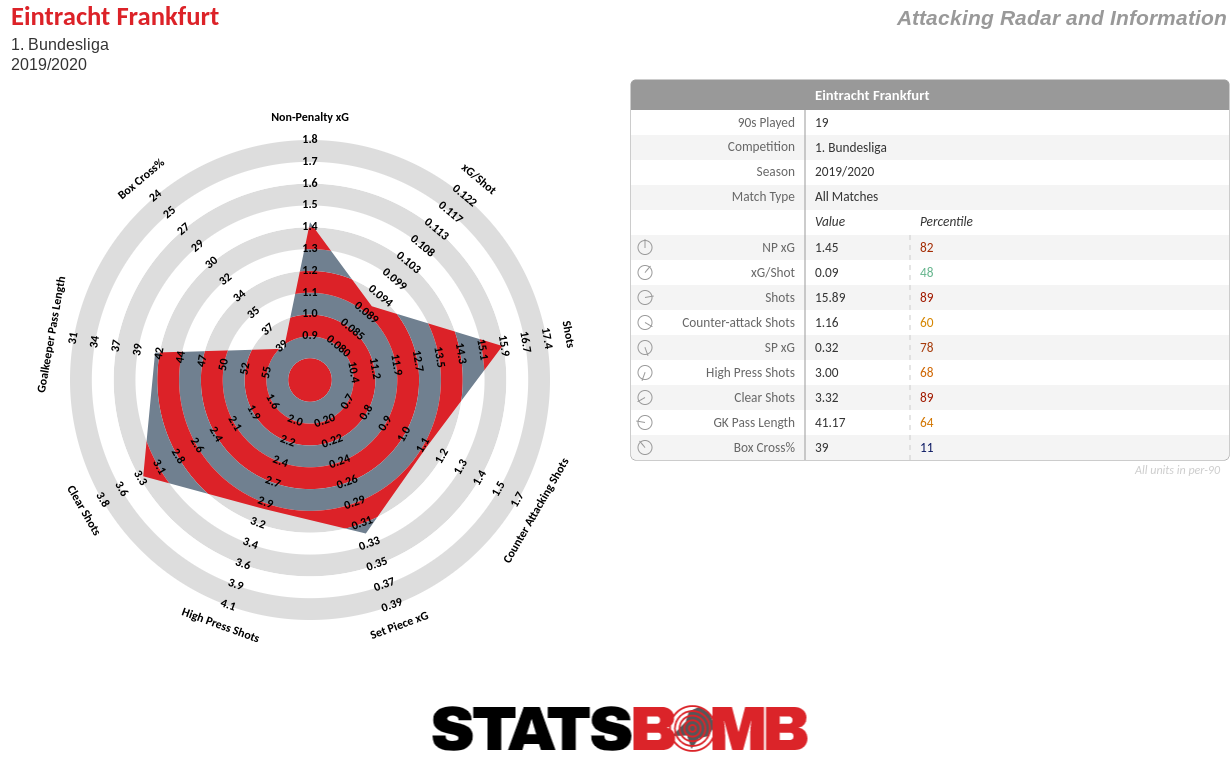 As is often the case, a team’s reality can differ wildly than what's on paper. Powerhouses Bayern and Leipzig, alongside fifth-placed Leverkusen, are the only teams to put up more shots on a per-game basis than Hütter’s heavy-pressing squad (a solid 15.89 per game average). Super impressive, if you take into account that Frankfurt sold their shiniest players — Sébastien Haller (West Ham), Luka Jović (Real Madrid) and Ante Rebić (AC Milan) — this summer, a three-headed offensive monster who accounted for a whopping 41 league goals in 2018–19. The only star player on offense who stayed with Die Adler last summer, Serbian winger Kostić, has been sensational this season. After 19 match weeks, Frankfurt’s leftie is second in the league in key passes (46) and in successful dribbles (53), whilst only Robert Lewandowski and Timo Werner have put up more shots than Kostić (55) so far.
As is often the case, a team’s reality can differ wildly than what's on paper. Powerhouses Bayern and Leipzig, alongside fifth-placed Leverkusen, are the only teams to put up more shots on a per-game basis than Hütter’s heavy-pressing squad (a solid 15.89 per game average). Super impressive, if you take into account that Frankfurt sold their shiniest players — Sébastien Haller (West Ham), Luka Jović (Real Madrid) and Ante Rebić (AC Milan) — this summer, a three-headed offensive monster who accounted for a whopping 41 league goals in 2018–19. The only star player on offense who stayed with Die Adler last summer, Serbian winger Kostić, has been sensational this season. After 19 match weeks, Frankfurt’s leftie is second in the league in key passes (46) and in successful dribbles (53), whilst only Robert Lewandowski and Timo Werner have put up more shots than Kostić (55) so far. 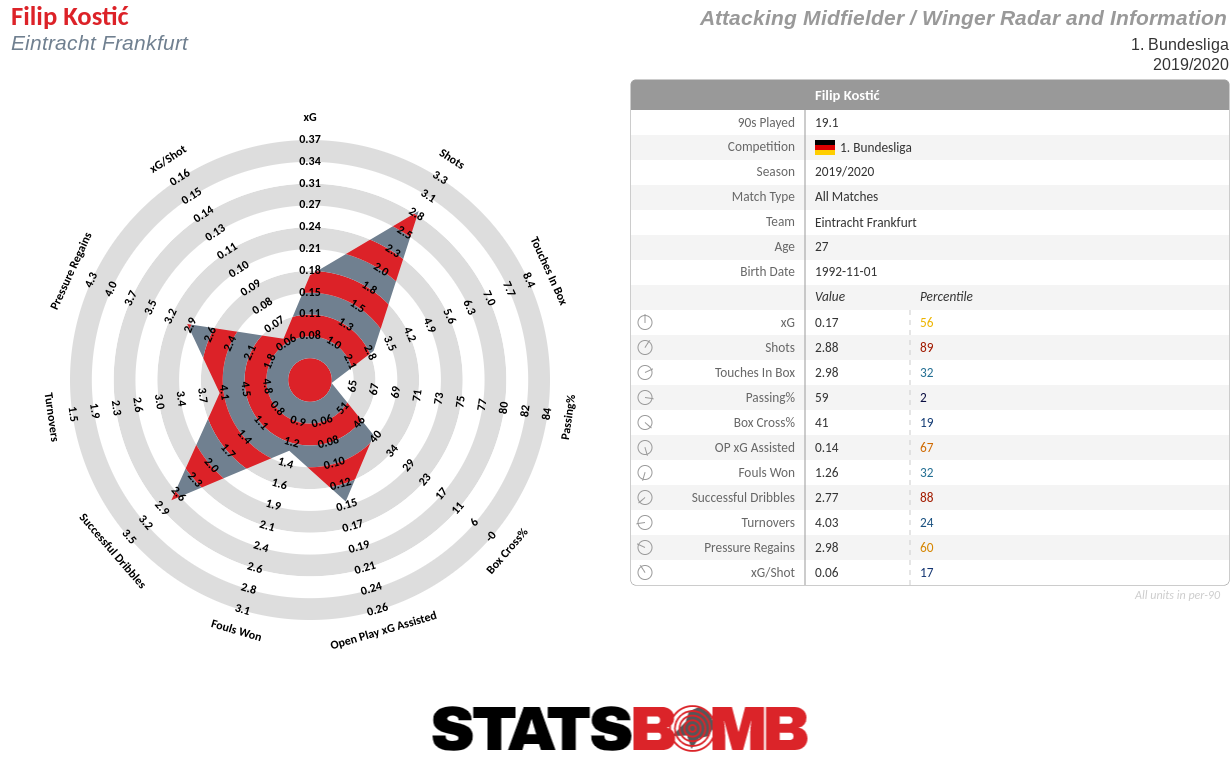 With Hütter seemingly settled on his favourite starting eleven for the coming months, Eintracht’s main concern is improving their set-piece defence. Before the winter break, only Mainz conceded more goals than Frankfurt from corners and free-kicks (8 in 17 games). With Frankfurt playing a free-roving style in open play, a somewhat acceptable goal balance from dead-ball moments is pretty crucial to avoid arcade-like scoring lines. However, much more quietly than last season, Hütter has done well with Frankfurt this year, and their nine-point gap behind sixth-placed Schalke does not seem impossible to close in the remaining fifteen weeks.
With Hütter seemingly settled on his favourite starting eleven for the coming months, Eintracht’s main concern is improving their set-piece defence. Before the winter break, only Mainz conceded more goals than Frankfurt from corners and free-kicks (8 in 17 games). With Frankfurt playing a free-roving style in open play, a somewhat acceptable goal balance from dead-ball moments is pretty crucial to avoid arcade-like scoring lines. However, much more quietly than last season, Hütter has done well with Frankfurt this year, and their nine-point gap behind sixth-placed Schalke does not seem impossible to close in the remaining fifteen weeks.

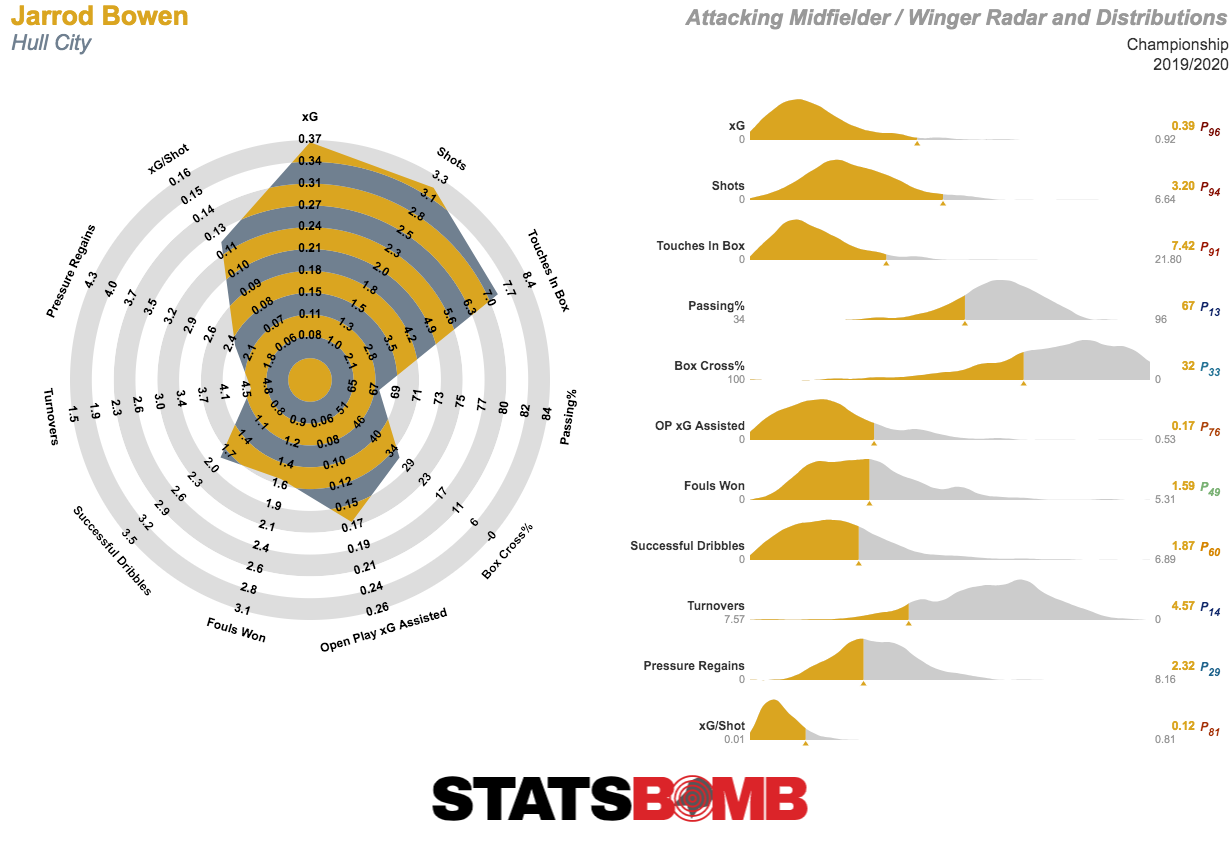
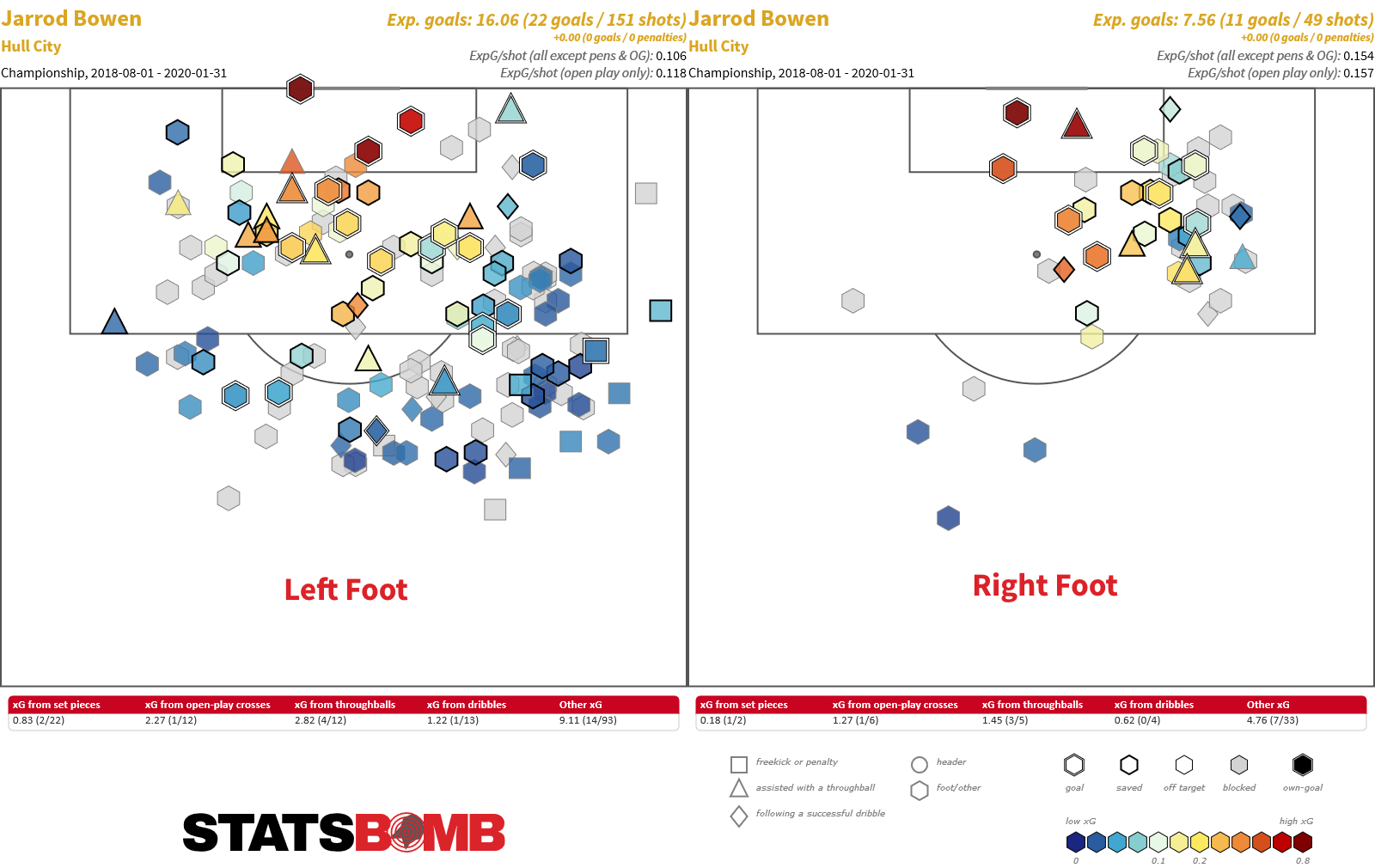
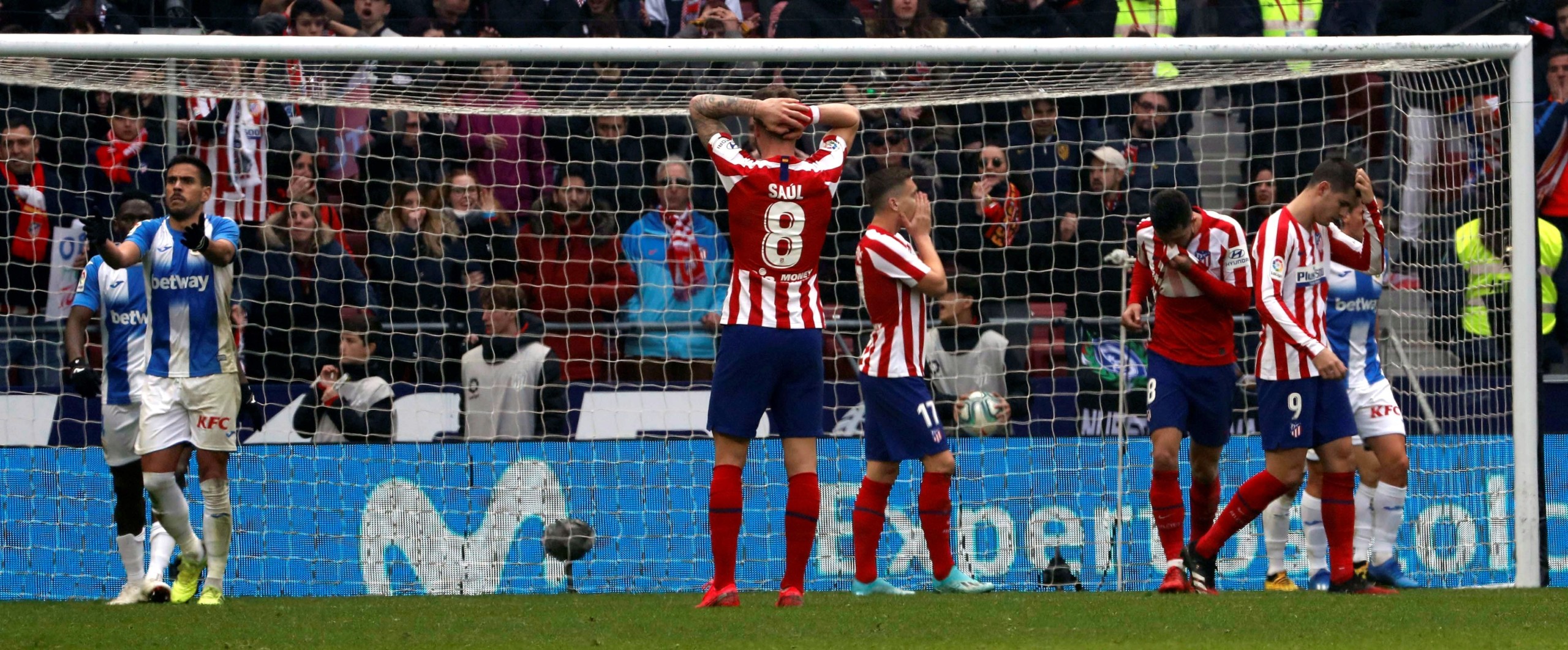
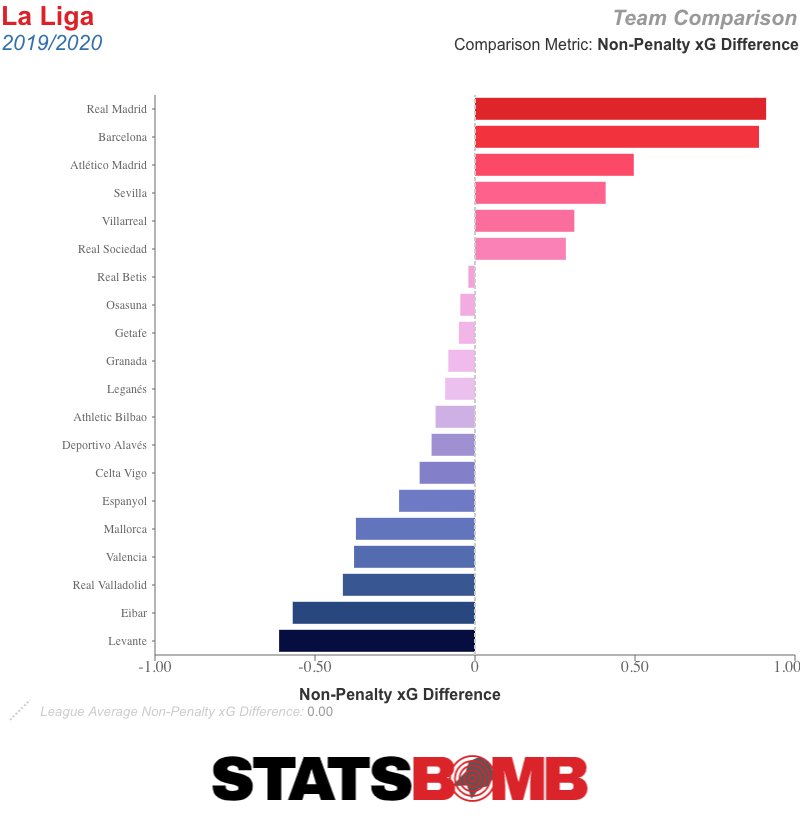 Their underlying numbers have not only improved as the campaign has gone on, but are actually stronger than those that led them to second place last season.
Their underlying numbers have not only improved as the campaign has gone on, but are actually stronger than those that led them to second place last season.  The problem is their significant underperformance in attack. Atlético generate an above-average number of good quality shots, but for one reason or another fail to finish at an acceptable rate. They are over seven goals worse off than their xG and have converted just one of their three penalties.
The problem is their significant underperformance in attack. Atlético generate an above-average number of good quality shots, but for one reason or another fail to finish at an acceptable rate. They are over seven goals worse off than their xG and have converted just one of their three penalties.  Ángel Correa, Álvaro Morata, Diego Costa, João Félix: all have underperformed their xG this season. It’s as if some malign force has swept in and made off with all their shooting boots. It would be reasonable to assume this kind of finishing run won’t hold through the remainder of the campaign. Even just matching their underlying numbers would help Atlético turn some of their draws into victories and in turn gain them the points they need to secure their eighth consecutive season of Champions League football. If it does hold, they’ll be reliant on the failure of others around them to take advantage.
Ángel Correa, Álvaro Morata, Diego Costa, João Félix: all have underperformed their xG this season. It’s as if some malign force has swept in and made off with all their shooting boots. It would be reasonable to assume this kind of finishing run won’t hold through the remainder of the campaign. Even just matching their underlying numbers would help Atlético turn some of their draws into victories and in turn gain them the points they need to secure their eighth consecutive season of Champions League football. If it does hold, they’ll be reliant on the failure of others around them to take advantage. 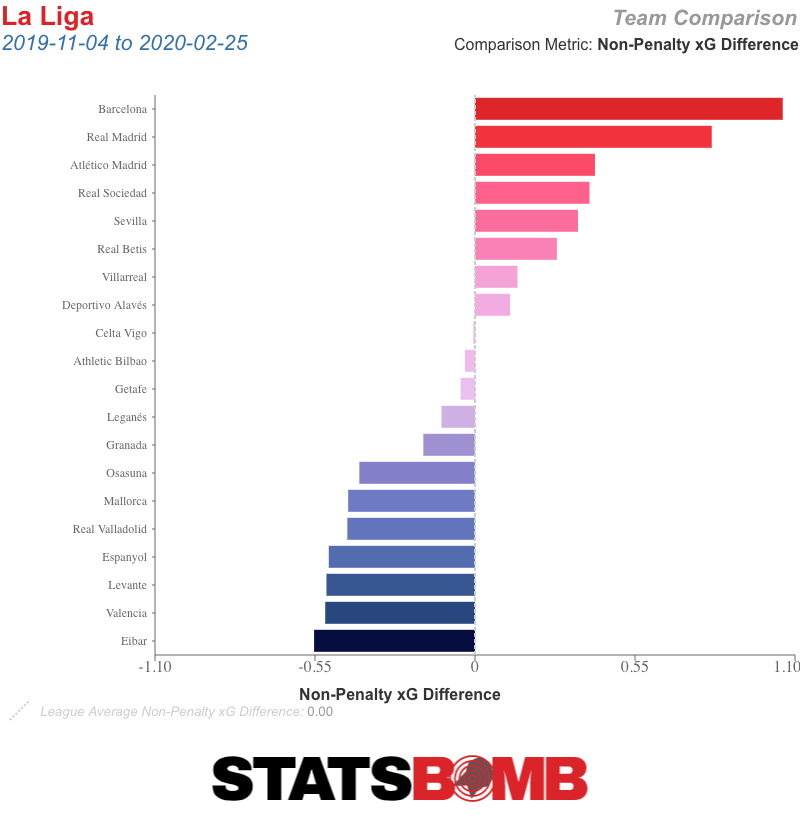 With Getafe, Atlético Madrid and Real Sociedad to come in three of their next four matches, their position is unlikely to look quite so healthy in a month’s time.
With Getafe, Atlético Madrid and Real Sociedad to come in three of their next four matches, their position is unlikely to look quite so healthy in a month’s time.  How will Osasuna replace him? At least they have a very solid combined shot volume from their two wide players, Roberto Torres and Rubén García.
How will Osasuna replace him? At least they have a very solid combined shot volume from their two wide players, Roberto Torres and Rubén García. 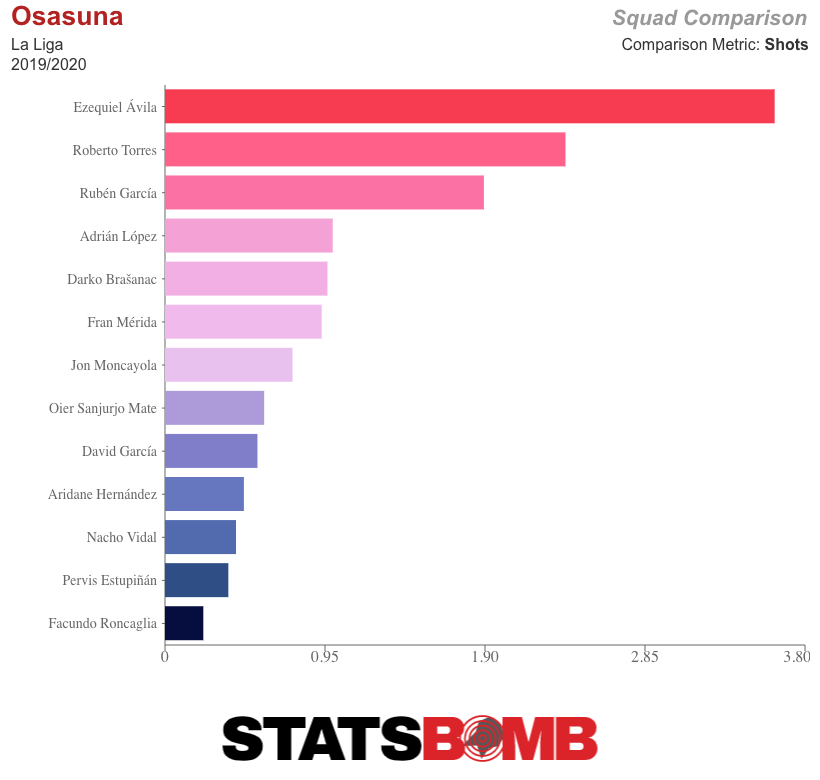 But they don’t have another forward with the bullish determination to create shots that makes Ávila such an asset. That certainly isn’t the natural game of Adrián López or Brandon. Marc Cardona has posted solid volume here and there but nothing concrete. On Tuesday, Osasuna announced the initial loan signing (and,
But they don’t have another forward with the bullish determination to create shots that makes Ávila such an asset. That certainly isn’t the natural game of Adrián López or Brandon. Marc Cardona has posted solid volume here and there but nothing concrete. On Tuesday, Osasuna announced the initial loan signing (and, 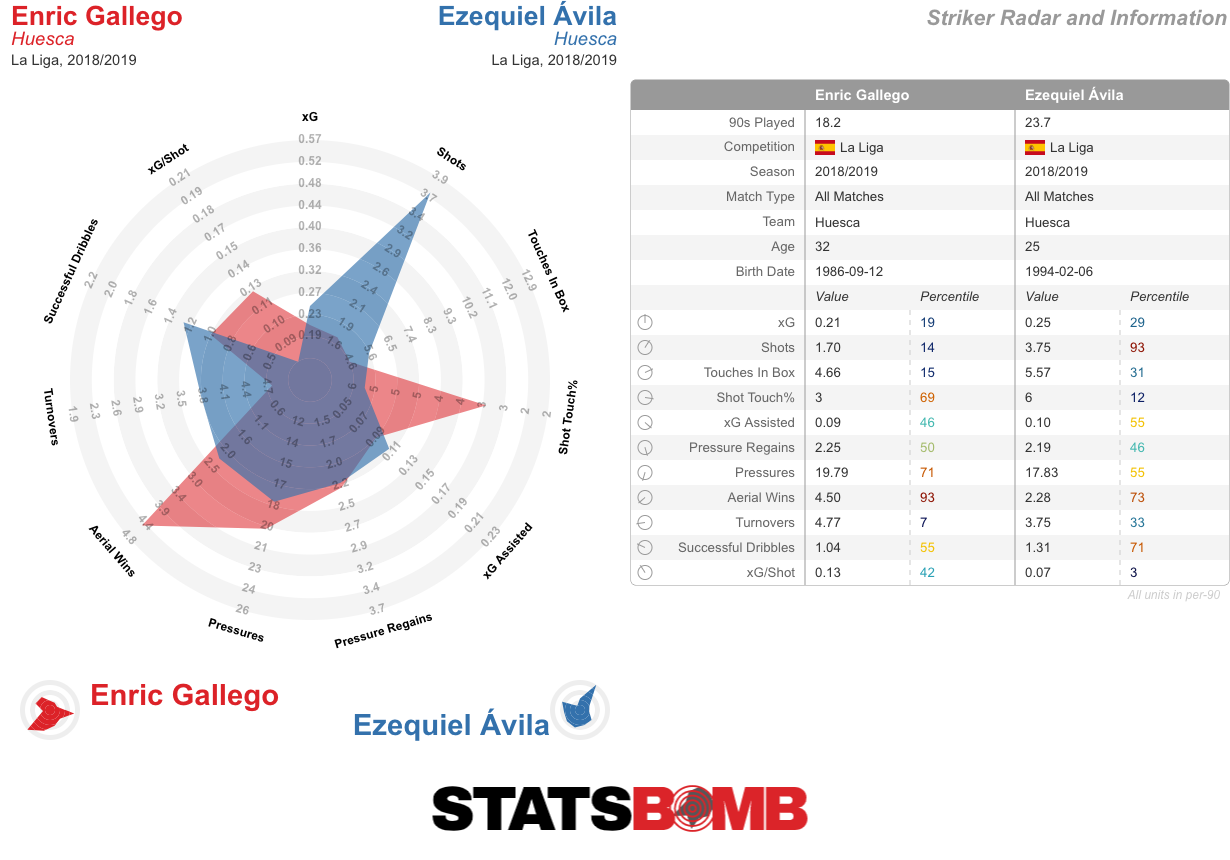 Thankfully for Osasuna their good first half of the season has given them plenty of margin for error.
Thankfully for Osasuna their good first half of the season has given them plenty of margin for error. 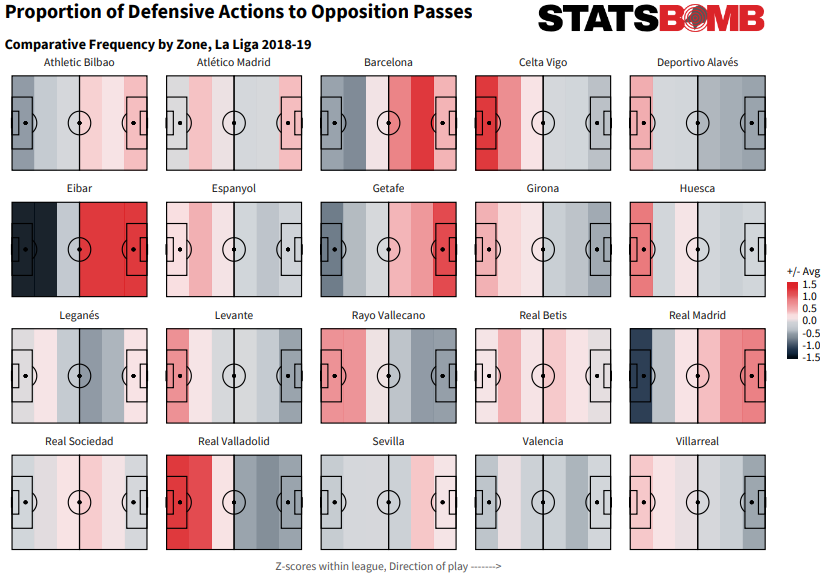 Getafe have ramped that up even further. The opposition half is an alizarin ocean.
Getafe have ramped that up even further. The opposition half is an alizarin ocean. 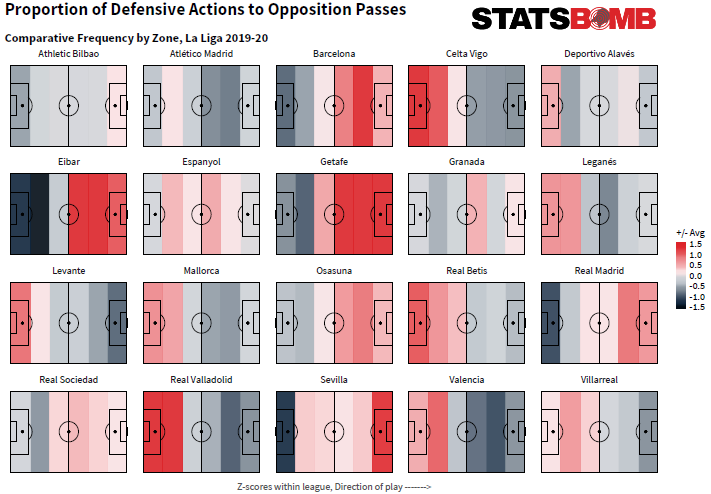 Getafe defend higher and more aggressively than any other side in La Liga, and concede over two shots less per match than they did last season. Bordalás has crafted a supreme shot-suppression machine.
Getafe defend higher and more aggressively than any other side in La Liga, and concede over two shots less per match than they did last season. Bordalás has crafted a supreme shot-suppression machine. 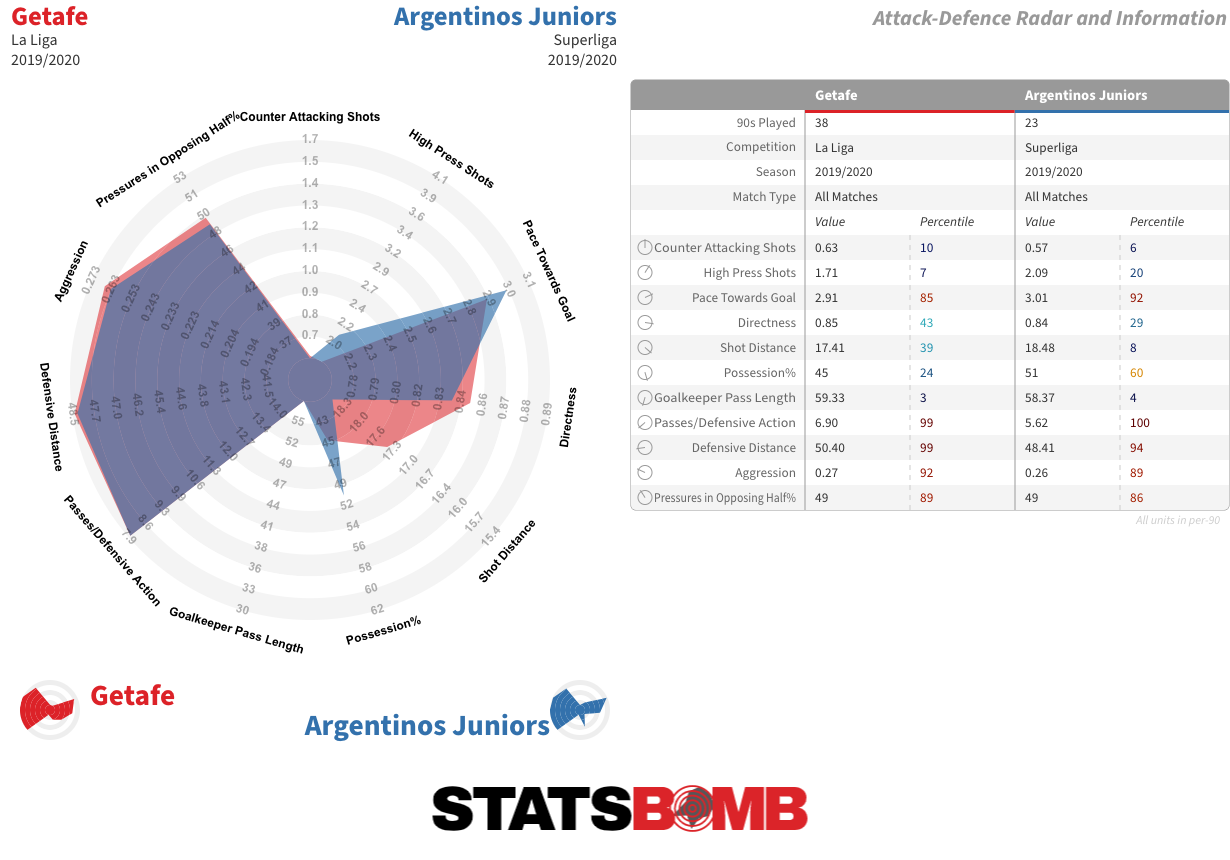 Our
Our 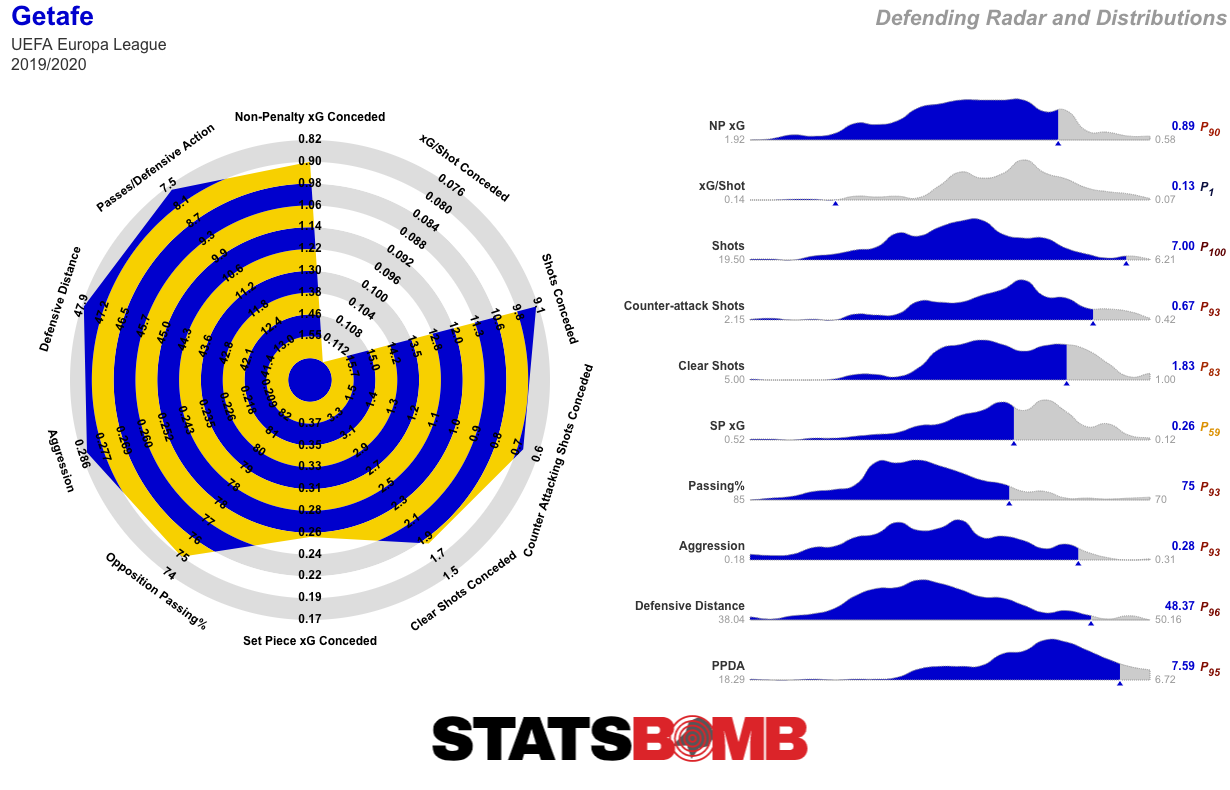 Header image courtesy of the press association
Header image courtesy of the press association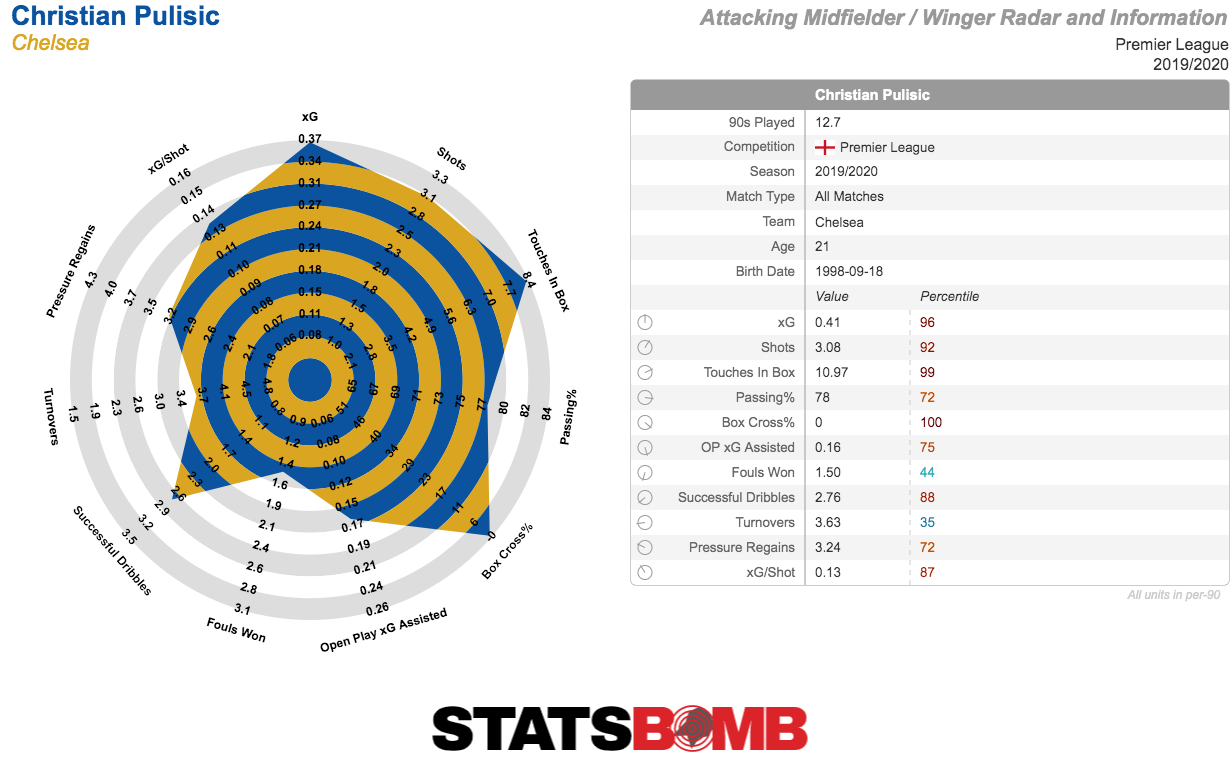
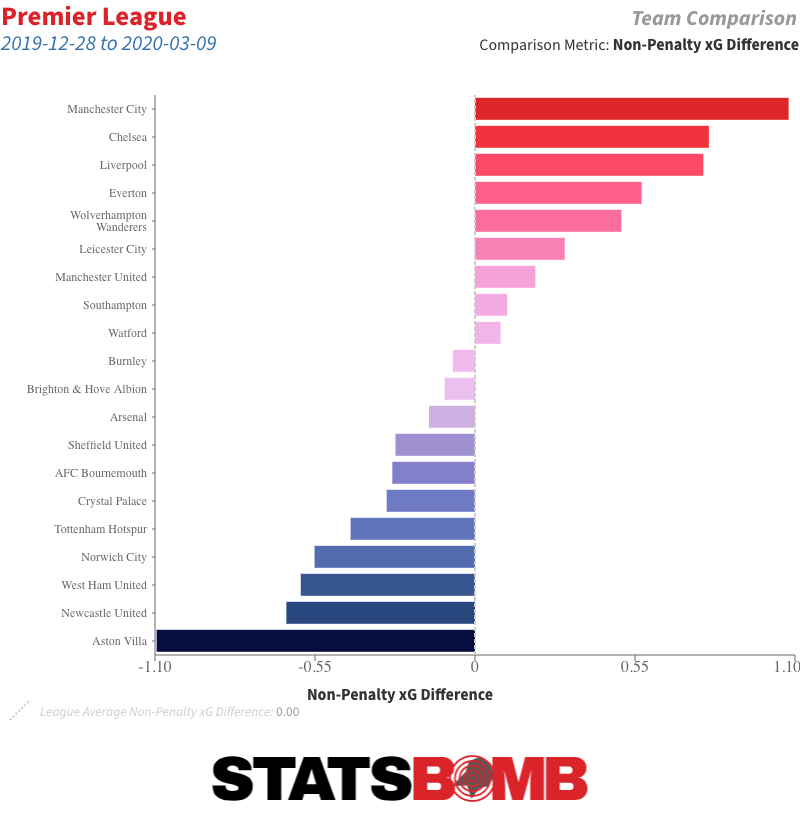
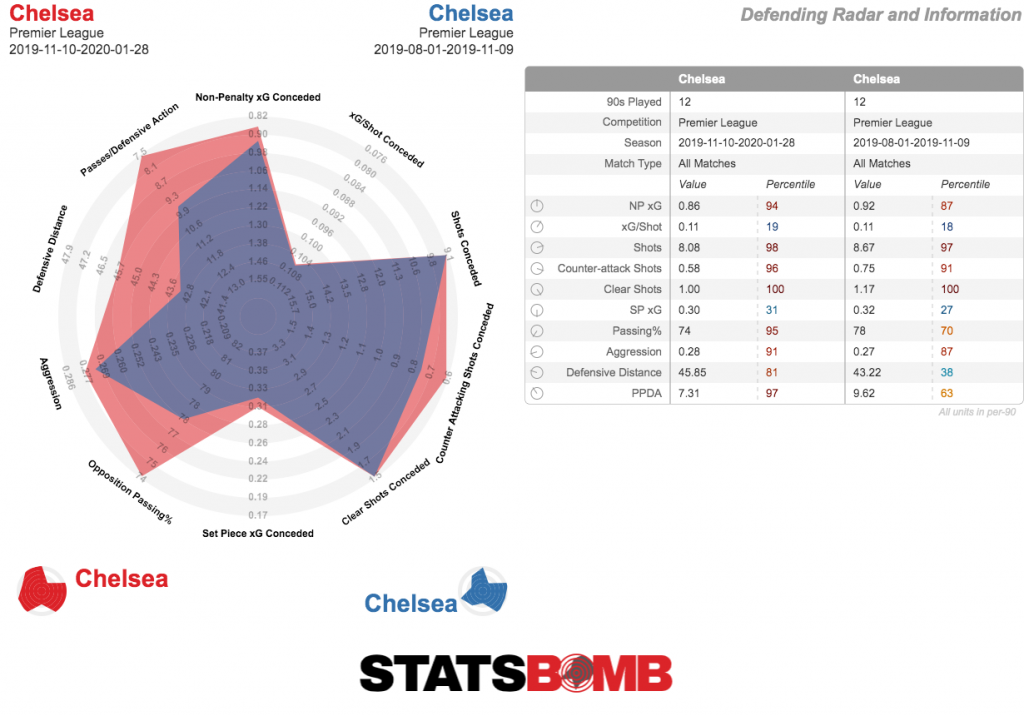
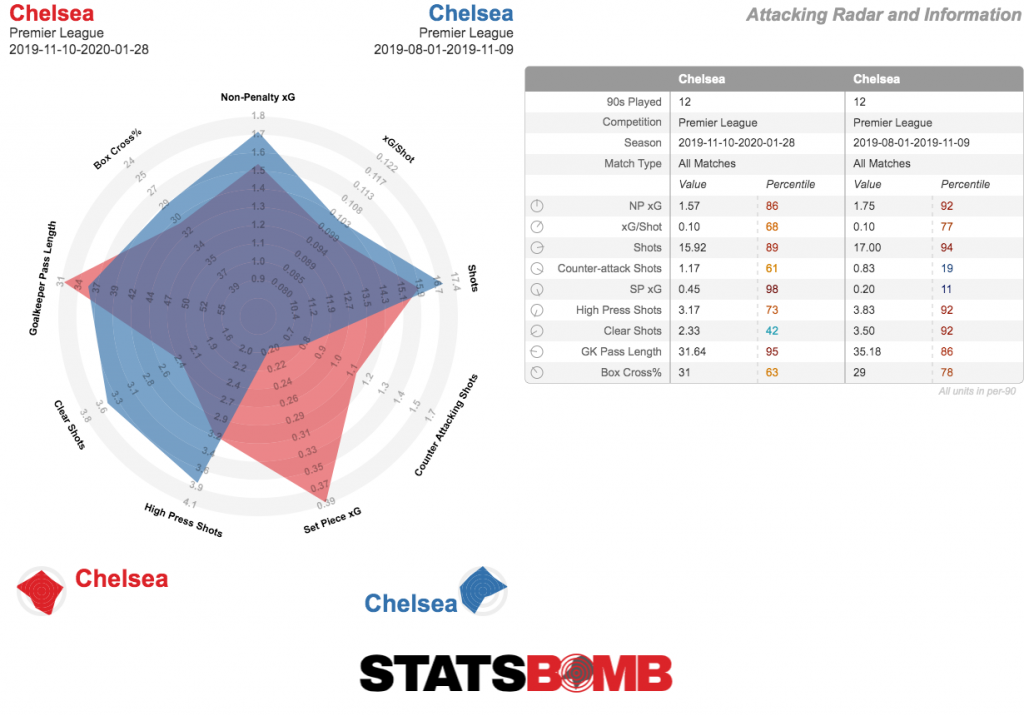
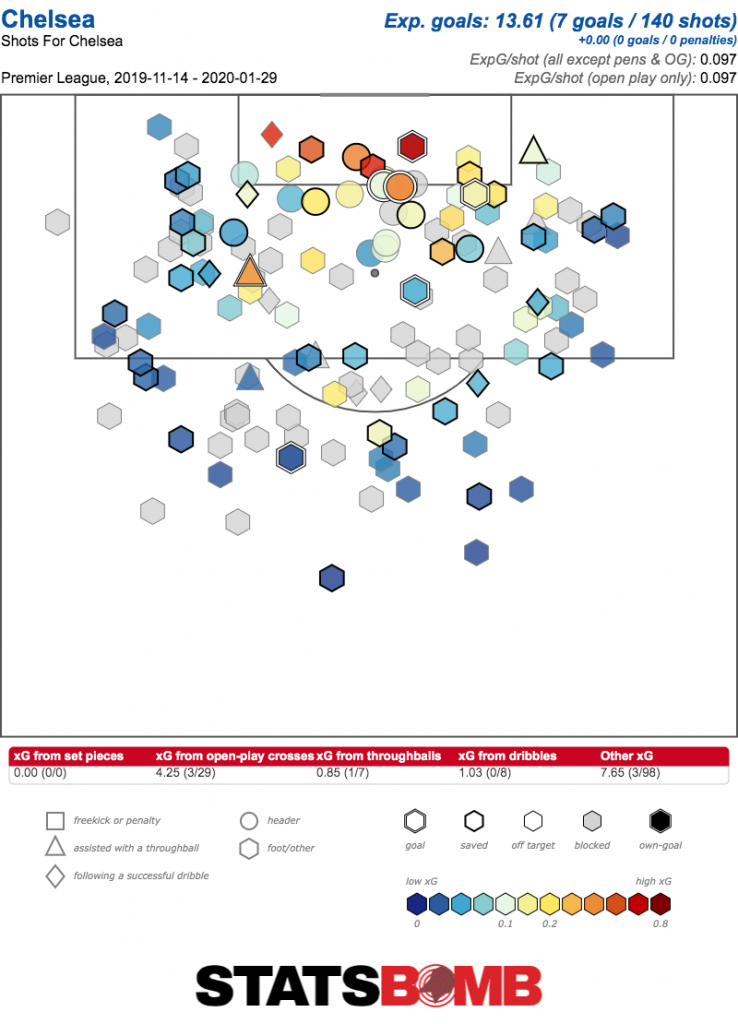
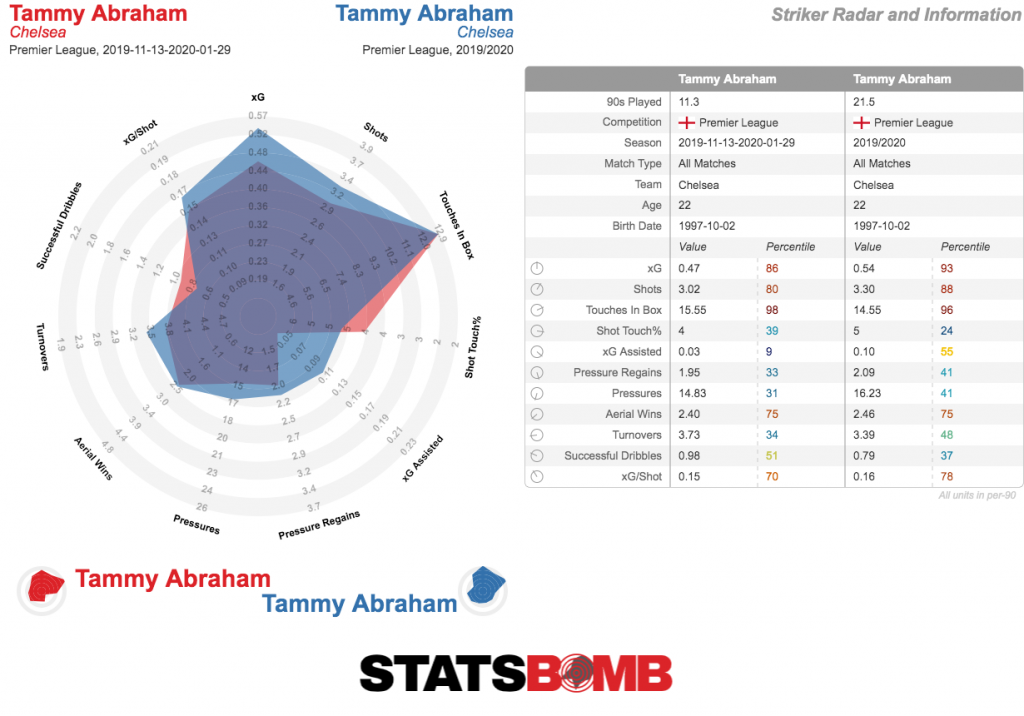
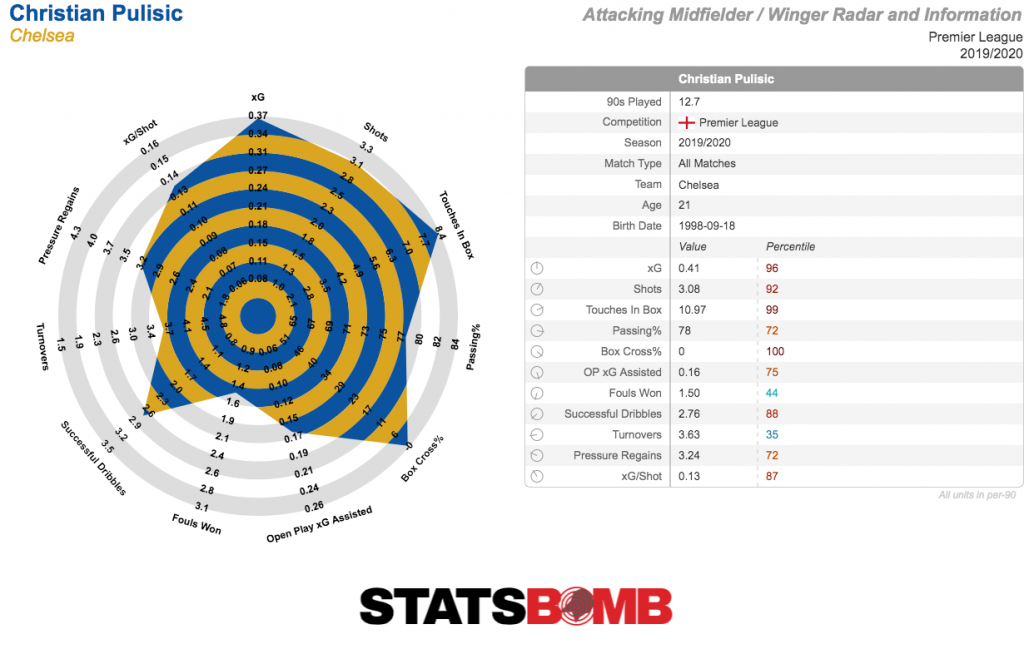
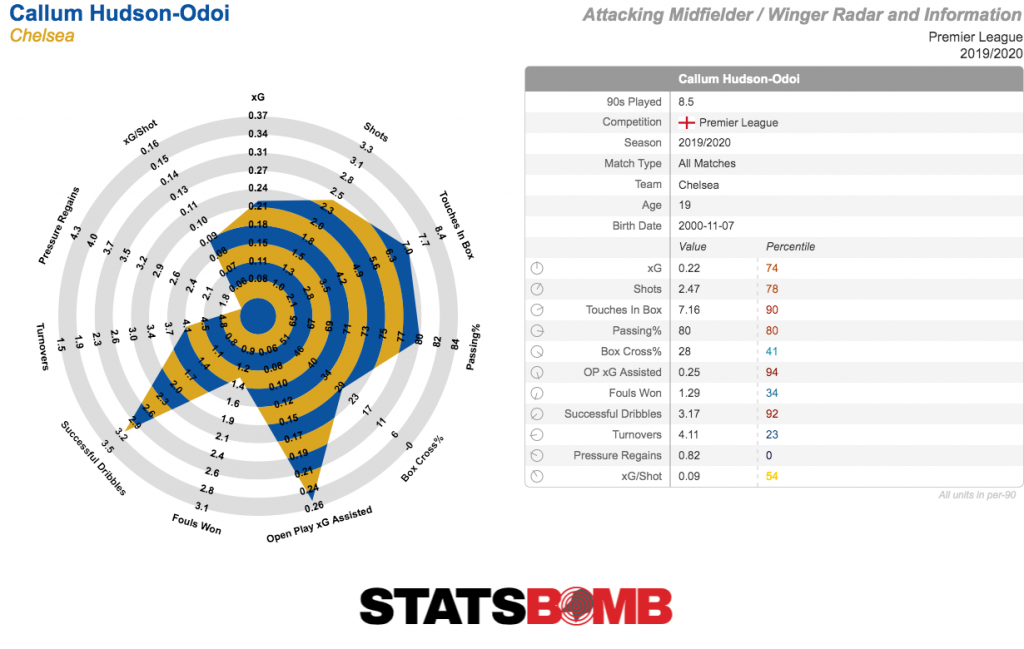
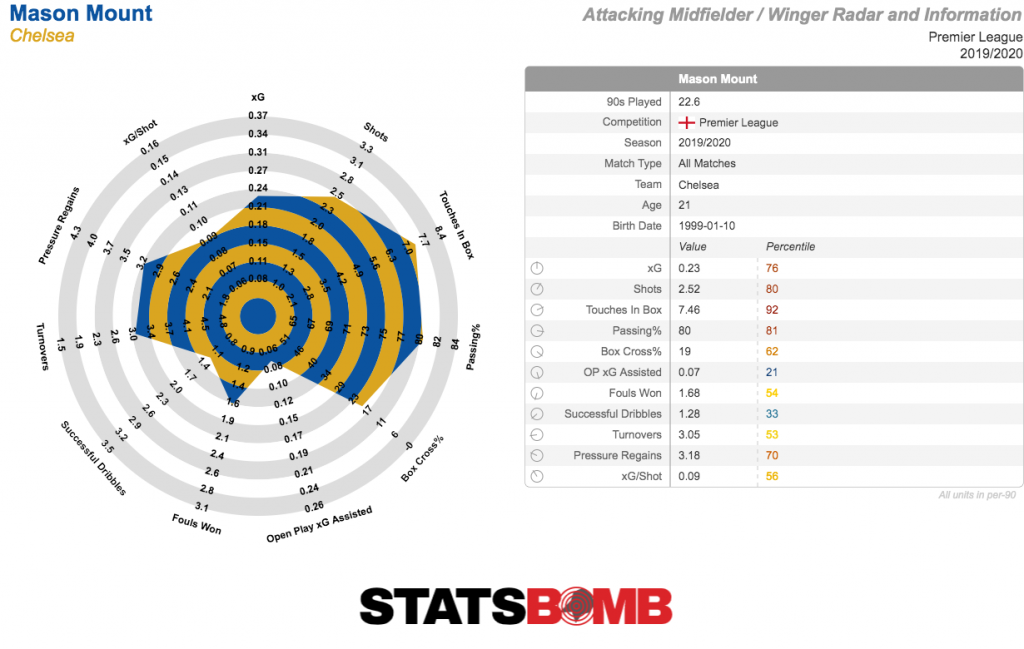
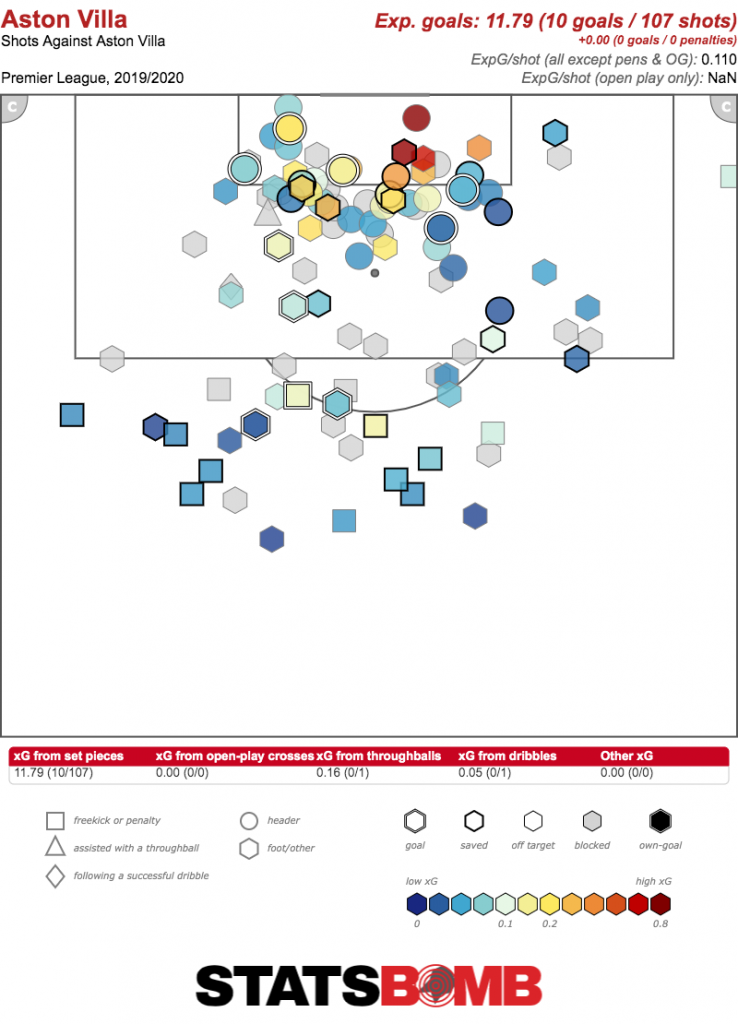
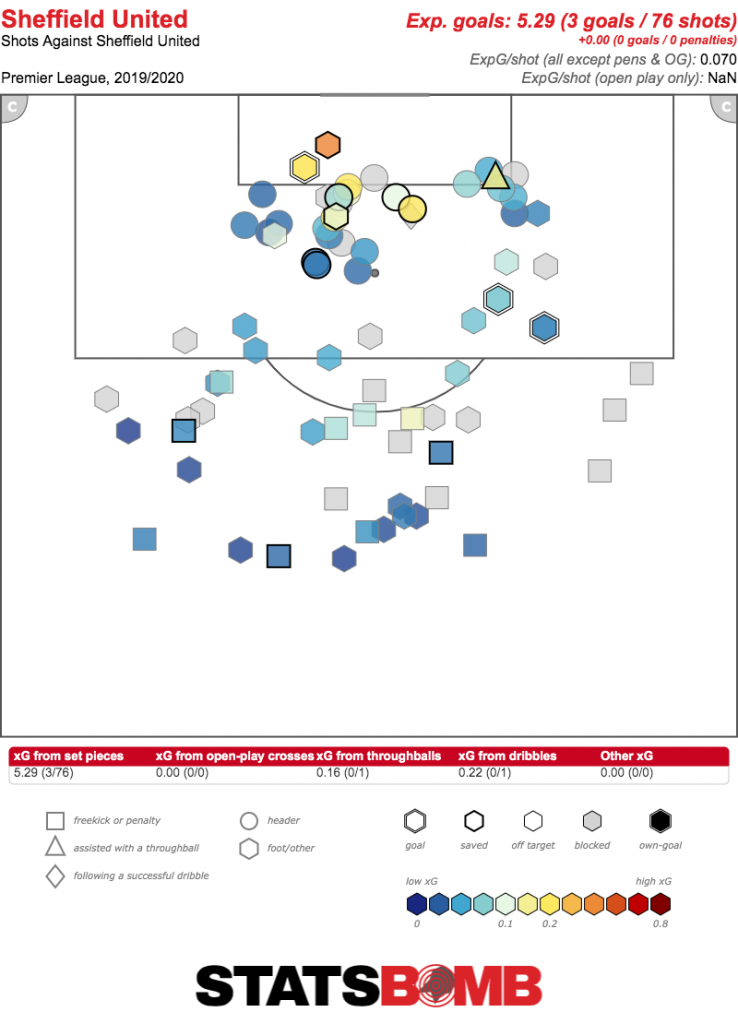
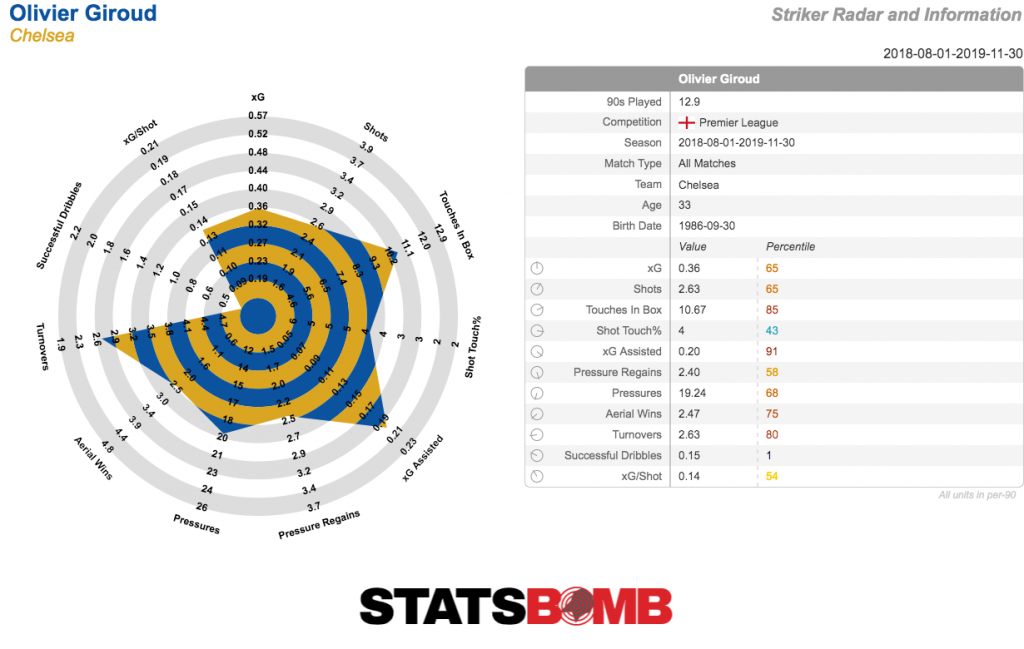
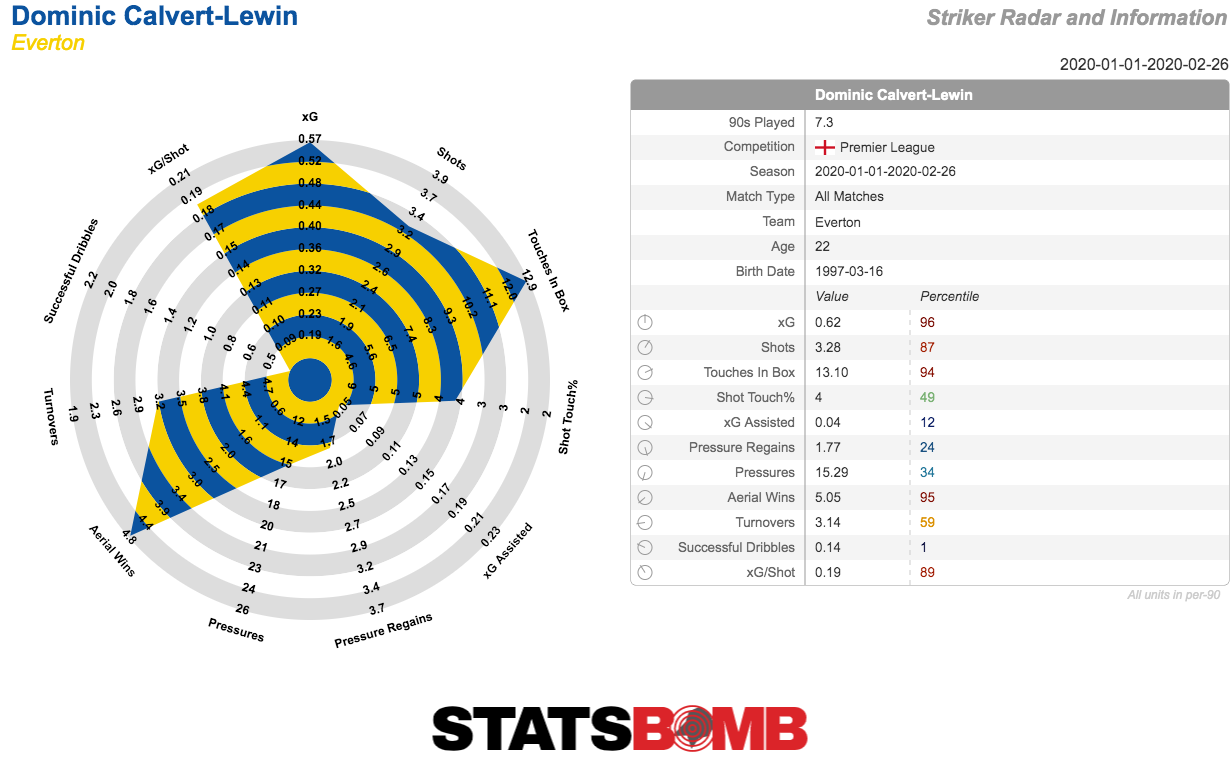
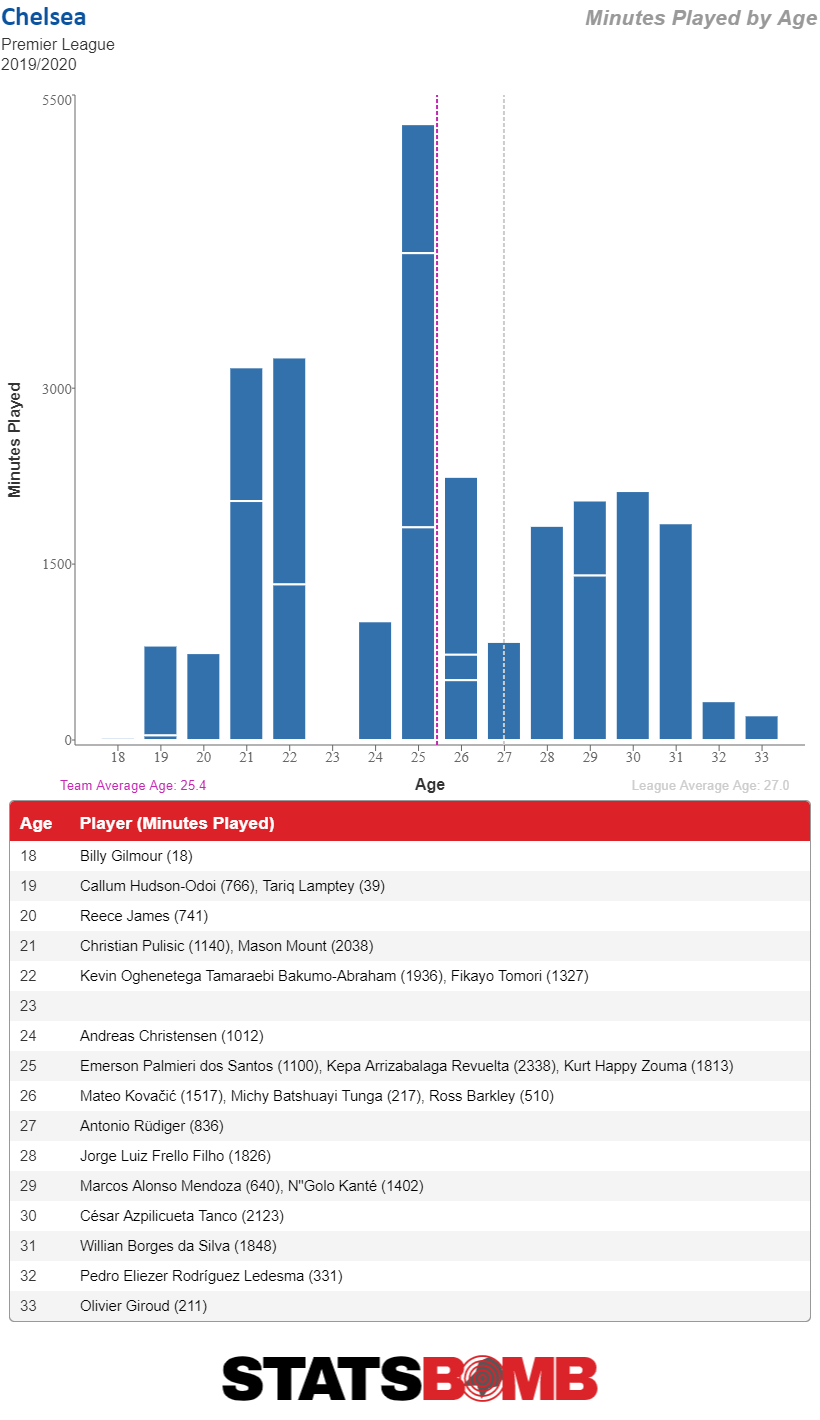 Abraham in particular has turned into one of the best pure strikers in the league. He’s fourth in the Premier League in xG per 90 with 0.54, thanks to a classic striker mix of taking a lot of shots (his 3.30 is fifth in the league) and keeping those shots high quality. Of the 20 highest volume shooters in the league, only Danny Ings of Southampton and Gabriel Jesus at Manchester City have a better xG per shot than Abraham’s 0.16. He’s just really really good.
Abraham in particular has turned into one of the best pure strikers in the league. He’s fourth in the Premier League in xG per 90 with 0.54, thanks to a classic striker mix of taking a lot of shots (his 3.30 is fifth in the league) and keeping those shots high quality. Of the 20 highest volume shooters in the league, only Danny Ings of Southampton and Gabriel Jesus at Manchester City have a better xG per shot than Abraham’s 0.16. He’s just really really good. 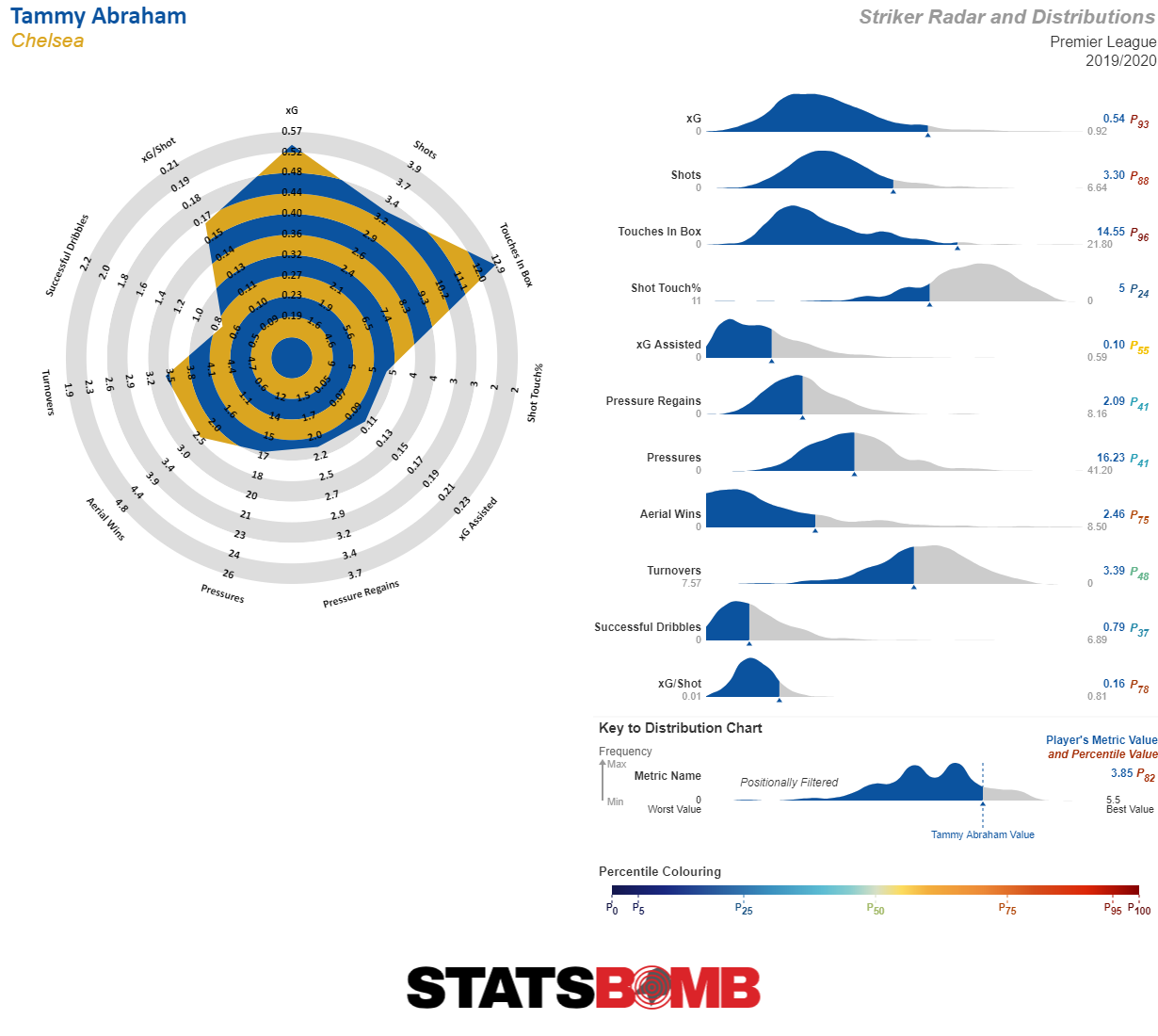 Manchester United and Arsenal are similarly undergoing their own forms of youth movements, although for reasons somewhat less clear than Chelsea’s transfer ban. United spent large on defenders last summer, bringing in Harry Maguire and Aaron Wan-Bissaka while letting go of Romelu Lukaku and Alexis Sánchez (though, granted, the two are at very different points in their careers and have had very different fates at Inter Milan). Of their young players, only Marcus Rashford makes the 0.30 cutoff, with a 0.49 combined xG and xG assisted a respectable fourth among the kids, behind only Gabriel Jesus, Abraham, a surprise player who we’ll get to in a second, and Pulisic. Daniel James just about sneaks on at the very end of this list at 0.31 combined stats. It’s also worth noting that Mason Greenwood just misses the minutes cutoff, or else he would join James at 0.31, so if he continues to produce in the minutes he’s given expect him on the list if it's revisited at the end of the season. For Arsenal, it’s Gabriel Martinelli who appears on the list although he barely makes the minutes cut. Still, at only 18 years old, his 0.35 combined numbers are a bright sign, placing him eighth on the list. It’s also understandable that Arsenal, despite playing their kids, have just one player on this list and it's an attacker with limited minutes. They do still have Pierre-Emerick Aubameyang, Alexandre Lacazette and Mesut Özil on the books after all. Most of their kids are, to one degree or another, midfielders.
Manchester United and Arsenal are similarly undergoing their own forms of youth movements, although for reasons somewhat less clear than Chelsea’s transfer ban. United spent large on defenders last summer, bringing in Harry Maguire and Aaron Wan-Bissaka while letting go of Romelu Lukaku and Alexis Sánchez (though, granted, the two are at very different points in their careers and have had very different fates at Inter Milan). Of their young players, only Marcus Rashford makes the 0.30 cutoff, with a 0.49 combined xG and xG assisted a respectable fourth among the kids, behind only Gabriel Jesus, Abraham, a surprise player who we’ll get to in a second, and Pulisic. Daniel James just about sneaks on at the very end of this list at 0.31 combined stats. It’s also worth noting that Mason Greenwood just misses the minutes cutoff, or else he would join James at 0.31, so if he continues to produce in the minutes he’s given expect him on the list if it's revisited at the end of the season. For Arsenal, it’s Gabriel Martinelli who appears on the list although he barely makes the minutes cut. Still, at only 18 years old, his 0.35 combined numbers are a bright sign, placing him eighth on the list. It’s also understandable that Arsenal, despite playing their kids, have just one player on this list and it's an attacker with limited minutes. They do still have Pierre-Emerick Aubameyang, Alexandre Lacazette and Mesut Özil on the books after all. Most of their kids are, to one degree or another, midfielders. 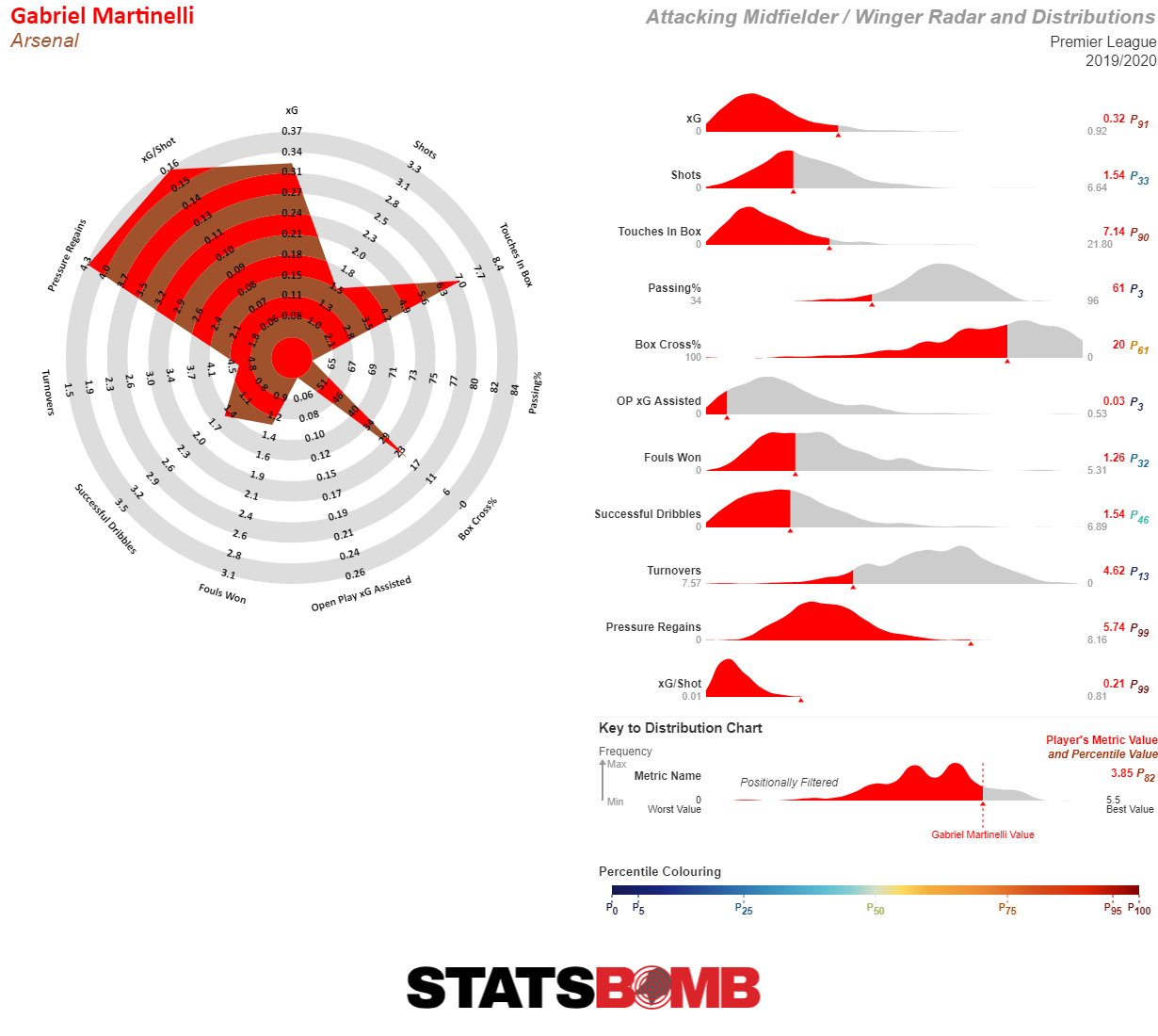 Rounding out the top portion of the table, there’s Jesus at Manchester City who sits atop the list. He's putting up monster stats, as he always does, 0.86 combined xG and xG assisted while also missing tons of shots. The distribution of his numbers is fairly comical with him missing more than expected, averaging (a still obscenely high) 0.63 goals per 90 and an even obscenely higher 0.73 xG per 90 but making up for it by scoring 0.28 assists per 90 despite assisting only 0.09 xG per 90.
Rounding out the top portion of the table, there’s Jesus at Manchester City who sits atop the list. He's putting up monster stats, as he always does, 0.86 combined xG and xG assisted while also missing tons of shots. The distribution of his numbers is fairly comical with him missing more than expected, averaging (a still obscenely high) 0.63 goals per 90 and an even obscenely higher 0.73 xG per 90 but making up for it by scoring 0.28 assists per 90 despite assisting only 0.09 xG per 90. 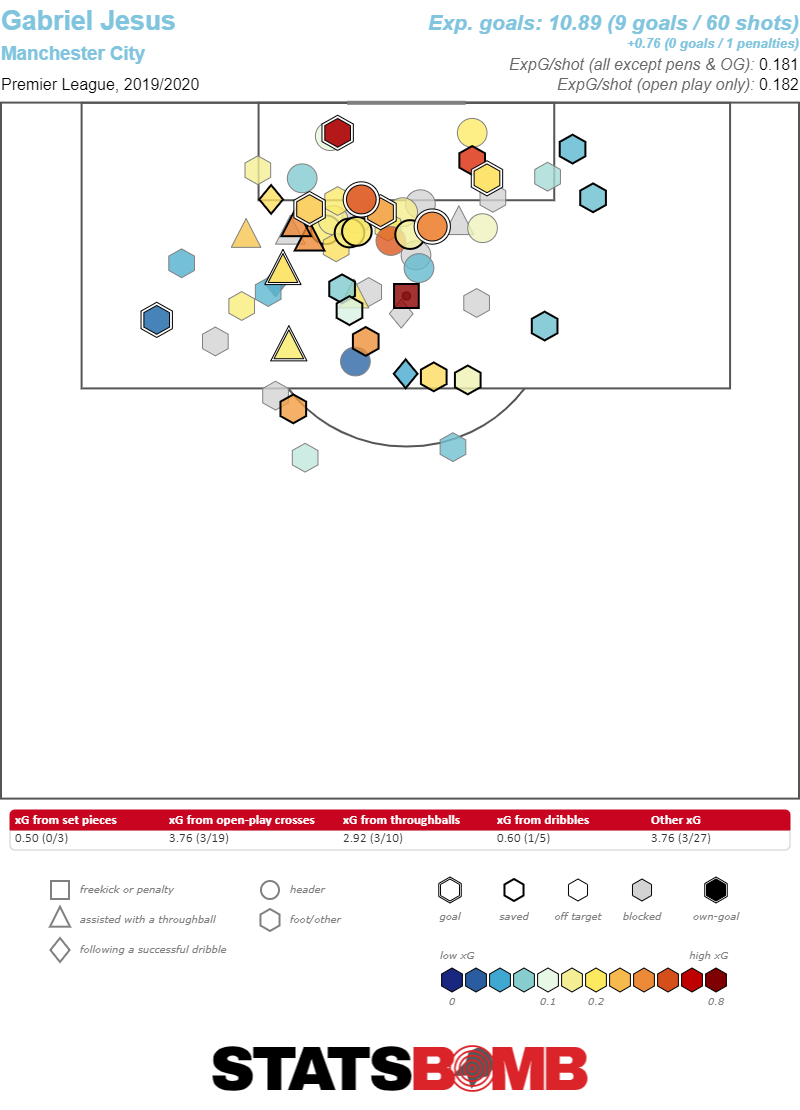 Meanwhile, in the kind of age distribution you might expect from an upstart, Leicester City have Harvey Barnes sitting seventh on the list with a robust 0.48, Wolves have Pedro Neto in limited minutes on 0.40 in ninth and then in 11th there’s Liverpool’s assist machine, Trent Alexander-Arnold, with 0.37. But, part of what makes this season so special is that the super talented kids are not restricted to the top of the table (not even when I generously include midtable big six club Arsenal as an honorary member of the top of the table list). Everton, in fact, have three separate attackers on the list, second to only Chelsea. The standout is our mystery player from earlier in the piece, Dominic Calvert-Lewin, who has quietly turned himself into one of the better pure strikers in the Premier League. Not only is he fourth among young players in combined xG and xG assisted with 0.53, but his xG per 90 of 0.48 places him seventh overall. That puts him ahead of players like Jamie Vardy, Marcus Rashford, and Harry Kane, just to name a few players not selected at random at all.
Meanwhile, in the kind of age distribution you might expect from an upstart, Leicester City have Harvey Barnes sitting seventh on the list with a robust 0.48, Wolves have Pedro Neto in limited minutes on 0.40 in ninth and then in 11th there’s Liverpool’s assist machine, Trent Alexander-Arnold, with 0.37. But, part of what makes this season so special is that the super talented kids are not restricted to the top of the table (not even when I generously include midtable big six club Arsenal as an honorary member of the top of the table list). Everton, in fact, have three separate attackers on the list, second to only Chelsea. The standout is our mystery player from earlier in the piece, Dominic Calvert-Lewin, who has quietly turned himself into one of the better pure strikers in the Premier League. Not only is he fourth among young players in combined xG and xG assisted with 0.53, but his xG per 90 of 0.48 places him seventh overall. That puts him ahead of players like Jamie Vardy, Marcus Rashford, and Harry Kane, just to name a few players not selected at random at all. 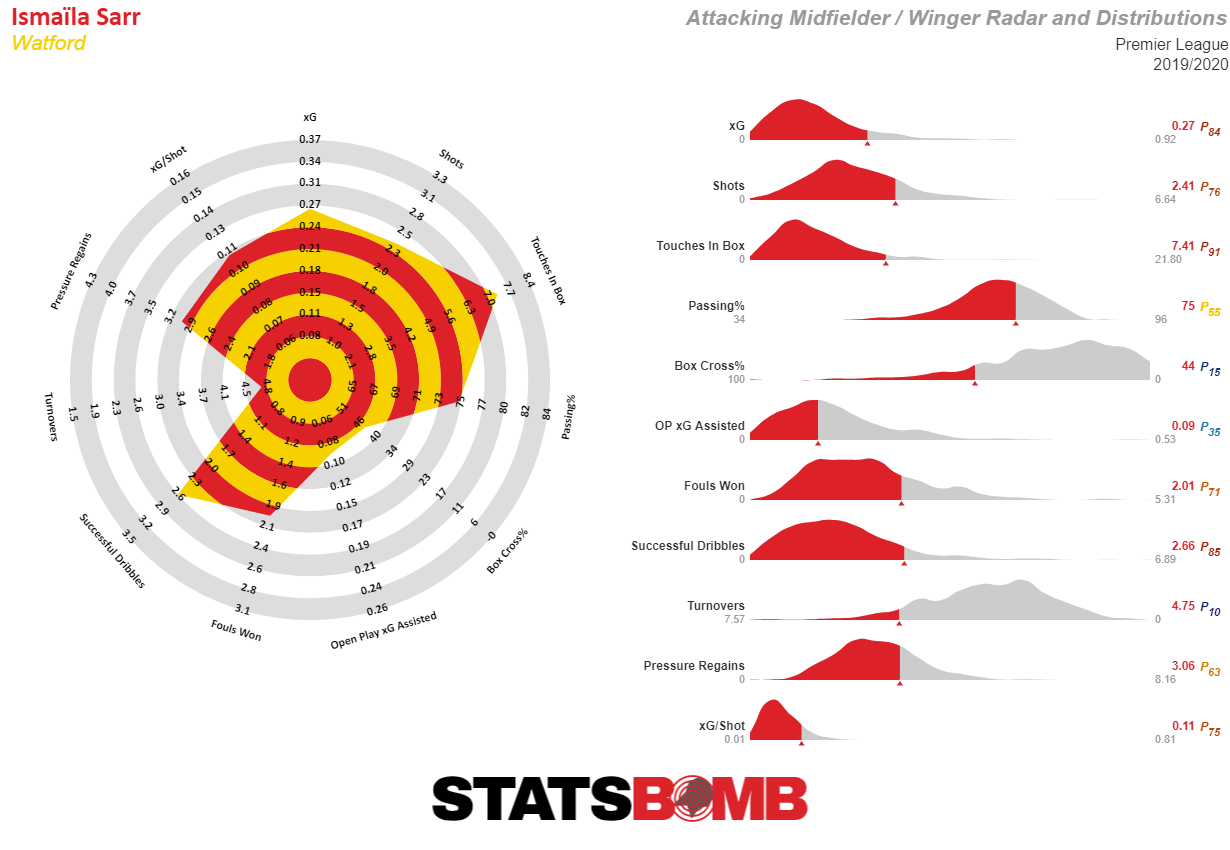 Finally, there’s the crown jewel of the relegation battle, Todd Cantwell. Norwich’s young winger is playing heavy minutes on a bad team and is still putting up the tenth best attacking numbers among young players in the Premier League, with 0.39 combined xG and xG assisted. If Norwich, who are currently six points adrift at the bottom of the table, don’t stage a miracle comeback, it’s likely that Cantwell will be plying his trade elsewhere next season. Whoever gets him will pick up an exciting young prospect who should be a Premier League mainstay for years to come. And Norwich, at least, should have the financial blow of relegation at least somewhat alleviated.
Finally, there’s the crown jewel of the relegation battle, Todd Cantwell. Norwich’s young winger is playing heavy minutes on a bad team and is still putting up the tenth best attacking numbers among young players in the Premier League, with 0.39 combined xG and xG assisted. If Norwich, who are currently six points adrift at the bottom of the table, don’t stage a miracle comeback, it’s likely that Cantwell will be plying his trade elsewhere next season. Whoever gets him will pick up an exciting young prospect who should be a Premier League mainstay for years to come. And Norwich, at least, should have the financial blow of relegation at least somewhat alleviated. 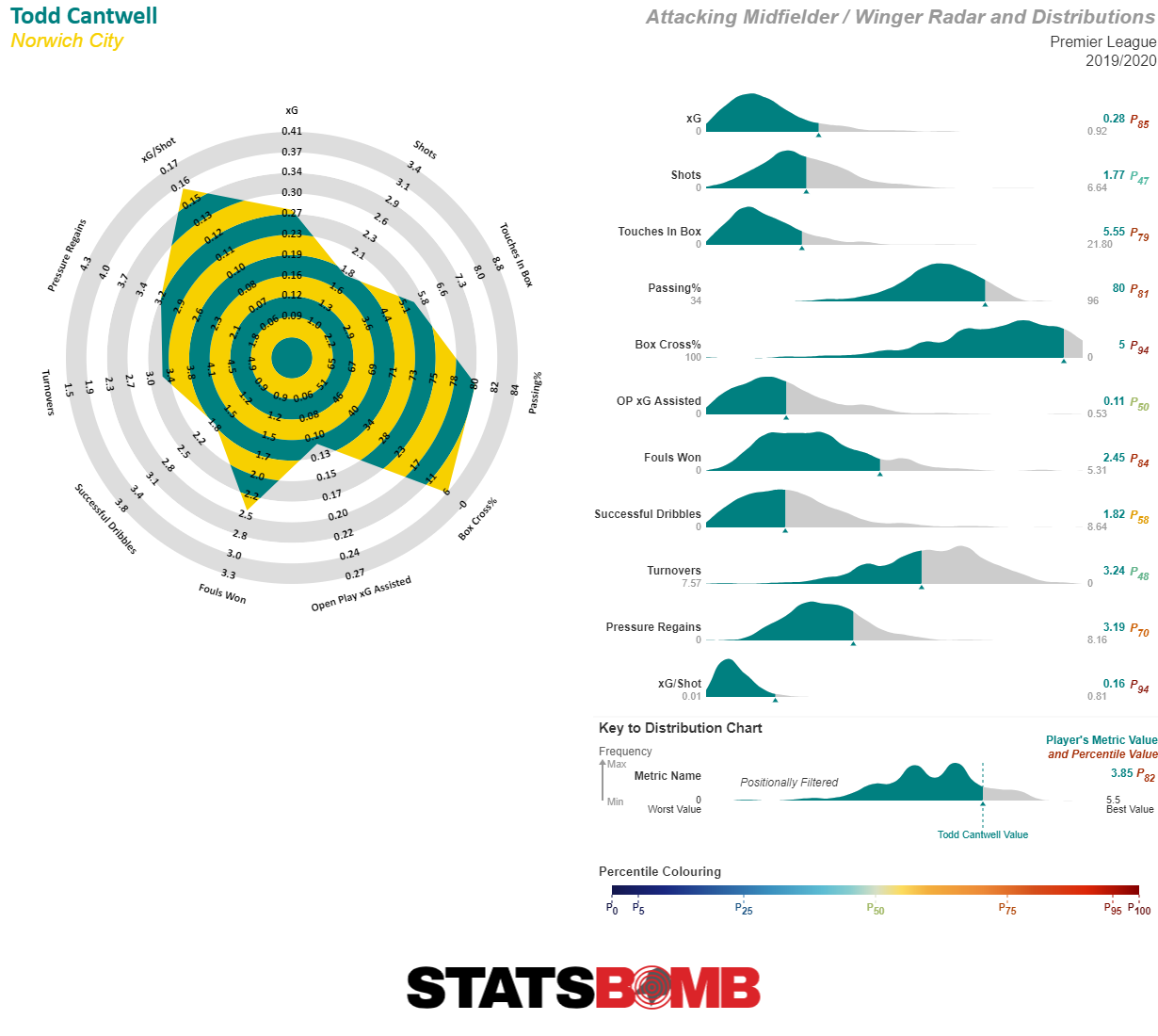 The Premier League is awash with good young talent right now. Good teams are letting their kids play, teams in the middle are using younger players to build toward the future and teams near the bottom have their own young gems to pin their hopes on. And, as development is an uncertain science, some of these players will likely flame out before turning into the stars of the future, but some will surely come good. More than any year in recent memory, this Premier League season is the launching pad for the stars of the future. Just remember to say you saw them when.
The Premier League is awash with good young talent right now. Good teams are letting their kids play, teams in the middle are using younger players to build toward the future and teams near the bottom have their own young gems to pin their hopes on. And, as development is an uncertain science, some of these players will likely flame out before turning into the stars of the future, but some will surely come good. More than any year in recent memory, this Premier League season is the launching pad for the stars of the future. Just remember to say you saw them when.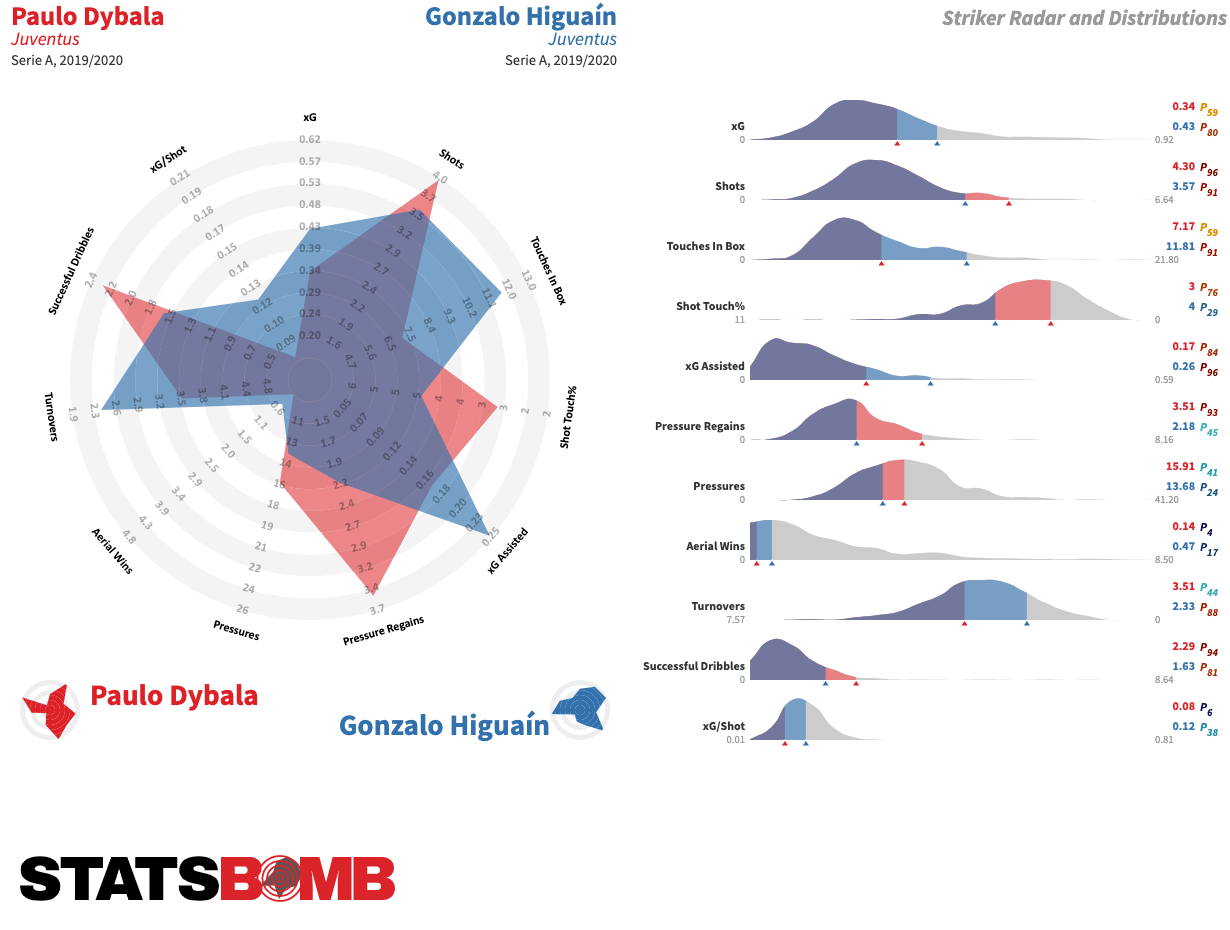
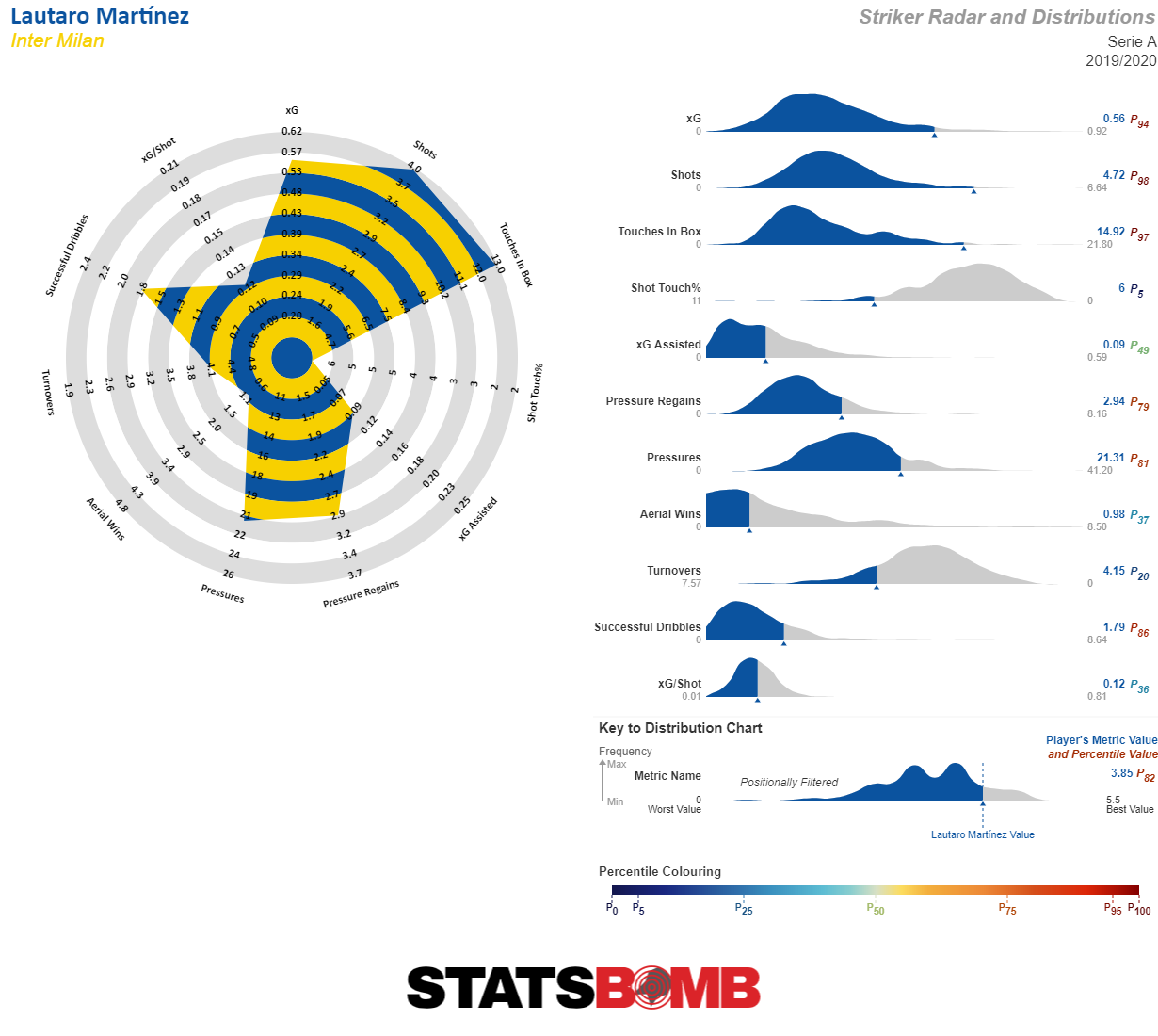
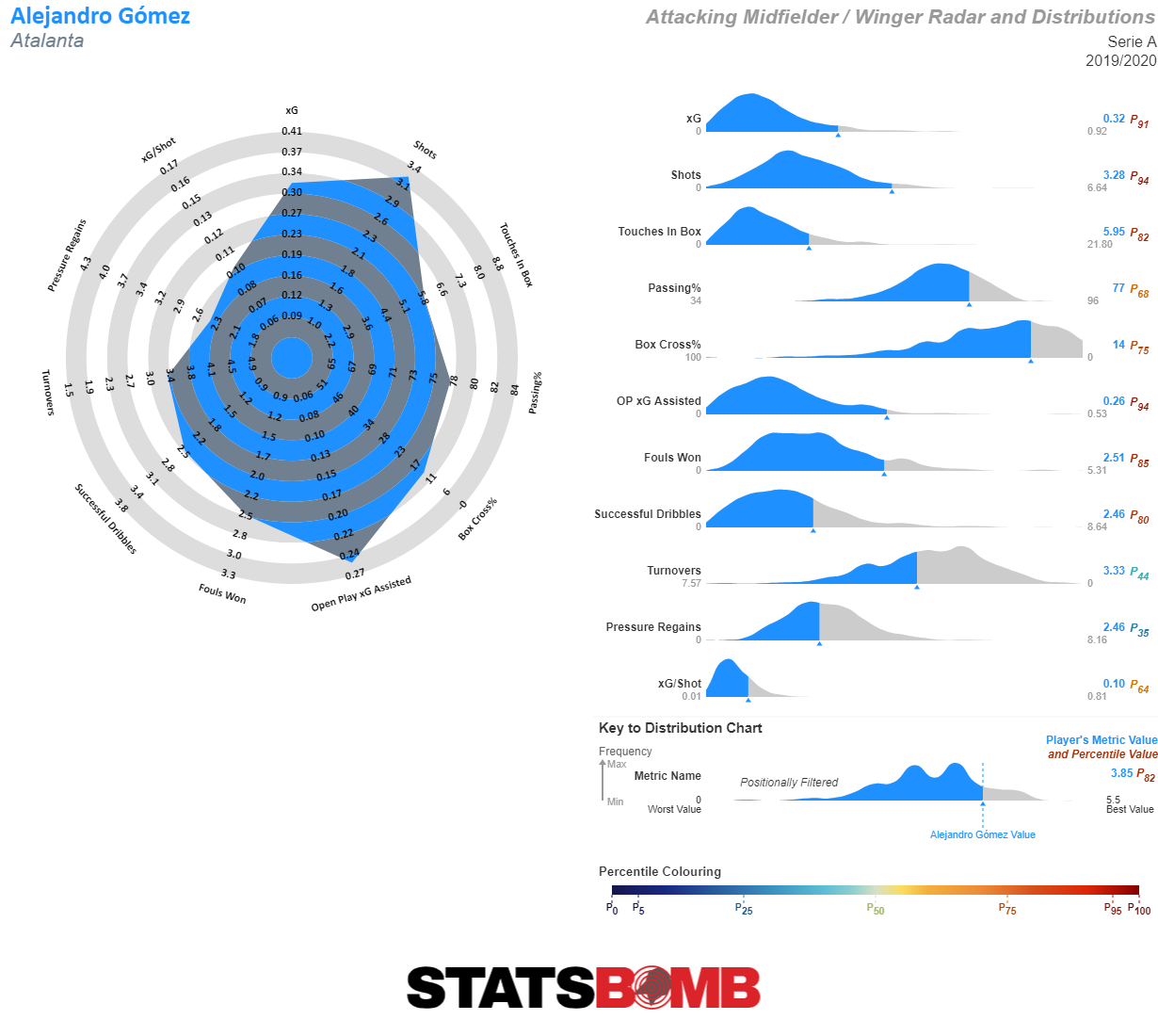
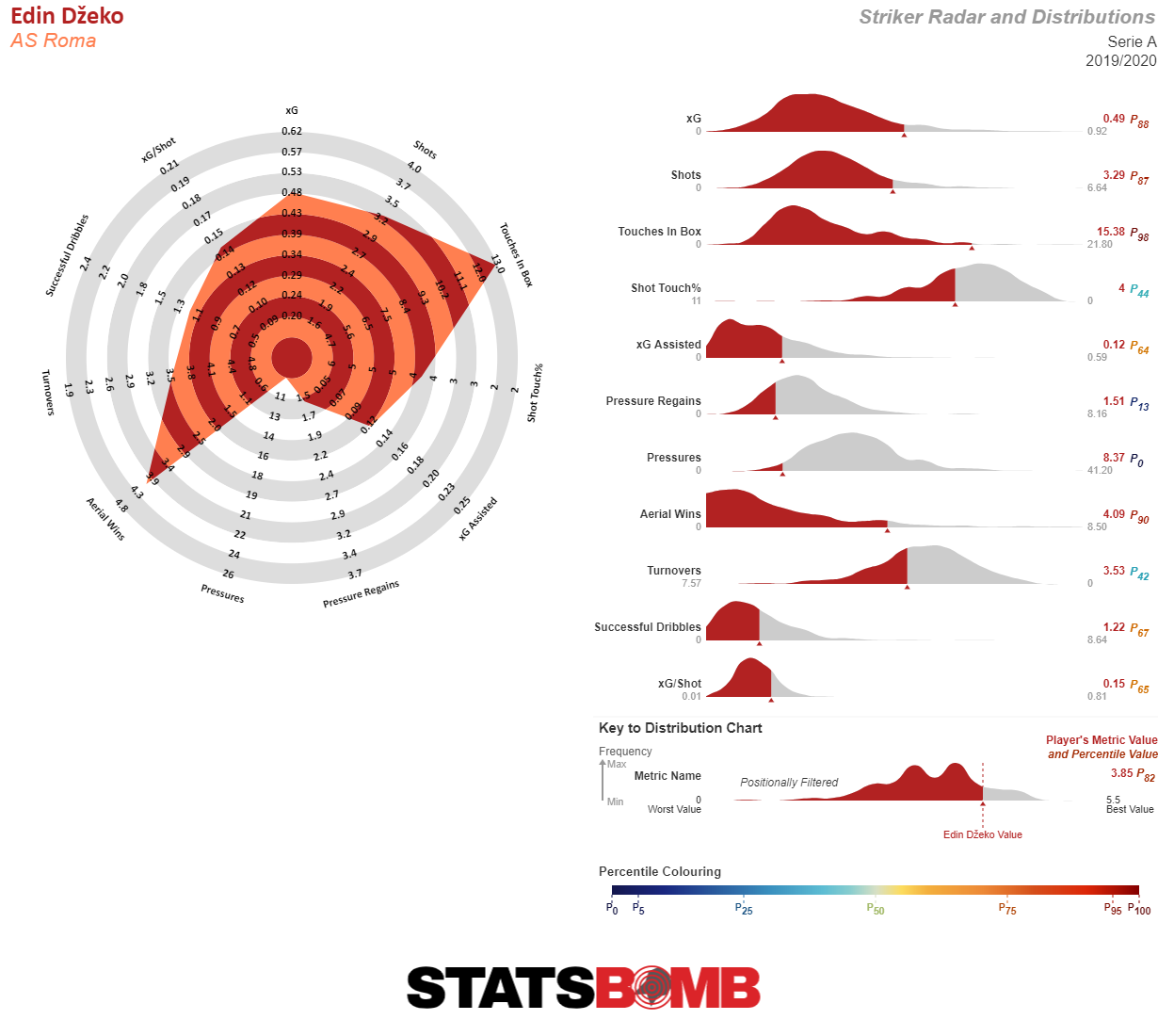
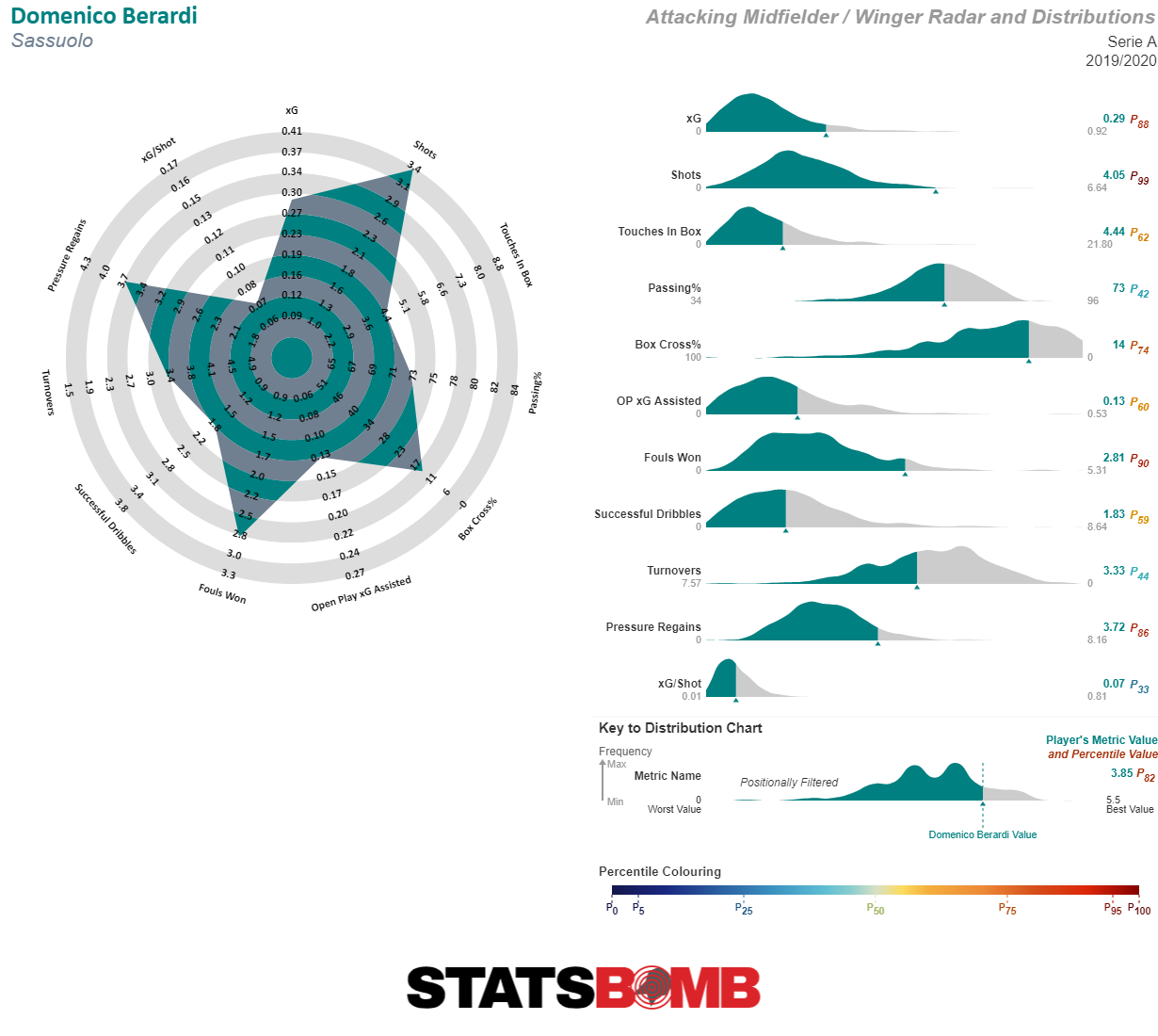
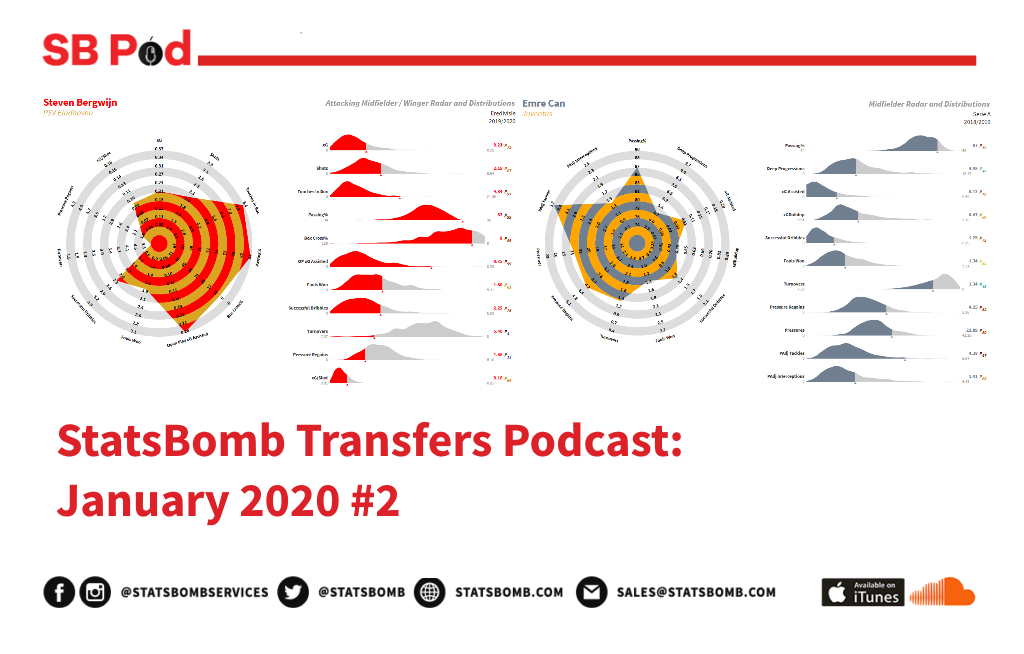
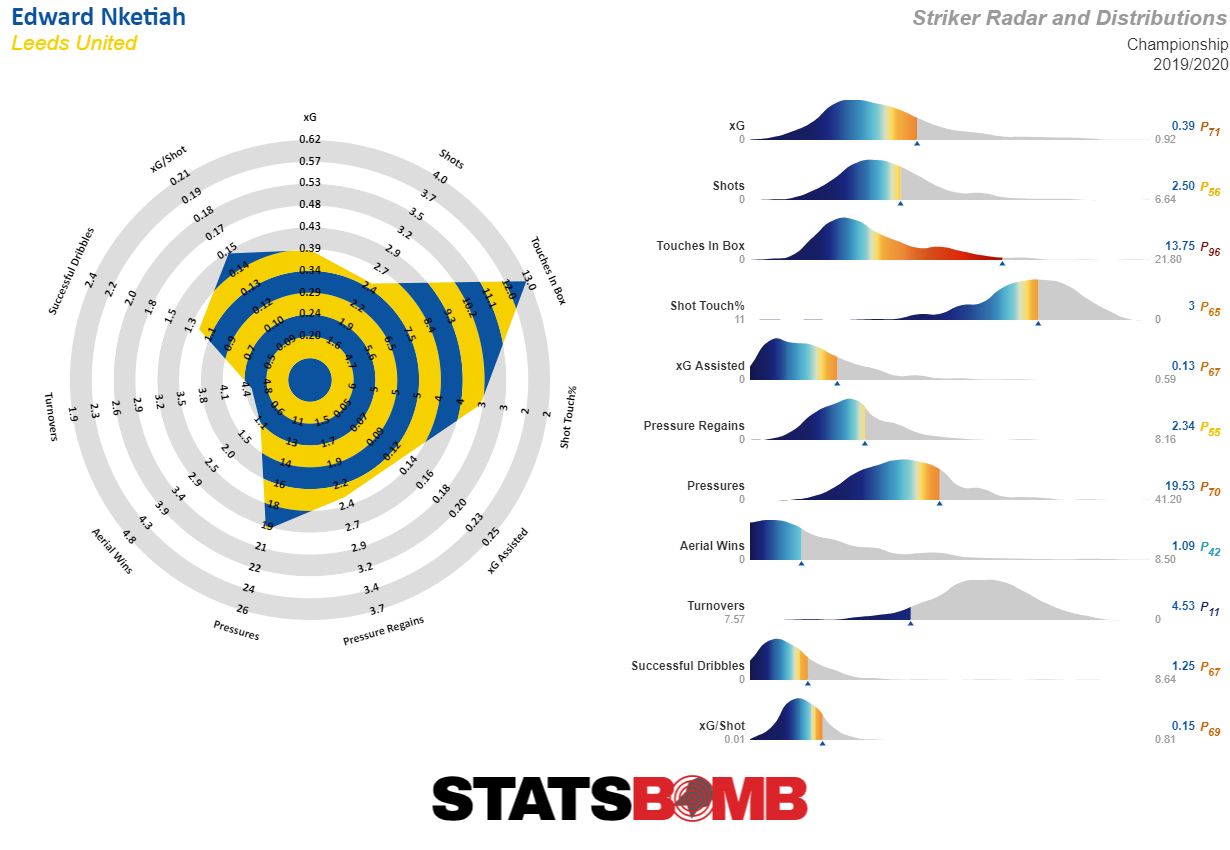
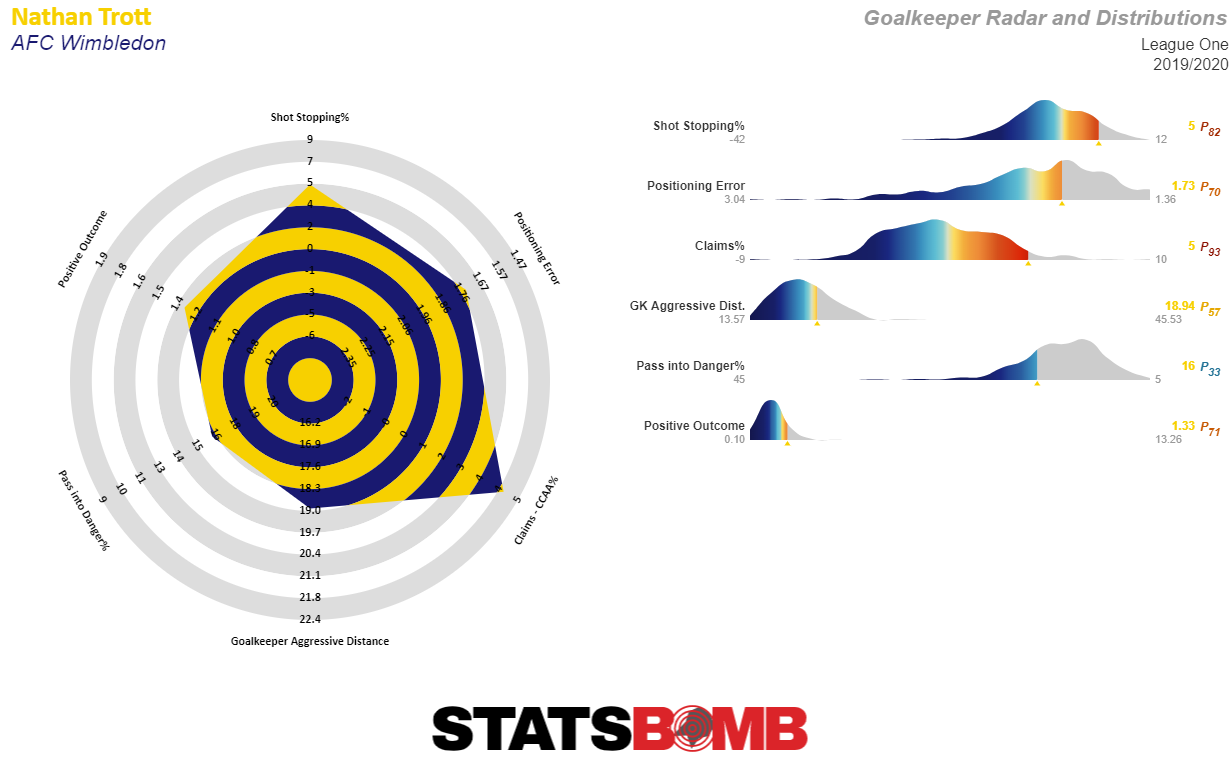 Like Ramsdale last season, Trott’s reaping the benefits of being a big fish at a club fighting to avoid relegation, whilst Wimbledon benefit from the extra quality he’s brought between the sticks. Having featured in the England U21 squad in the September internationals, he could see a March call up again, likely linking him up with Wimbledon predecessor Ramsdale. Other notables:
Like Ramsdale last season, Trott’s reaping the benefits of being a big fish at a club fighting to avoid relegation, whilst Wimbledon benefit from the extra quality he’s brought between the sticks. Having featured in the England U21 squad in the September internationals, he could see a March call up again, likely linking him up with Wimbledon predecessor Ramsdale. Other notables: 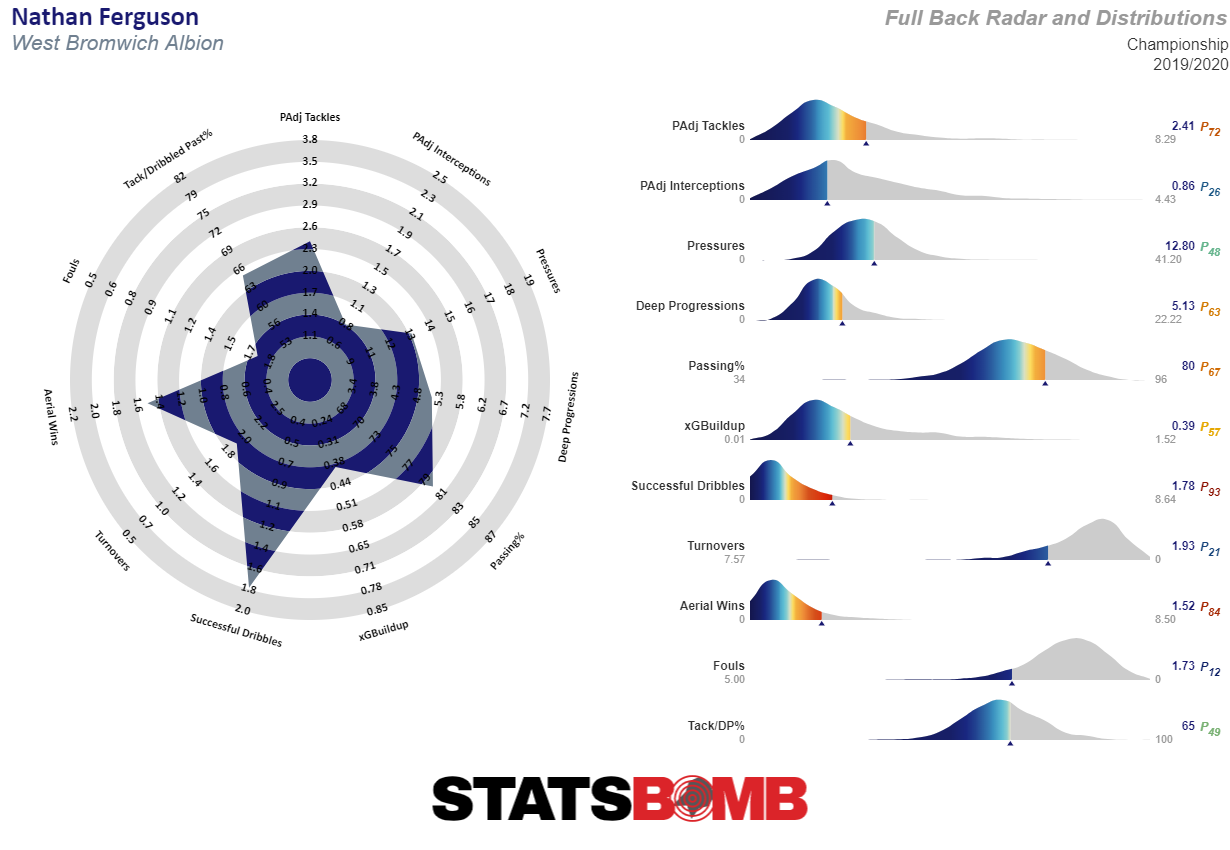 Accruing 8 caps between the England U18 and U20 level, expect to see him competing with Max Aarons and Reece James in the England U21 squad next season, as well as a possible move to the Premier League. West Brom themselves may keep their man, but major clubs are on high alert as Ferguson’s contract due to expire this summer. Other notables:
Accruing 8 caps between the England U18 and U20 level, expect to see him competing with Max Aarons and Reece James in the England U21 squad next season, as well as a possible move to the Premier League. West Brom themselves may keep their man, but major clubs are on high alert as Ferguson’s contract due to expire this summer. Other notables: 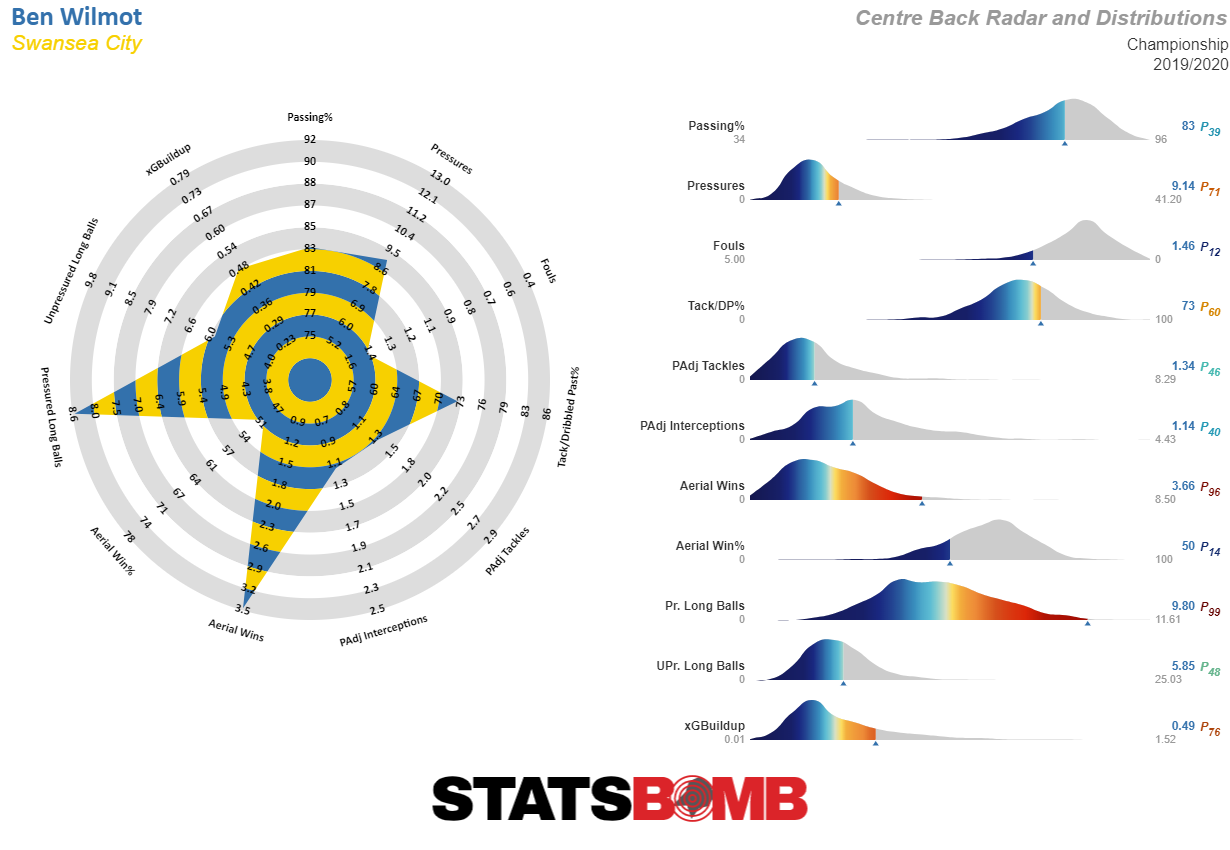 Capable of playing in the holding midfield role as well, his contribution isn't limited to defending his own penalty box. He's displayed a threat at set plays, contributing two goals to Swansea’s play-off chasing cause. To further capture the interest of those with an eye on England’s future, Wilmot now faces competition for his place in the heart of the Swansea defence from fellow U21 capped Marc Guehi, who’s joined on loan from Chelsea. Other notables:
Capable of playing in the holding midfield role as well, his contribution isn't limited to defending his own penalty box. He's displayed a threat at set plays, contributing two goals to Swansea’s play-off chasing cause. To further capture the interest of those with an eye on England’s future, Wilmot now faces competition for his place in the heart of the Swansea defence from fellow U21 capped Marc Guehi, who’s joined on loan from Chelsea. Other notables: 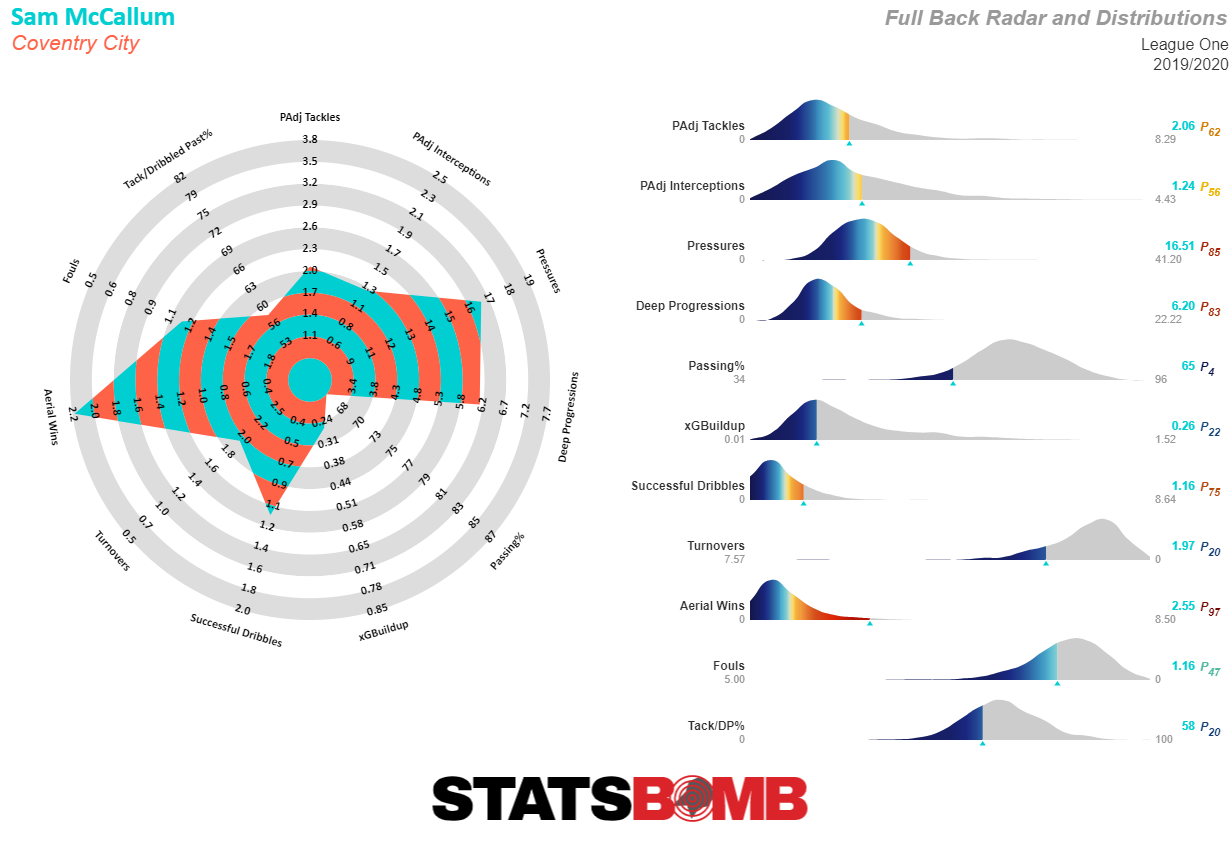 Currently impressing in a Coventry side pushing for automatic promotion from League One, McCallum began the season second in the pecking order but has since forced his way in and held down his place in the starting XI. Signed in the summer of 2018 from non-league Herne Bay to play a part in the Coventry U23 squad, his development has accelerated rapidly. It looks likely McCallum will be the first graduate of serious note to emerge from Jamie Vardy’s V9 academy. There’s plenty yet to develop in his game, but he’s shown enough potential to catch the attention of recruitment departments higher up the football food chain. Other notables
Currently impressing in a Coventry side pushing for automatic promotion from League One, McCallum began the season second in the pecking order but has since forced his way in and held down his place in the starting XI. Signed in the summer of 2018 from non-league Herne Bay to play a part in the Coventry U23 squad, his development has accelerated rapidly. It looks likely McCallum will be the first graduate of serious note to emerge from Jamie Vardy’s V9 academy. There’s plenty yet to develop in his game, but he’s shown enough potential to catch the attention of recruitment departments higher up the football food chain. Other notables 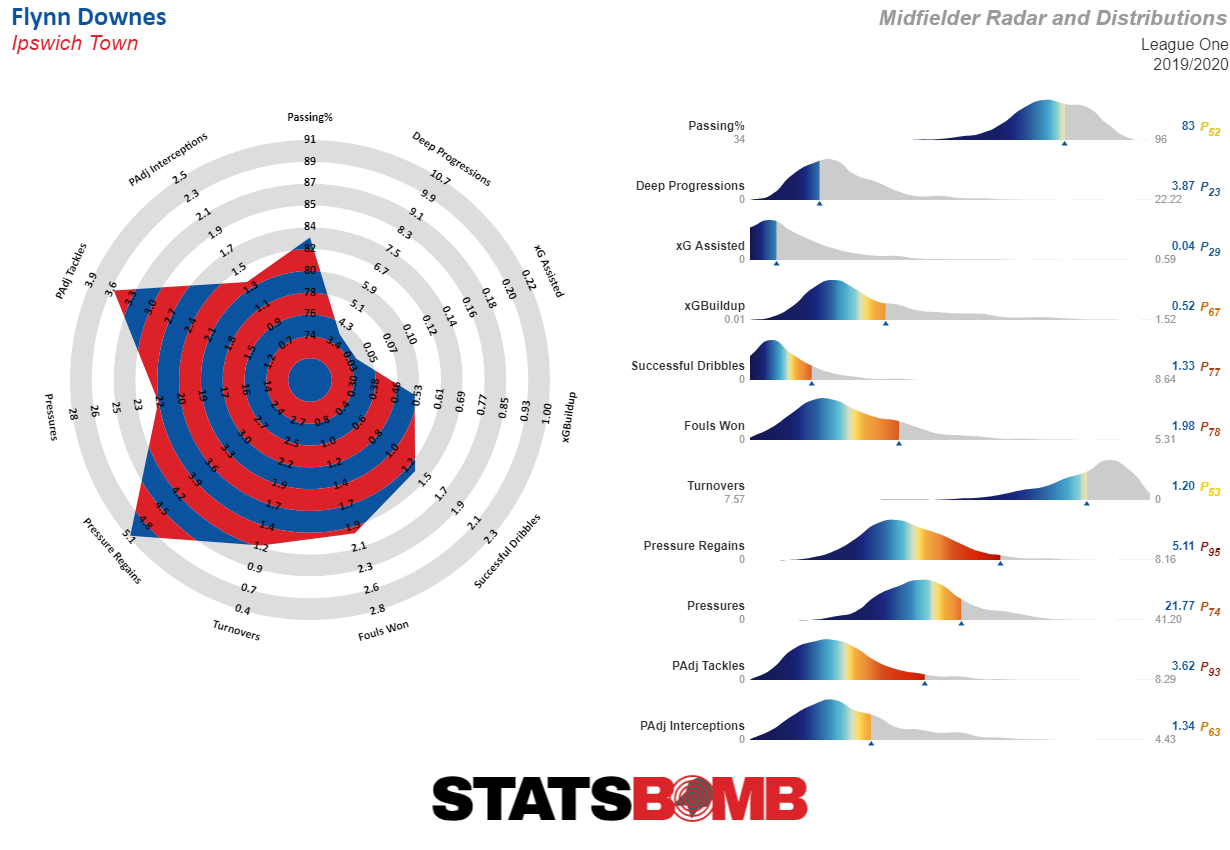 With 11 caps between the U19 and U20 level, Downes should be in line for an U21 call up, especially with a summer move away from Ipswich looking increasingly inevitable. Always roving around the midfield, always hot on the heels of the opposition possession, never leaving it long to outstretch a leg, nicking the ball away and restarting the Ipswich attack. Other notables:
With 11 caps between the U19 and U20 level, Downes should be in line for an U21 call up, especially with a summer move away from Ipswich looking increasingly inevitable. Always roving around the midfield, always hot on the heels of the opposition possession, never leaving it long to outstretch a leg, nicking the ball away and restarting the Ipswich attack. Other notables: 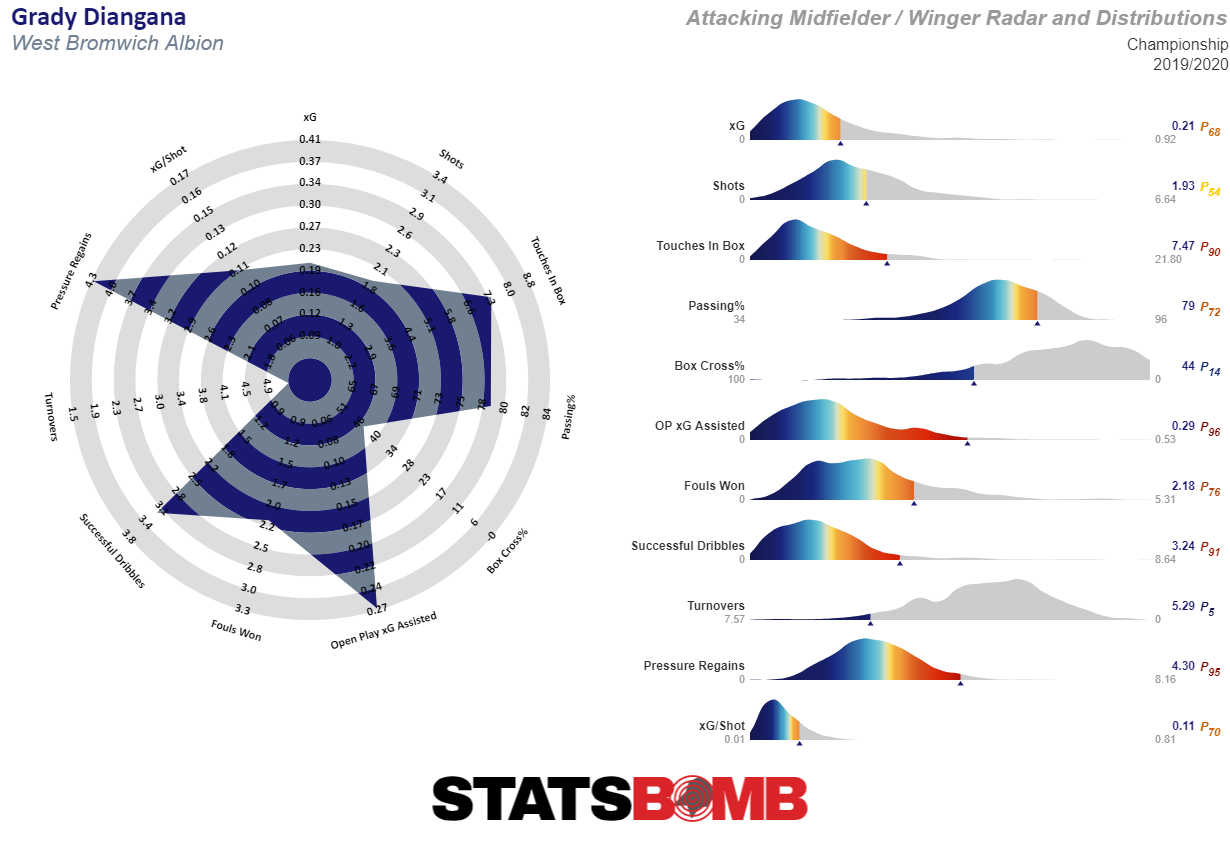 Depending on how long he’s out for, Diangana may miss out on a March call up to add to his solitary U21 cap. West Brom fans won’t care about that. The sooner he sets boot to pitch again to help with their promotion push the better, with it very likely he’ll be pushing for starts in West Ham’s attack next season. Other notables:
Depending on how long he’s out for, Diangana may miss out on a March call up to add to his solitary U21 cap. West Brom fans won’t care about that. The sooner he sets boot to pitch again to help with their promotion push the better, with it very likely he’ll be pushing for starts in West Ham’s attack next season. Other notables: 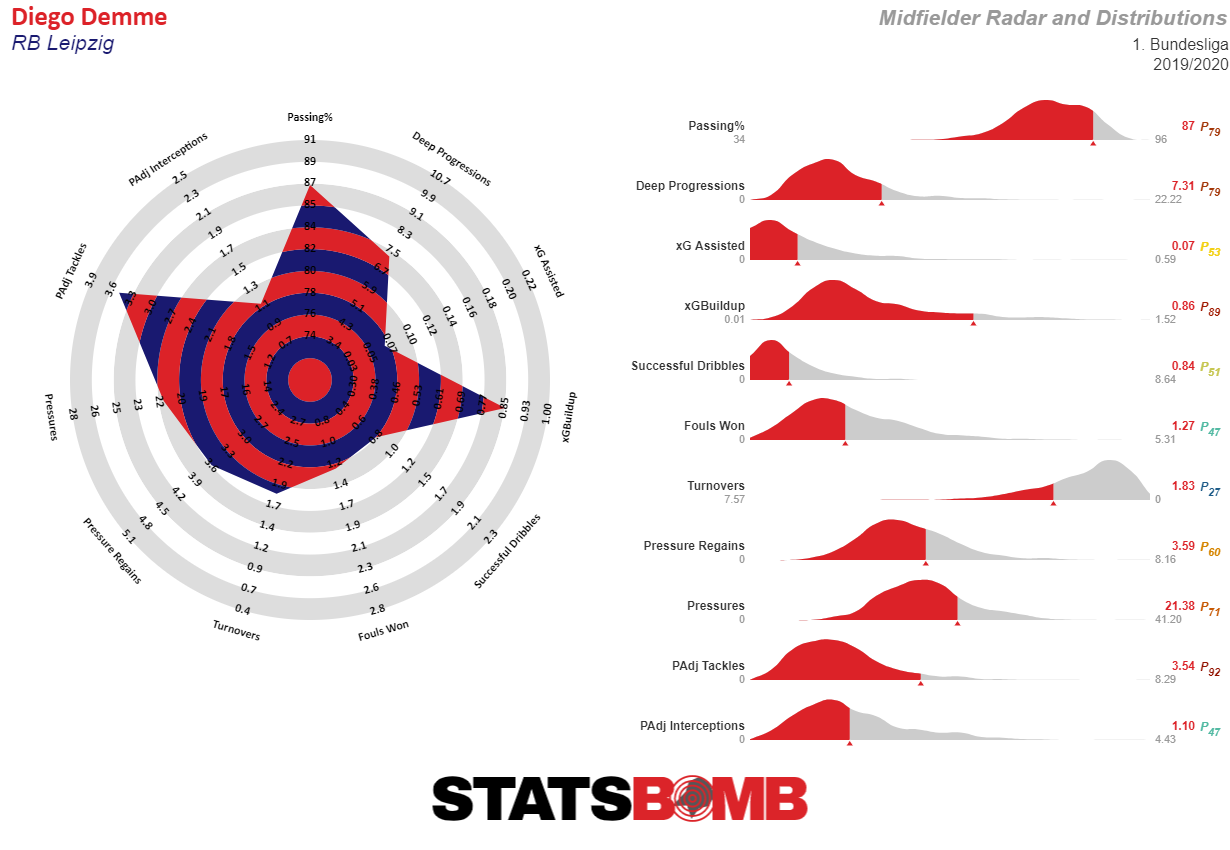
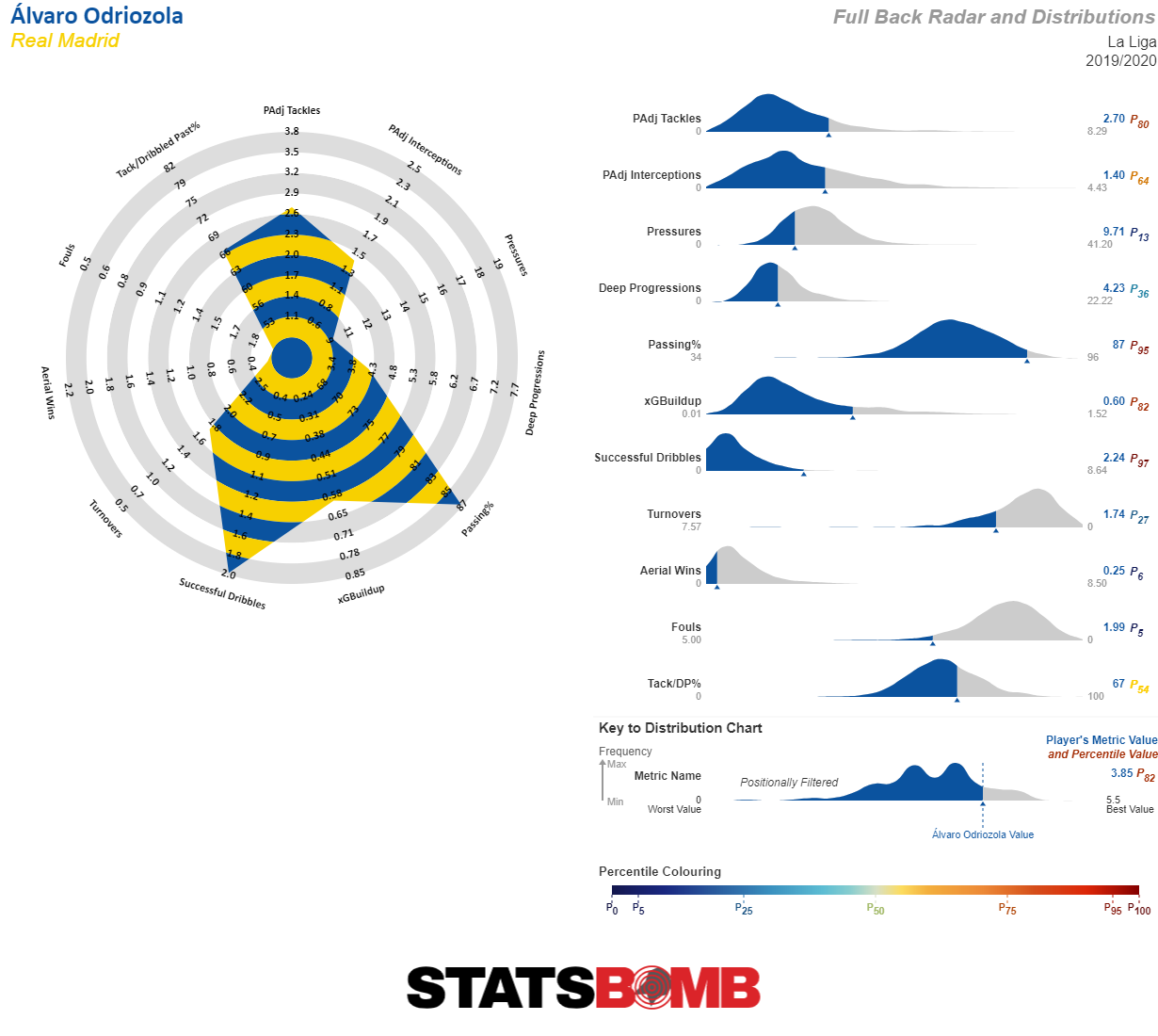
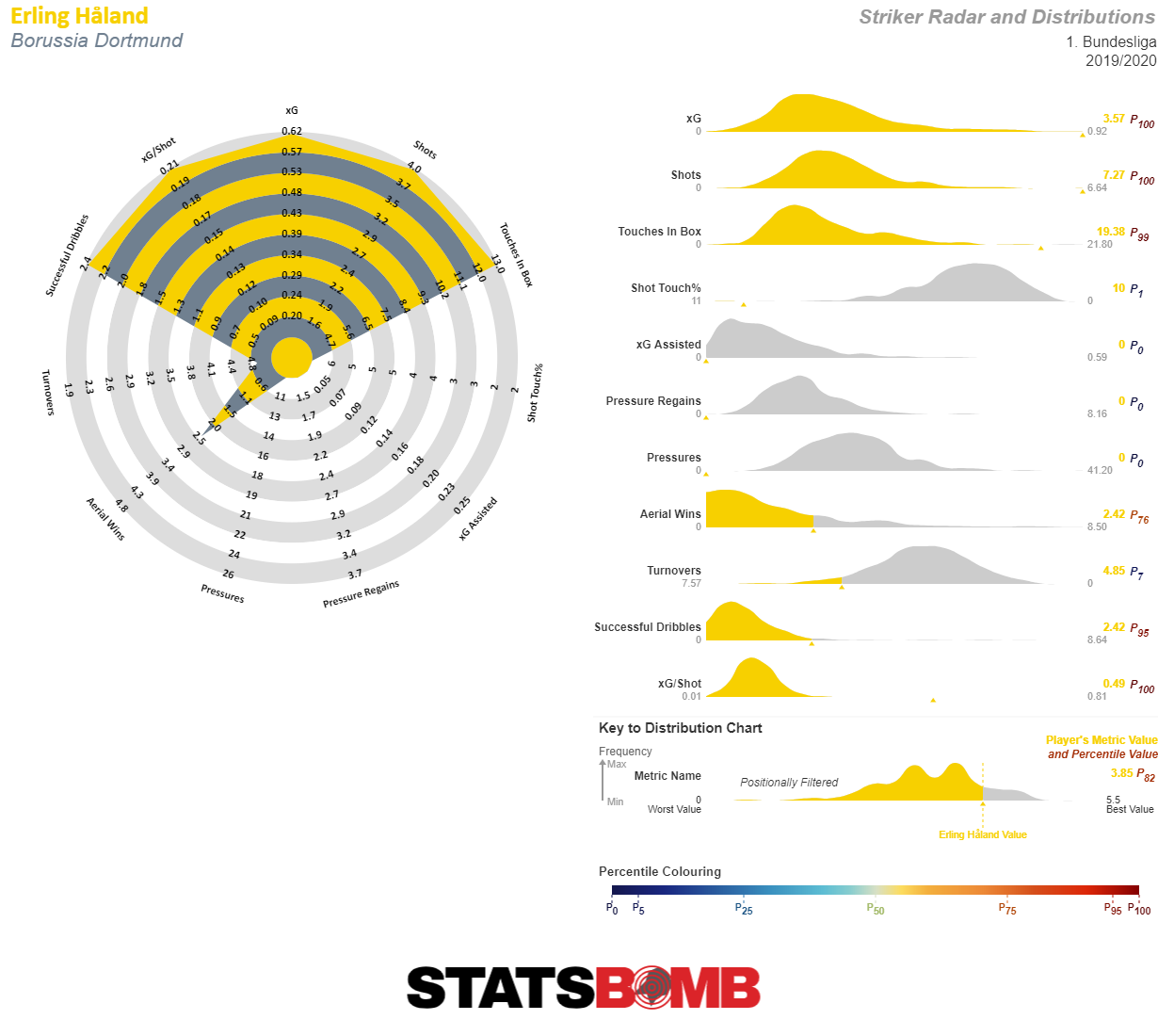
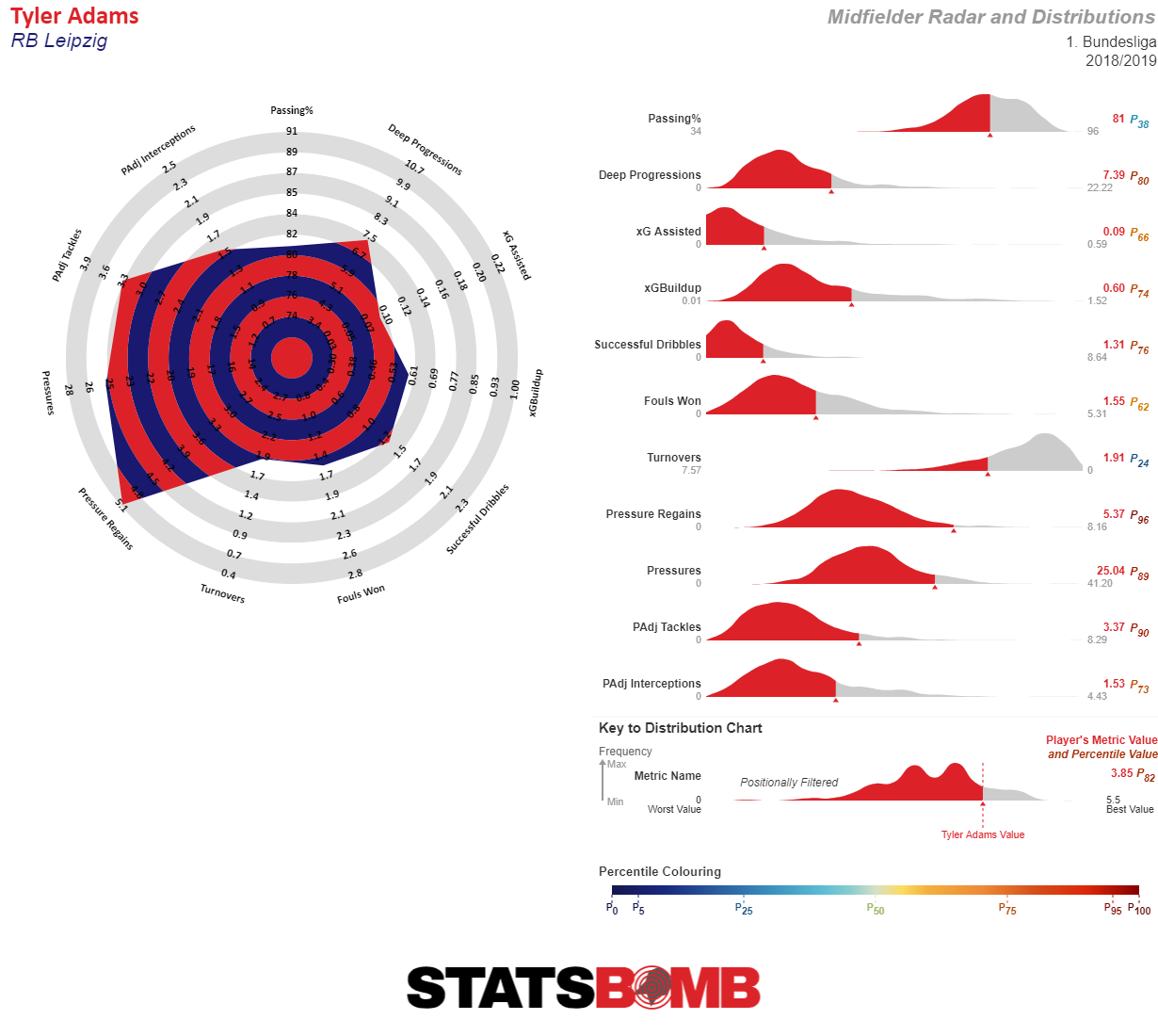
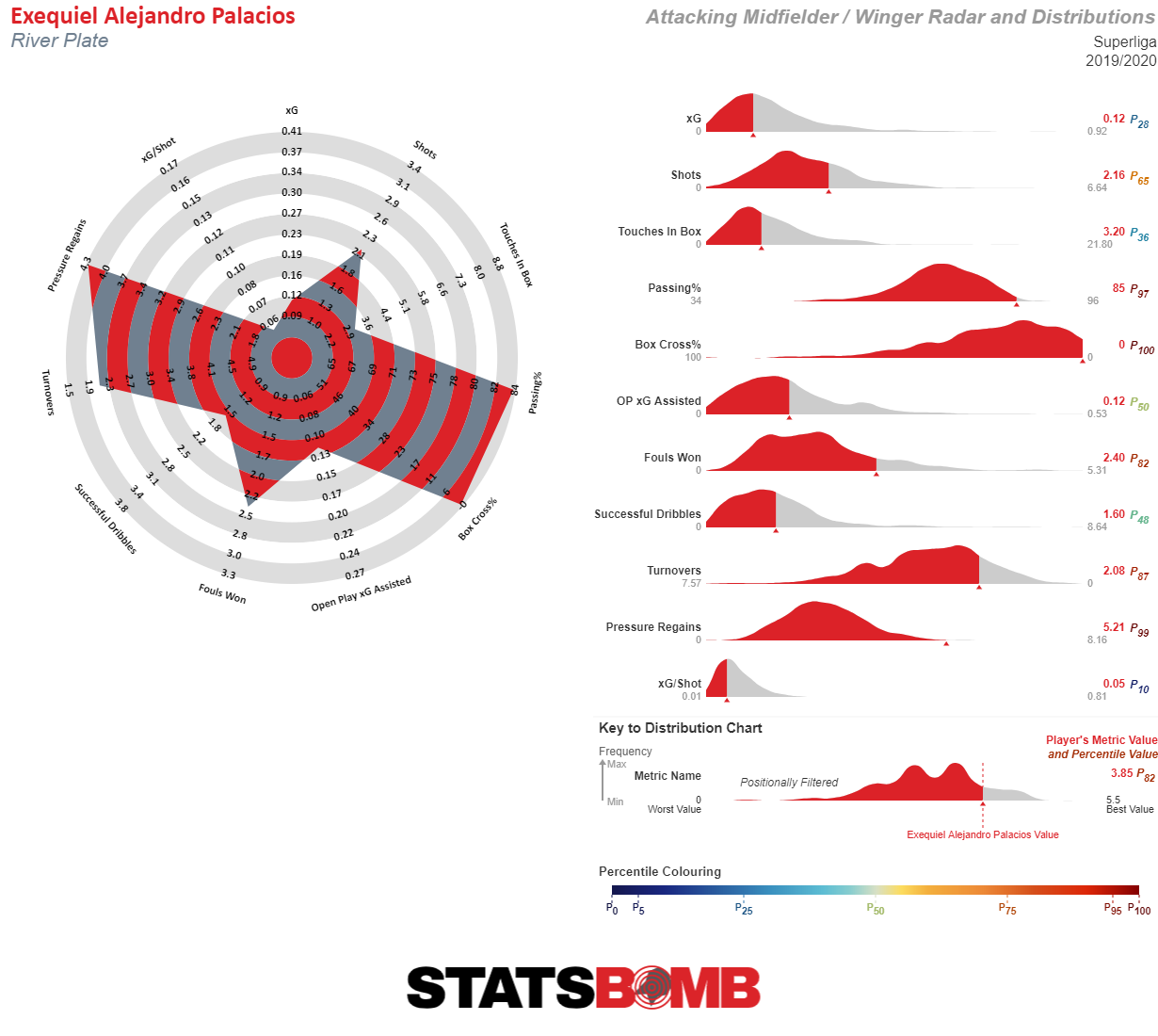
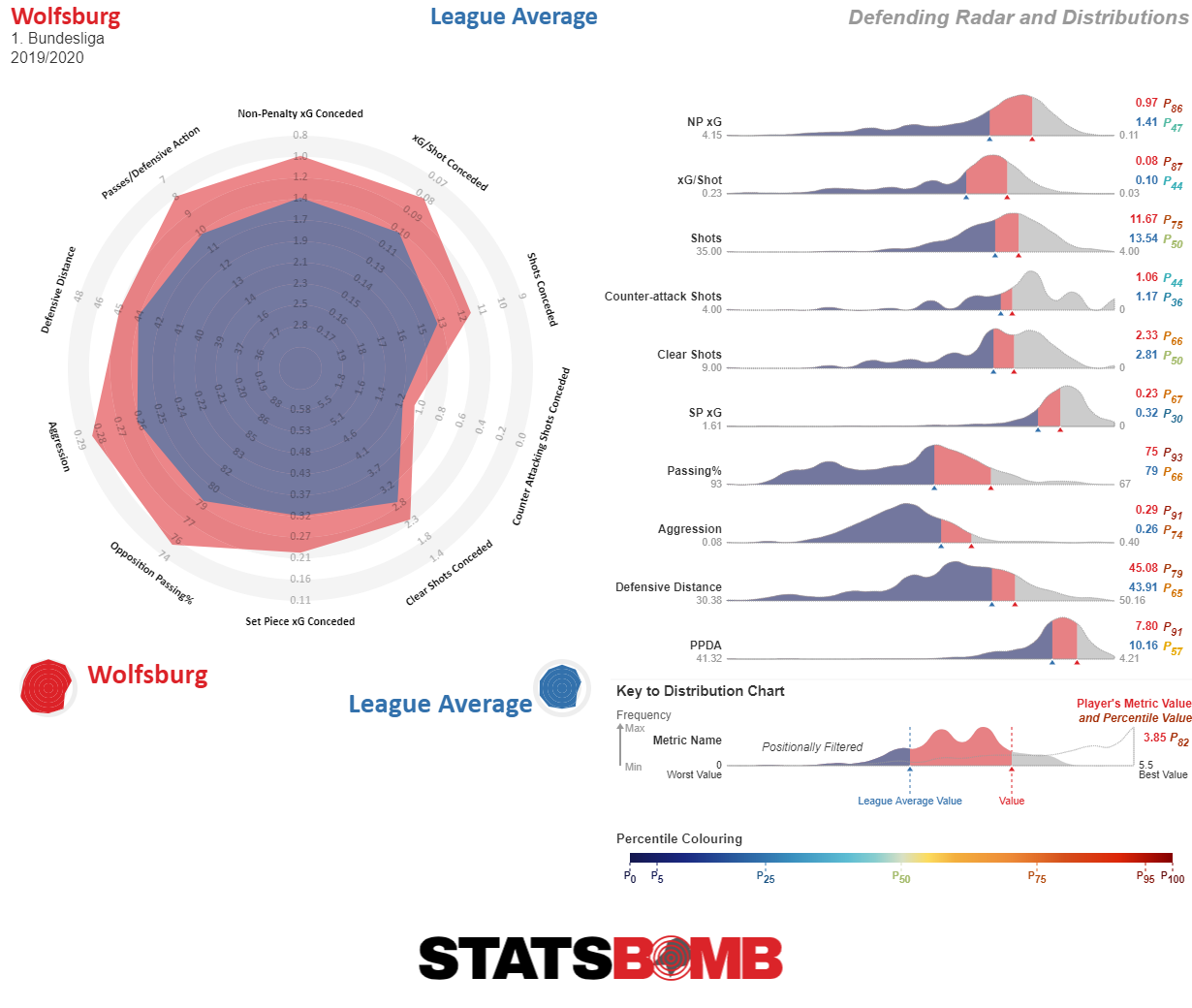
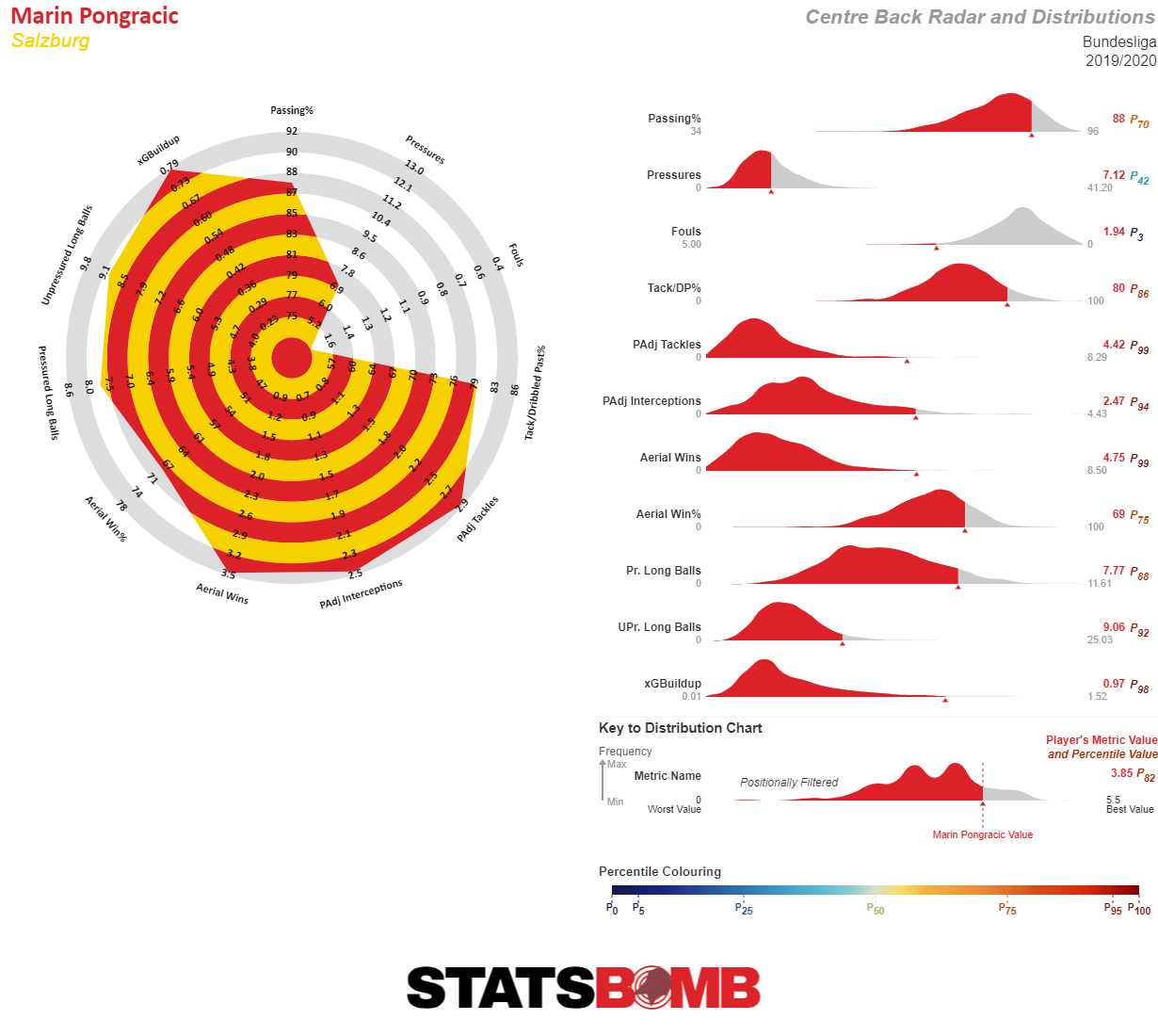
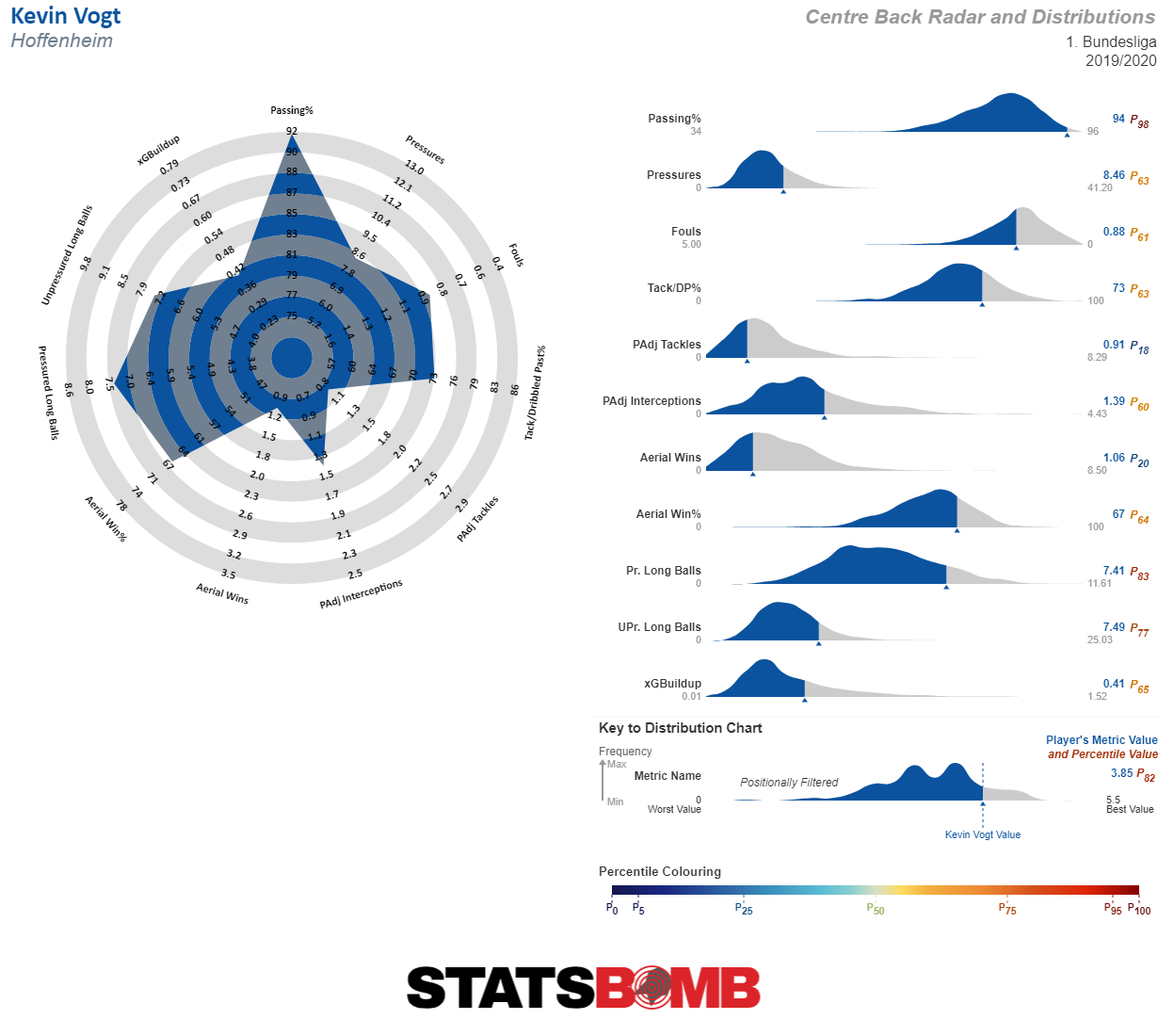
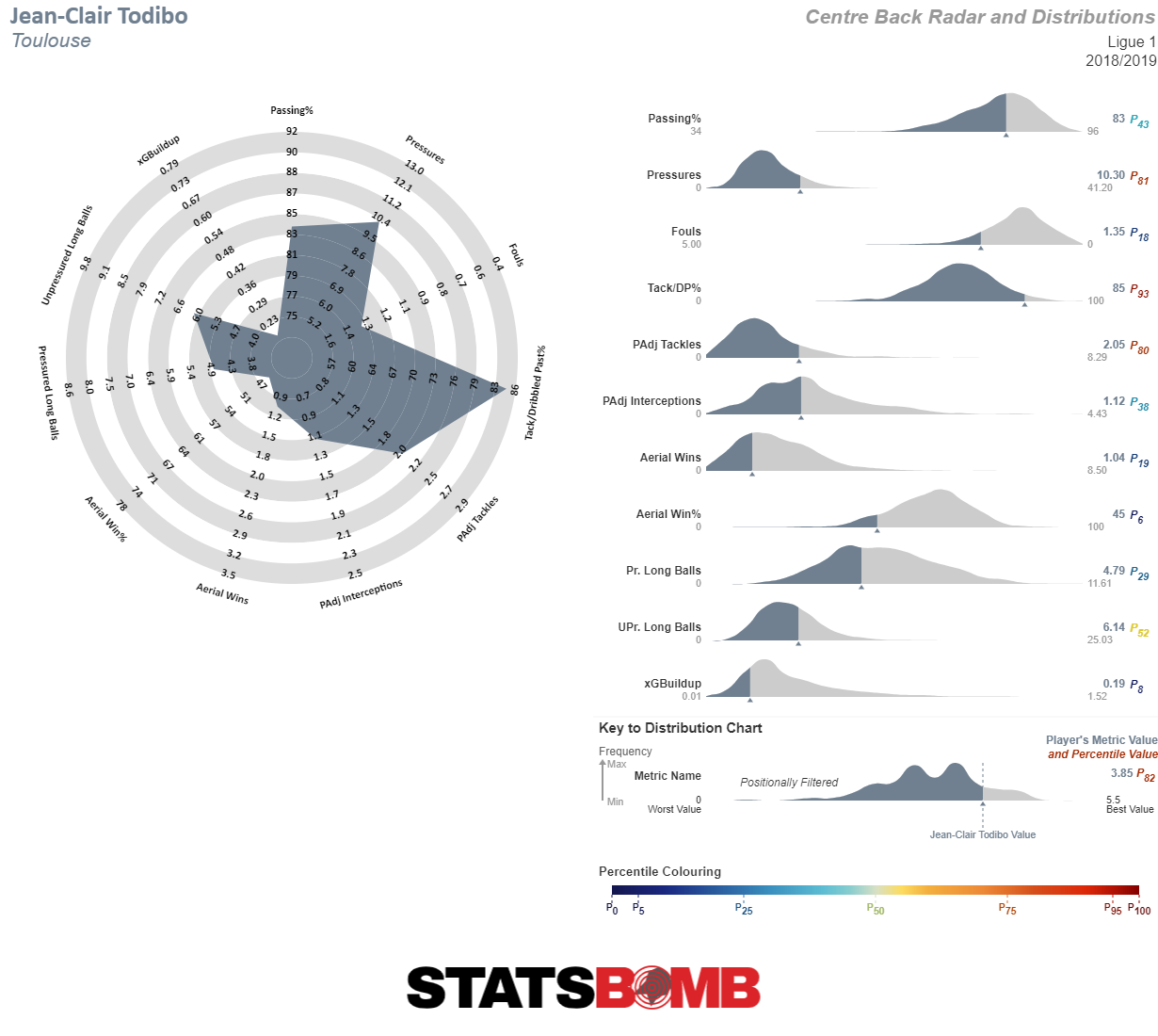
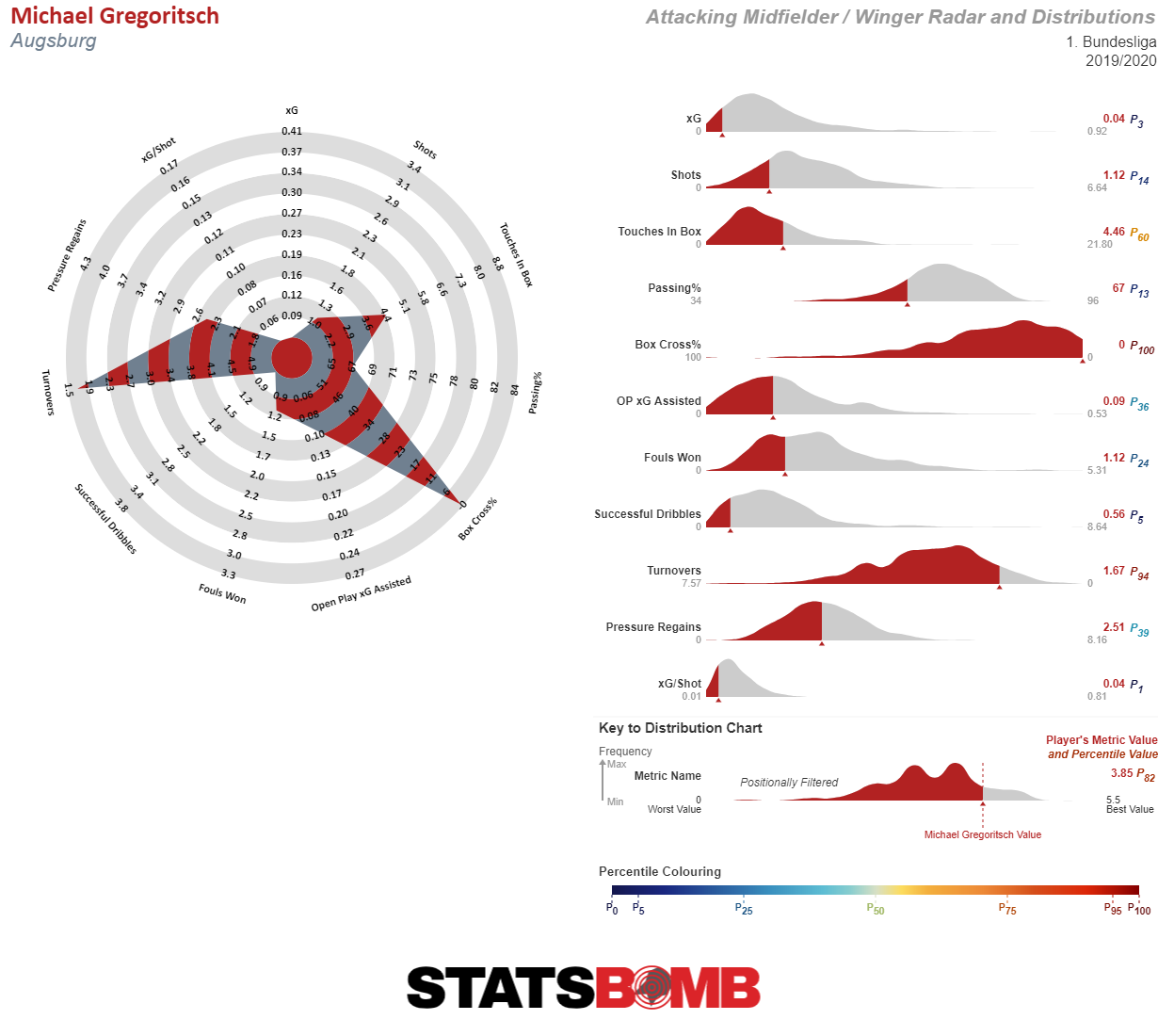
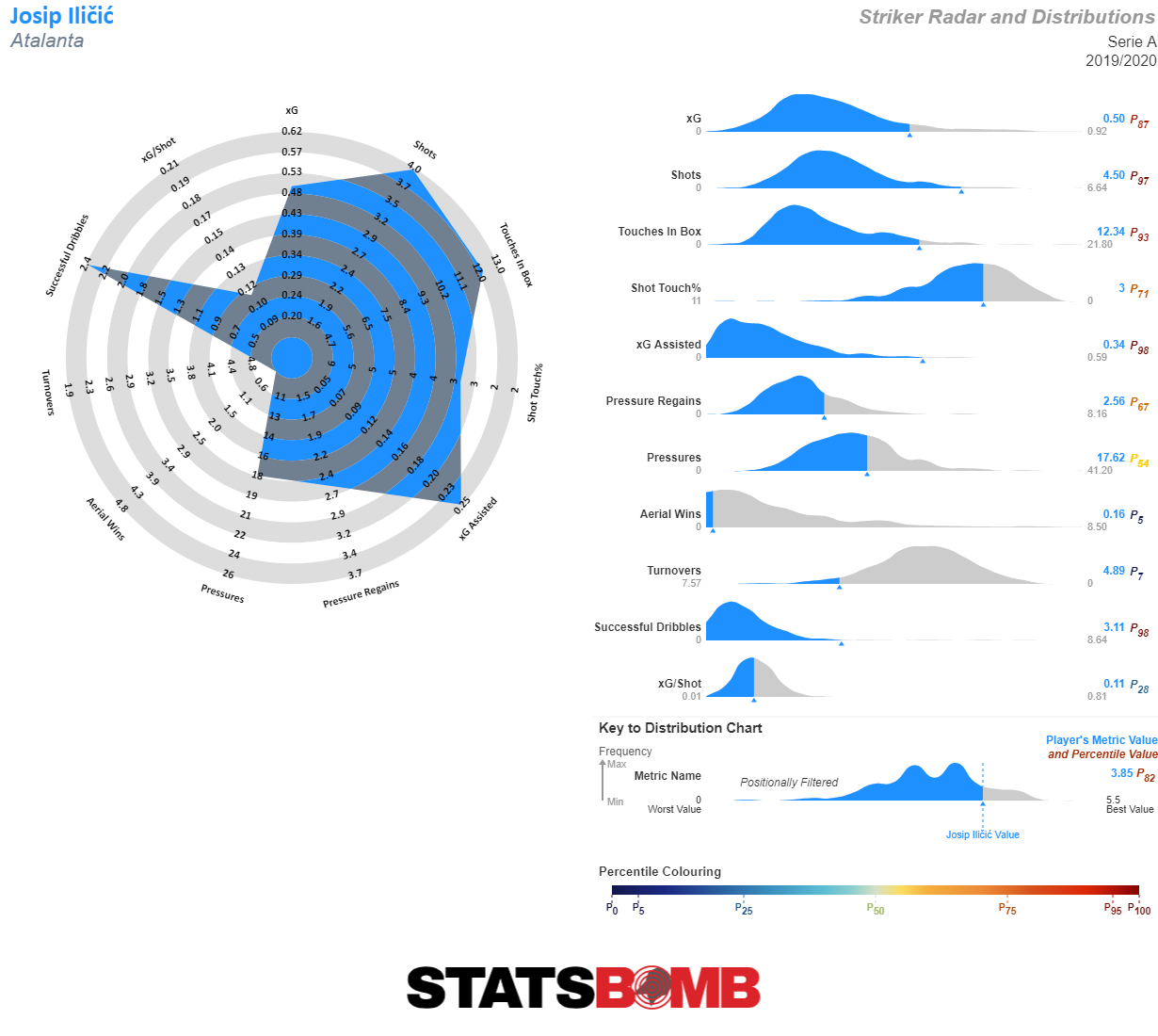
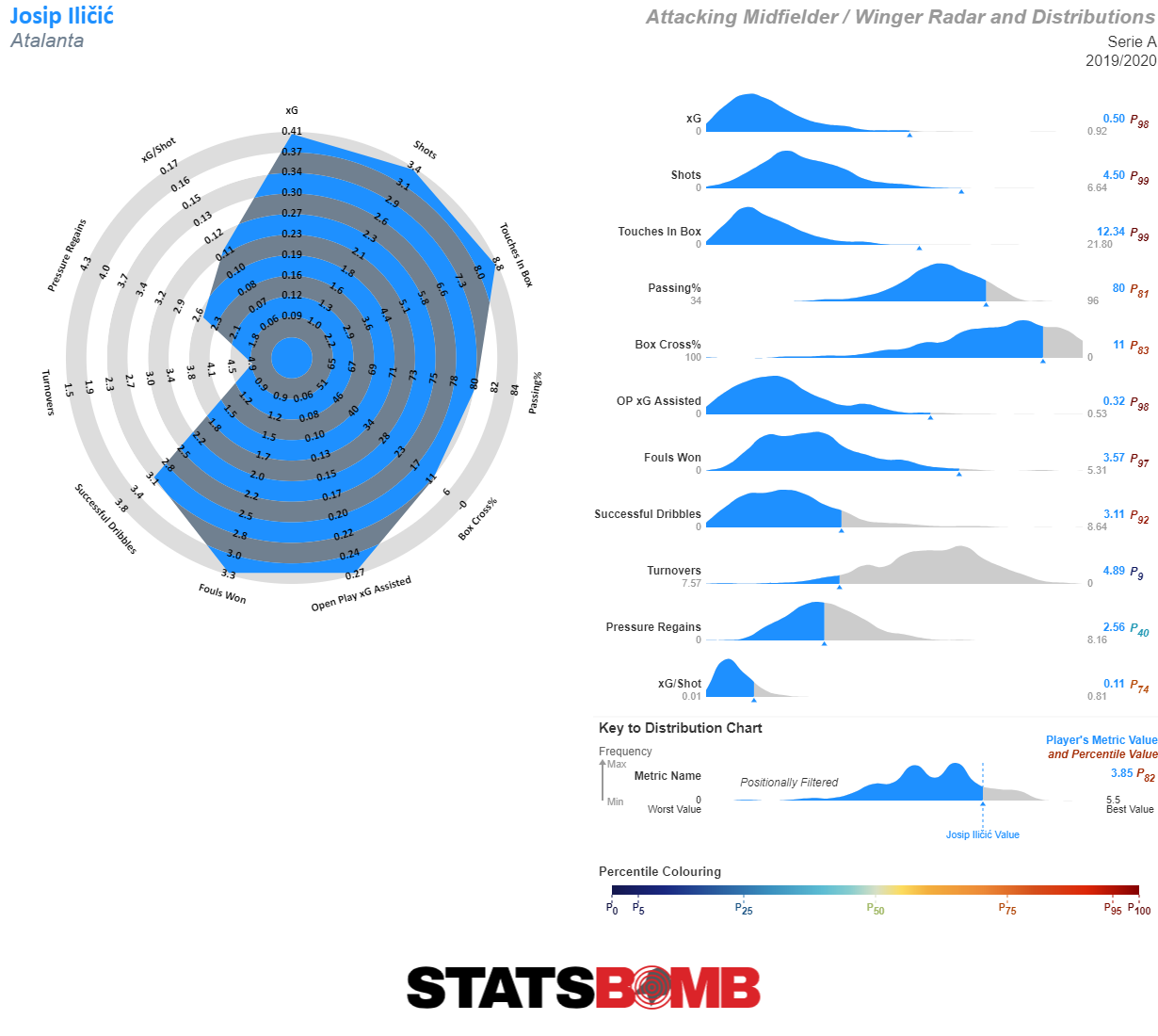
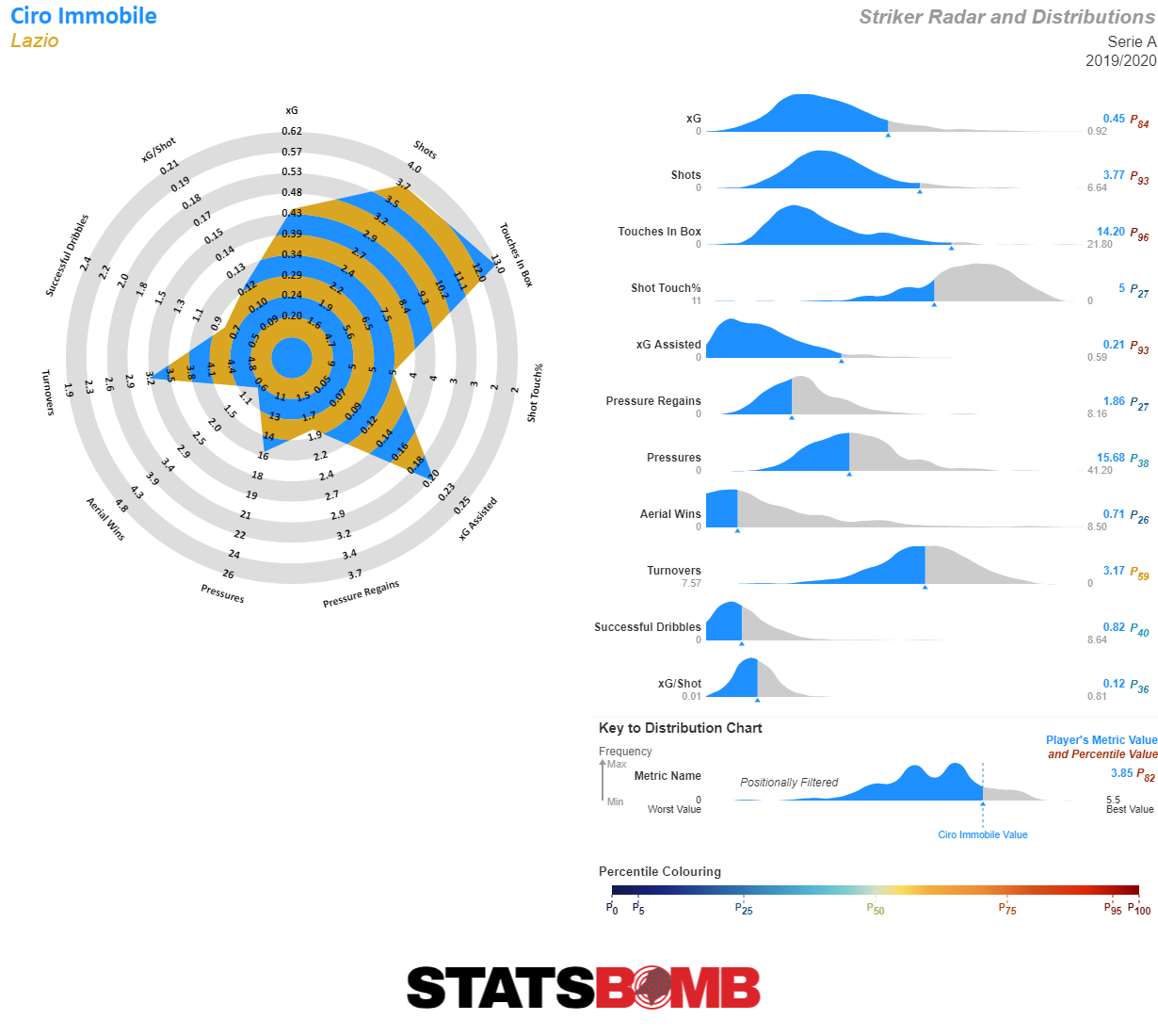
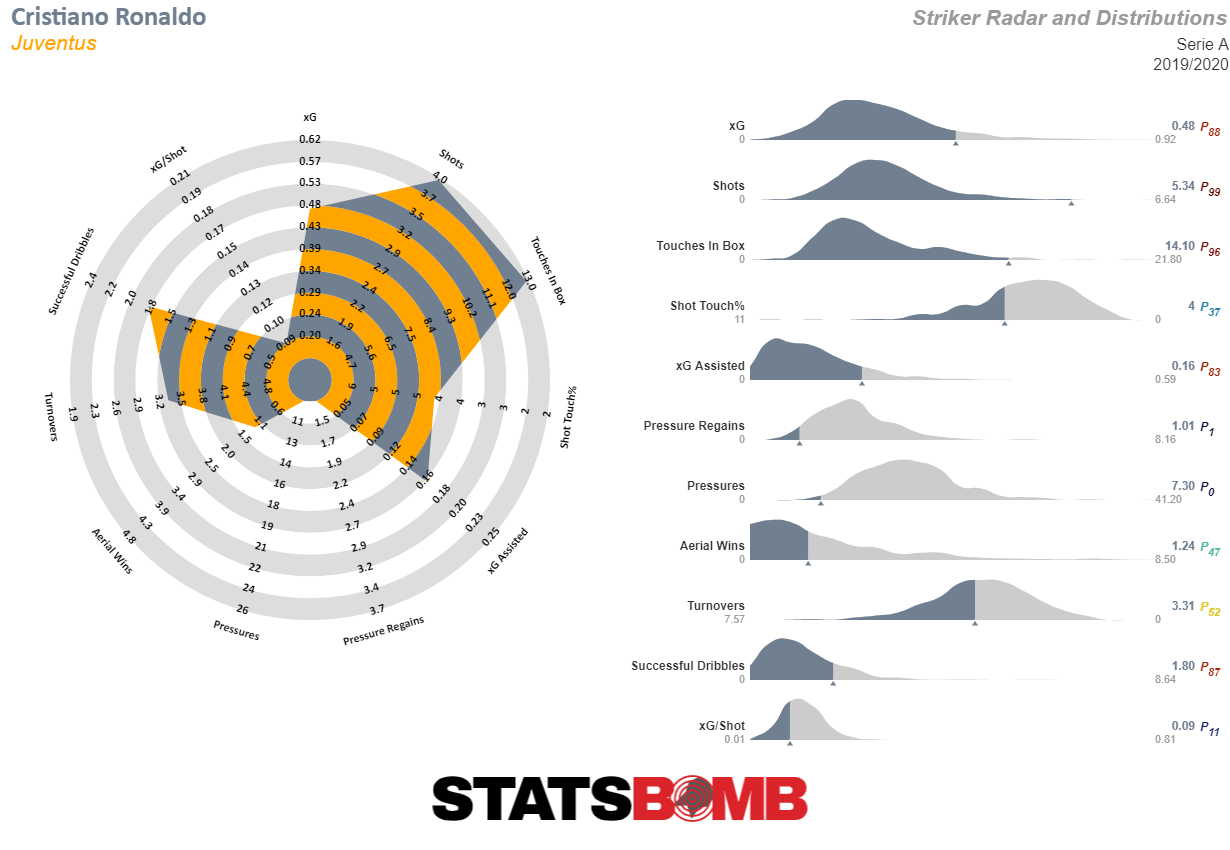
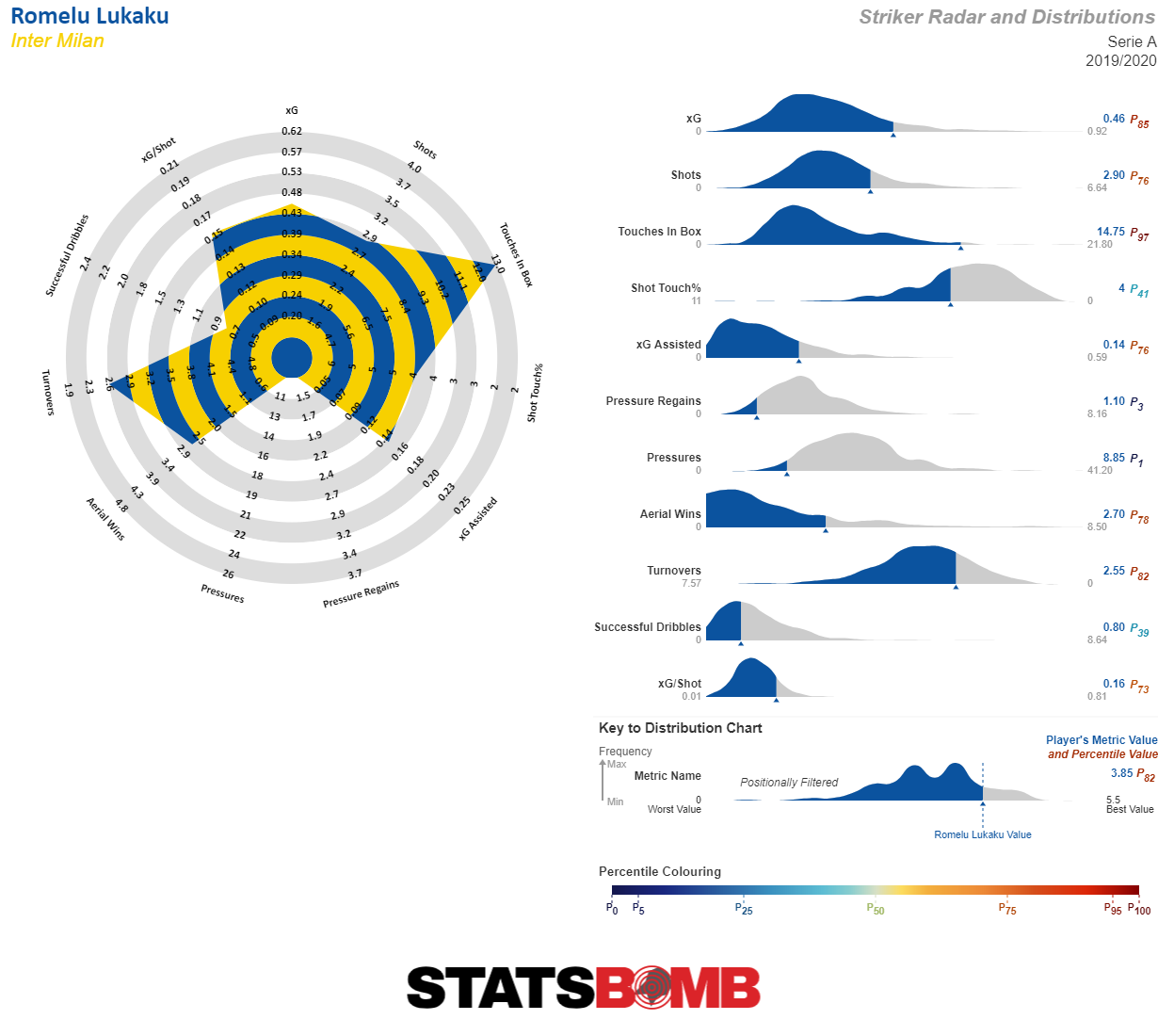
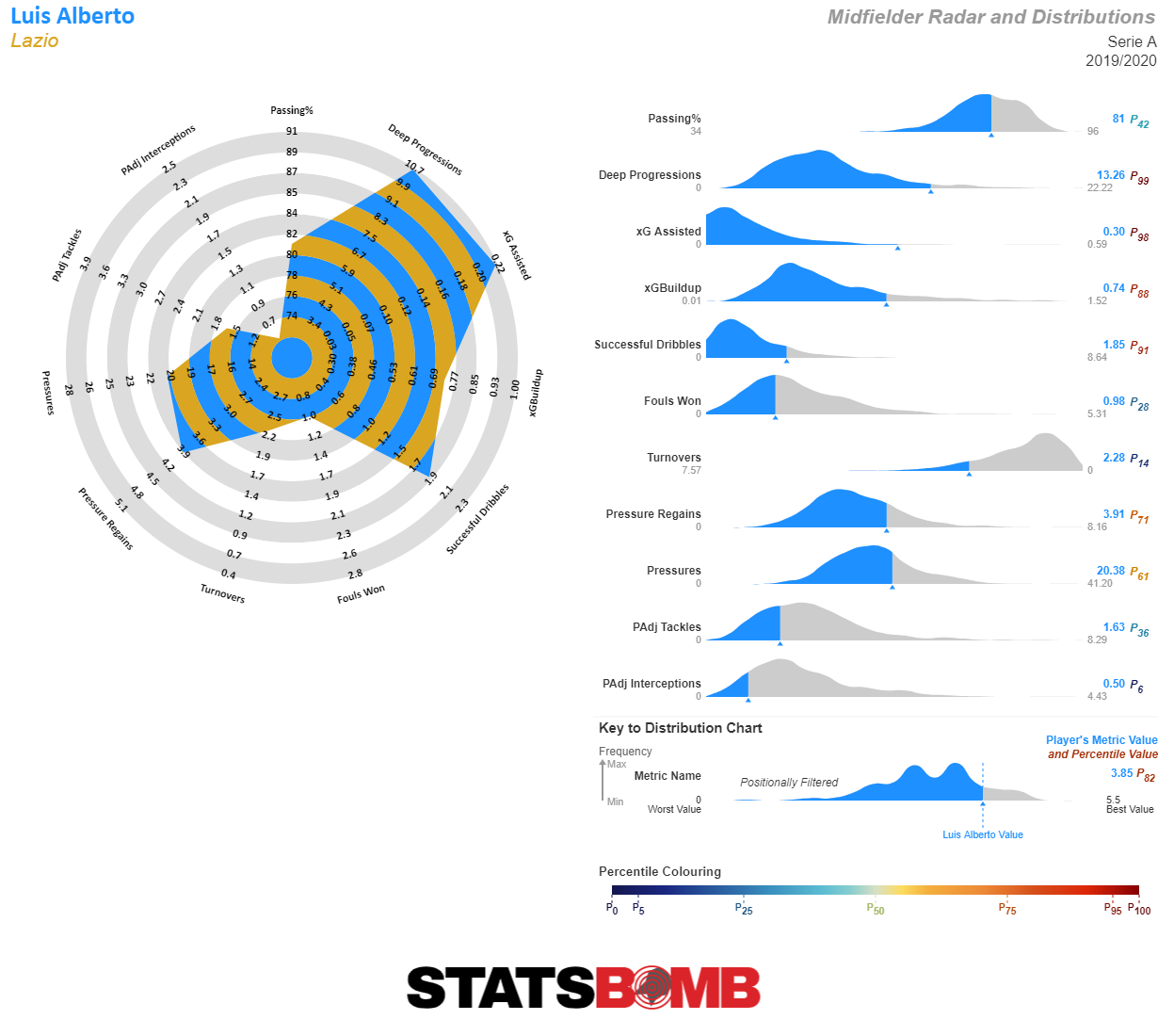
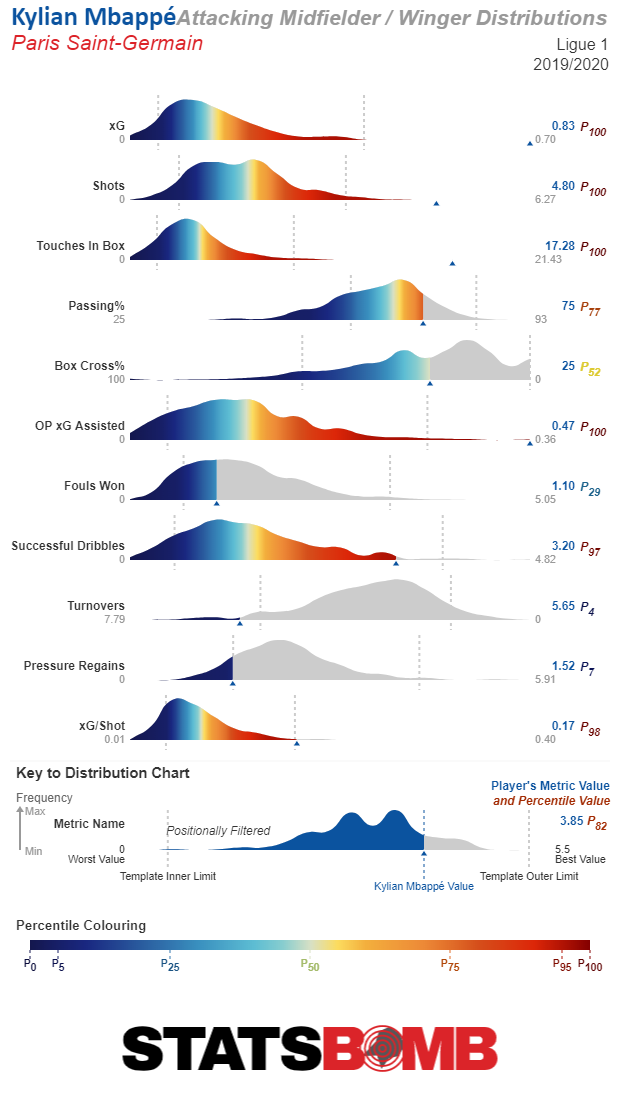
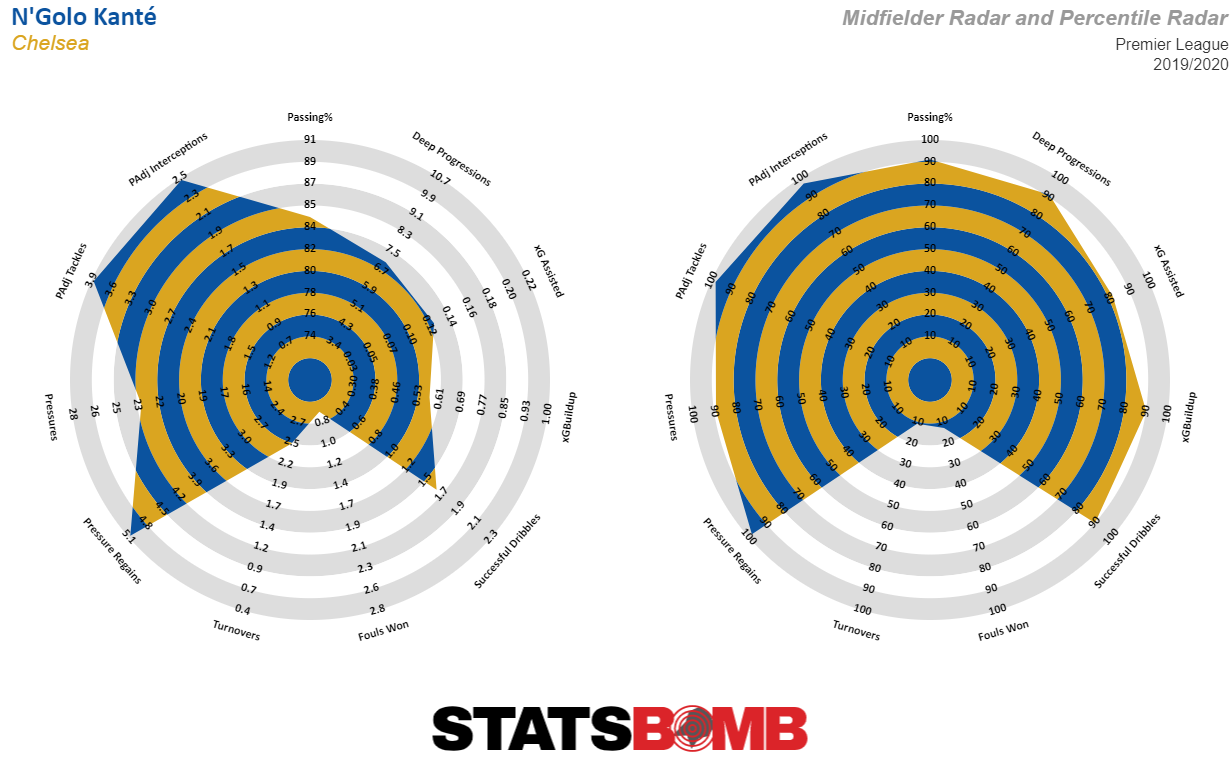
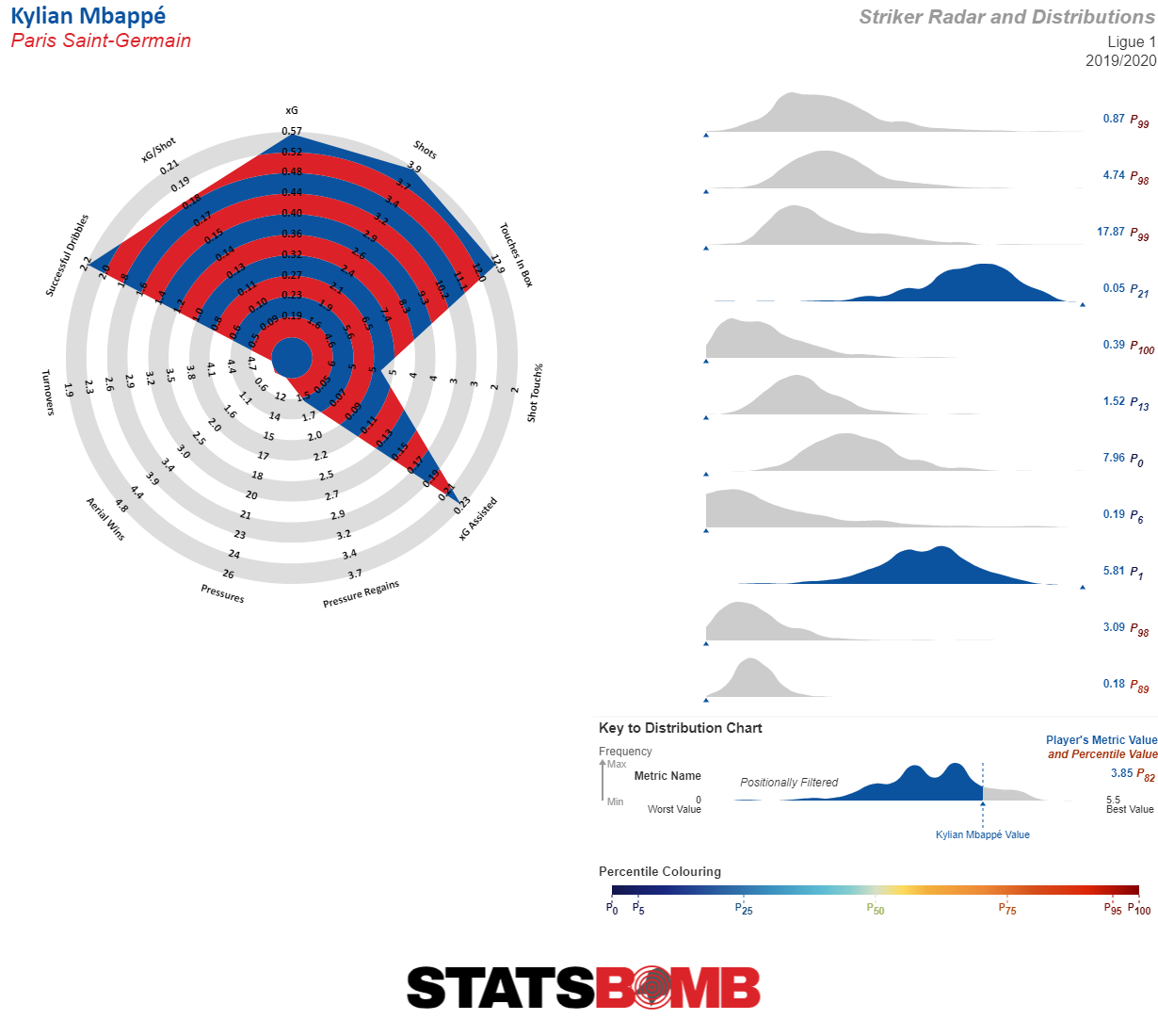




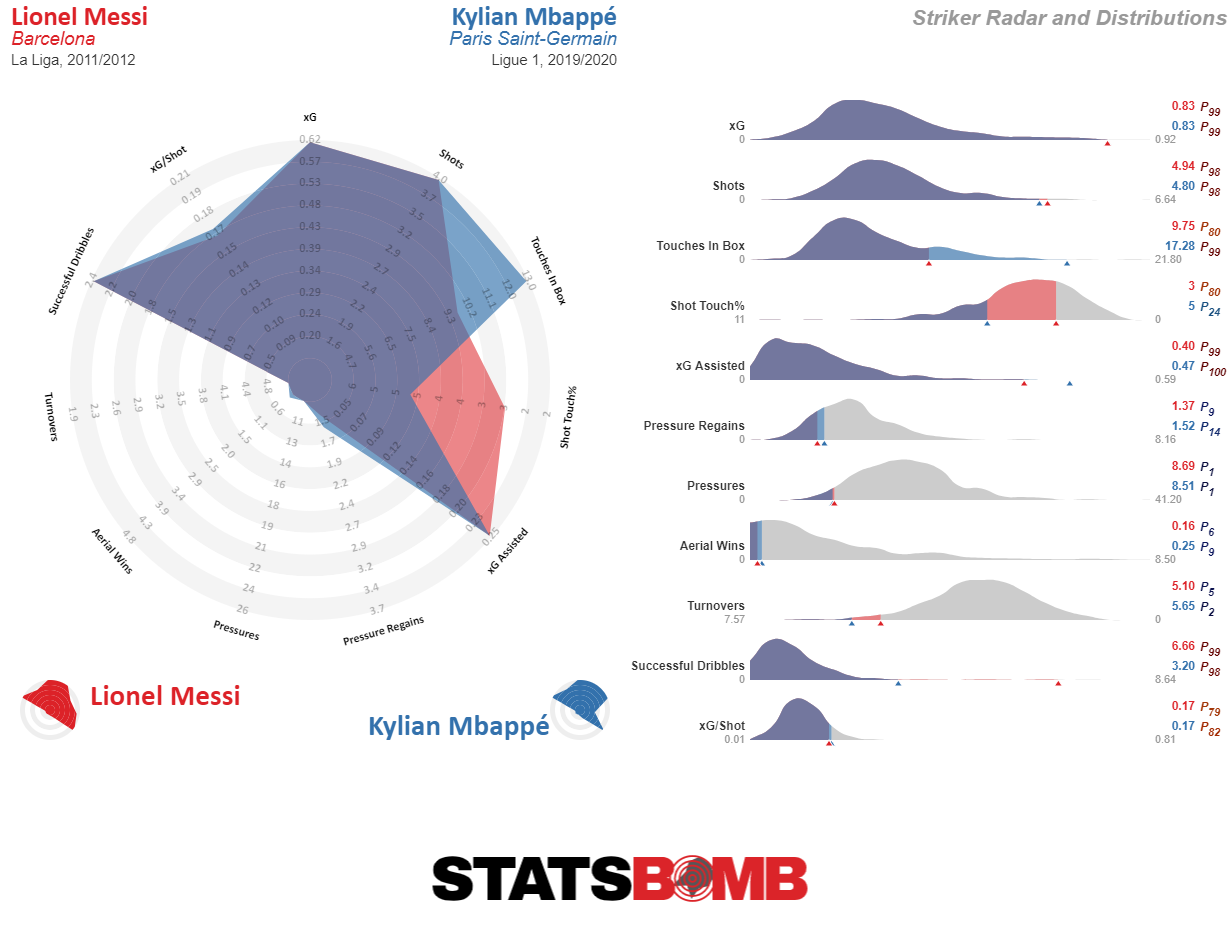
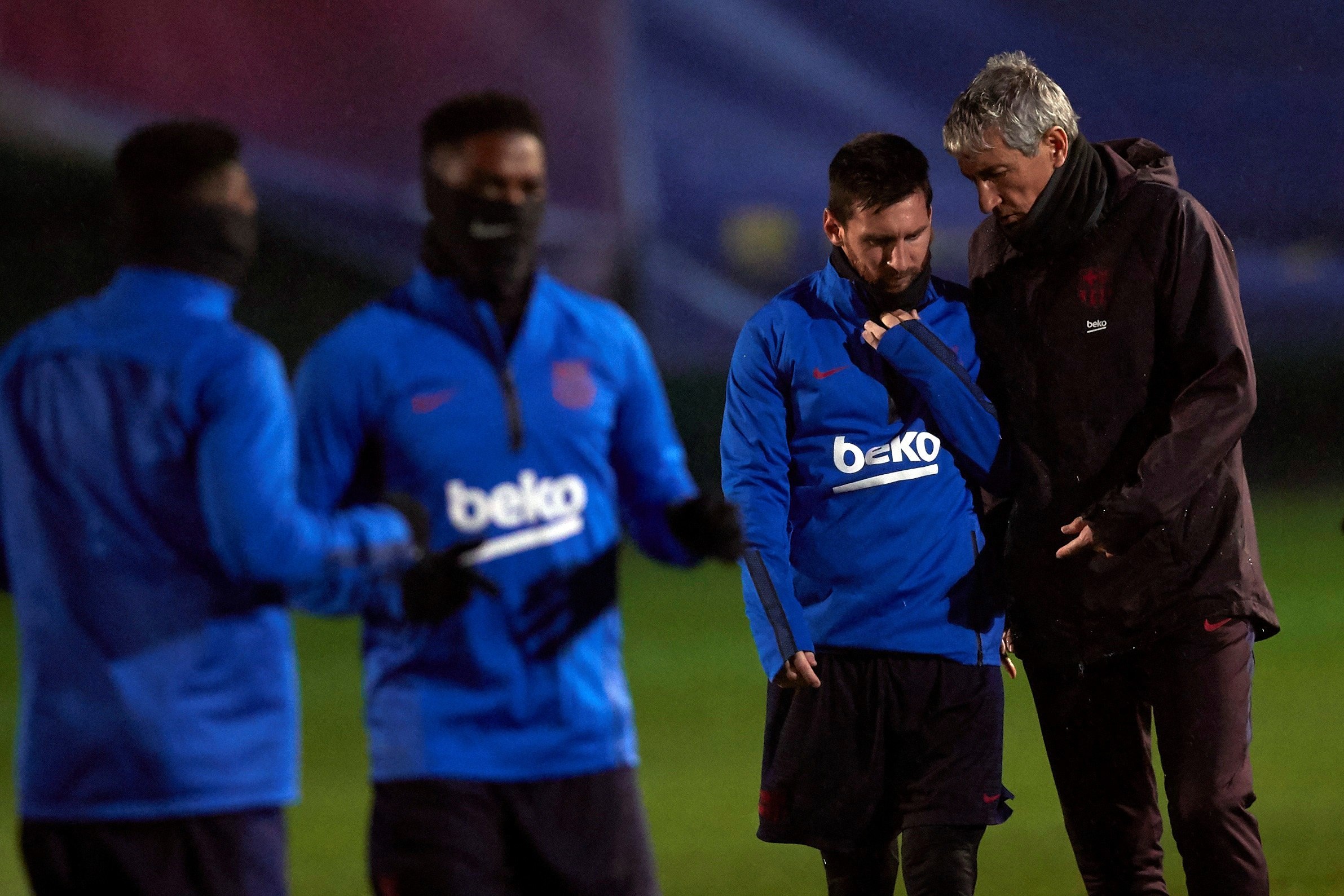
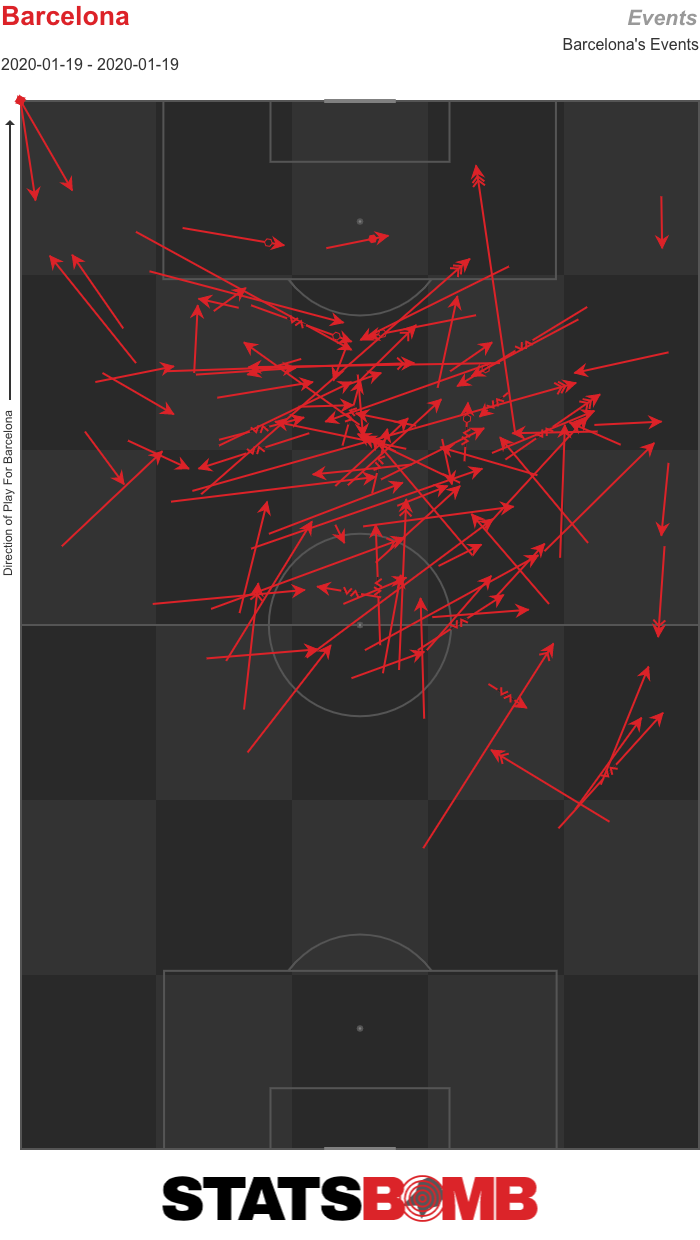 And while Griezmann was at times tasked with stretching play in behind, he was also able to get involved in deeper central areas more frequently than has often been the case this season. This was not the denatured Griezmann of performances past.
And while Griezmann was at times tasked with stretching play in behind, he was also able to get involved in deeper central areas more frequently than has often been the case this season. This was not the denatured Griezmann of performances past. 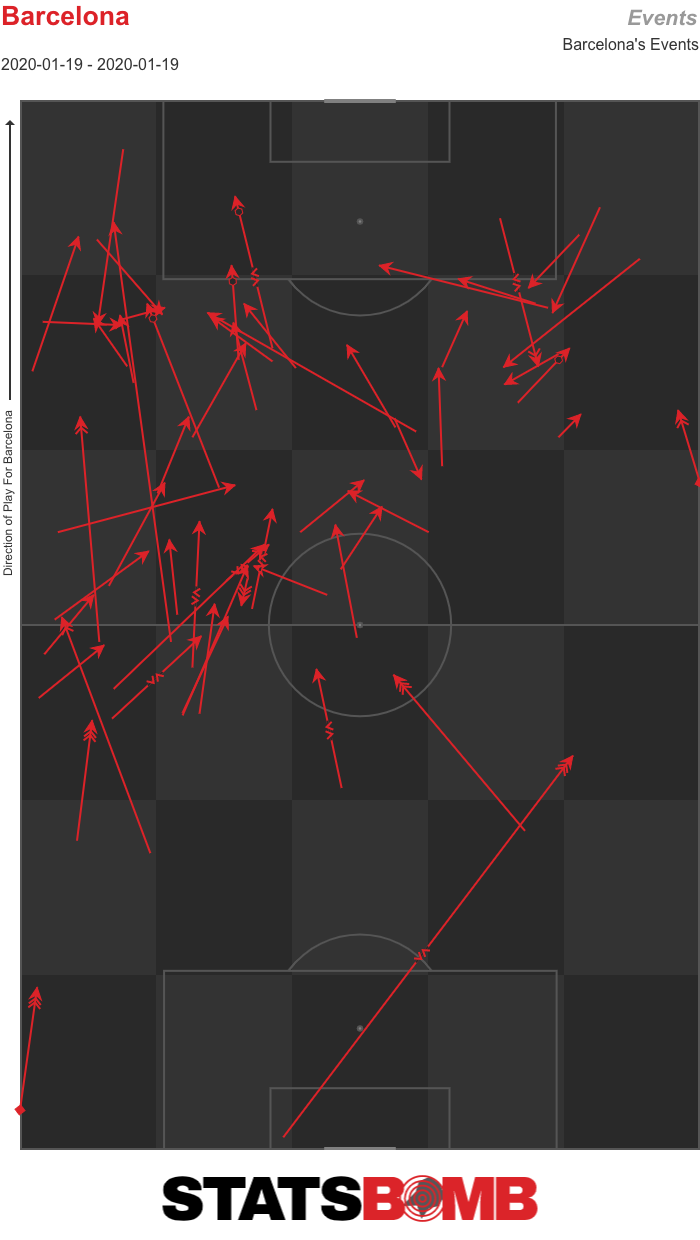 It was only one match, and it didn’t really make an appreciable difference in terms of output. Maybe it was just an aesthetic thing. But given Barcelona are the club who have made aesthetics their thing, and that Setién’s appointment was at least partly driven by that, it feels like a step in the right direction.
It was only one match, and it didn’t really make an appreciable difference in terms of output. Maybe it was just an aesthetic thing. But given Barcelona are the club who have made aesthetics their thing, and that Setién’s appointment was at least partly driven by that, it feels like a step in the right direction. 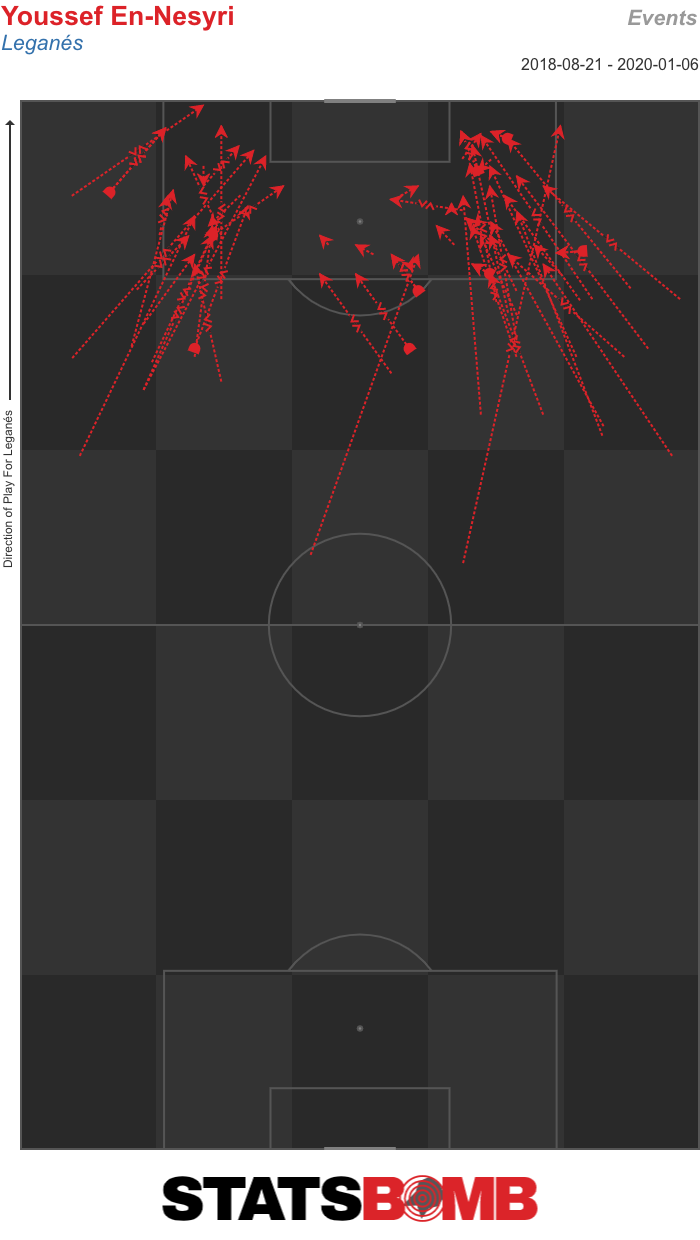 The 22-year-old is a slightly awkward runner, more angular than he appears at first glance, but he’s also one of the fastest players in La Liga. To that he adds a decent aerial game (he does stand at six feet and two inches tall after all), and a willingness to press from the front that has made him a top-six forward in each of last three seasons in terms of pressing actions. He has a varied enough toolbox to perform as a more mobile alternative to central striker Luuk de Jong or as direct option on the right or left of Sevilla’s attack. En-Nesyri’s numbers reveal a clear uptick between his 2017–18 campaign at Málaga and his 2018–19 at Leganés.
The 22-year-old is a slightly awkward runner, more angular than he appears at first glance, but he’s also one of the fastest players in La Liga. To that he adds a decent aerial game (he does stand at six feet and two inches tall after all), and a willingness to press from the front that has made him a top-six forward in each of last three seasons in terms of pressing actions. He has a varied enough toolbox to perform as a more mobile alternative to central striker Luuk de Jong or as direct option on the right or left of Sevilla’s attack. En-Nesyri’s numbers reveal a clear uptick between his 2017–18 campaign at Málaga and his 2018–19 at Leganés.  That progression has somewhat stalled this season, but it feels as if there is still more to come. He looks a typical Monchi signing: a young player with a diverse skillset that hasn’t quite yet coalesced into an aggregate greater than the sum of its parts. The expectation is that his output will improve in the company of better players, but it remains to be seen whether reality will conform to this hypothesis.
That progression has somewhat stalled this season, but it feels as if there is still more to come. He looks a typical Monchi signing: a young player with a diverse skillset that hasn’t quite yet coalesced into an aggregate greater than the sum of its parts. The expectation is that his output will improve in the company of better players, but it remains to be seen whether reality will conform to this hypothesis. 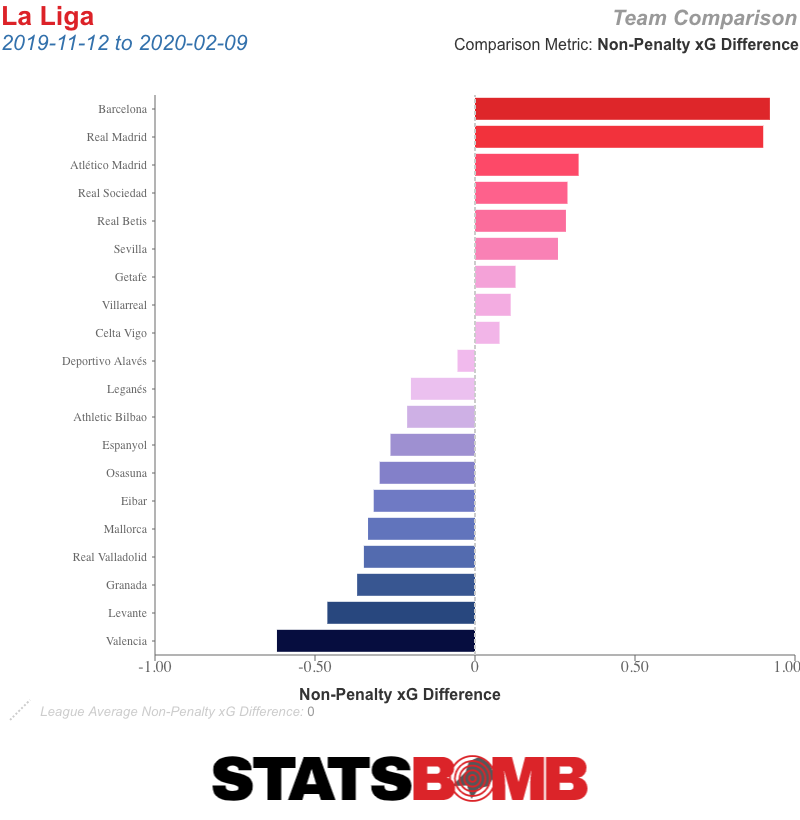 So what has changed? In possession, the side has shifted back to the system of three central defenders and two high-positioned wing-backs that formed the basis of initial ball progression under Setién. Of the pass networks from Betis’ first 10 matches of the season, the large majority feature a clear division between the two central defenders and the midfield zone.
So what has changed? In possession, the side has shifted back to the system of three central defenders and two high-positioned wing-backs that formed the basis of initial ball progression under Setién. Of the pass networks from Betis’ first 10 matches of the season, the large majority feature a clear division between the two central defenders and the midfield zone. 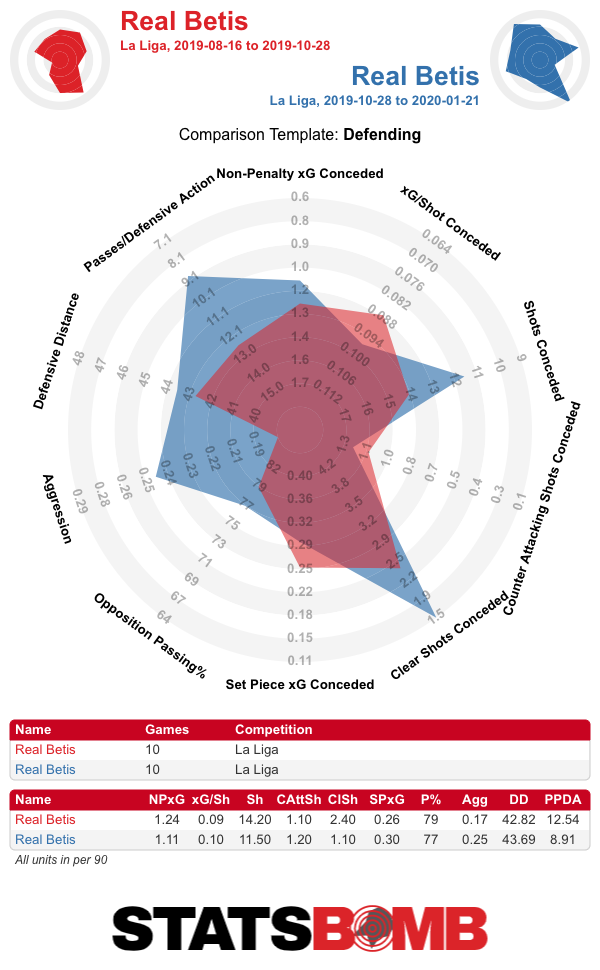 The results are clear to see. Sometimes a little compromise goes a long way.
The results are clear to see. Sometimes a little compromise goes a long way.
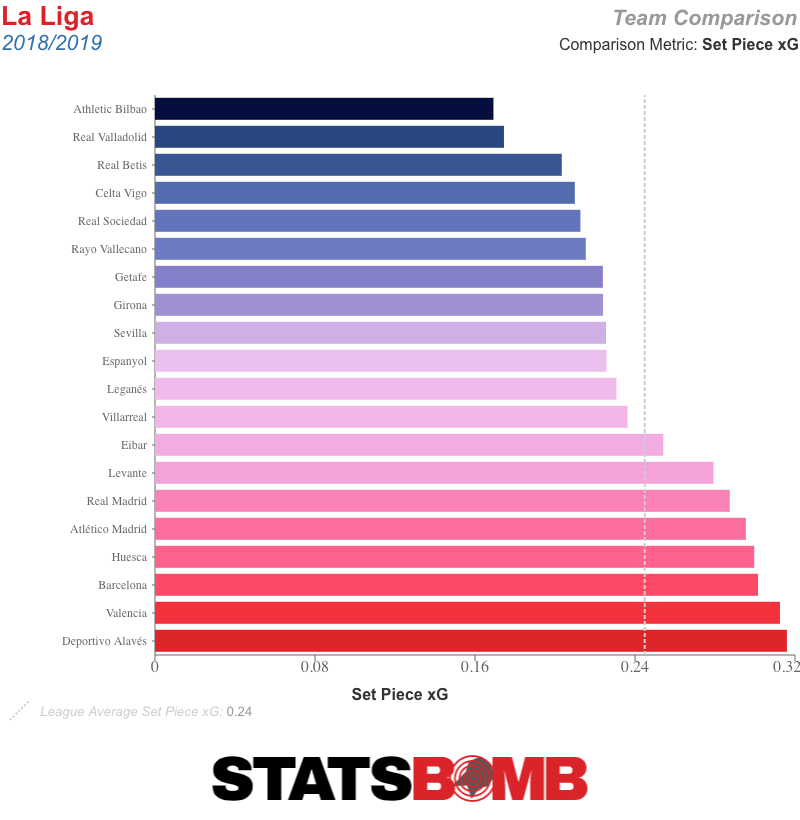 The early evidence at Espanyol suggests they will again be an important resource. David López has twice been the beneficiary to date. He headed home the opener against Barcelona and then arrived to convert Naldo’s near-post flick-on for the first against Villarreal. Espanyol won’t maintain that kind of hit rate—no team is scoring once every two matches from set pieces this season—but a few more set-piece goals will go a long way for the league’s most goal-shy team. At Rayo Vallecano last season, De Tomás showed himself to be a striker capable of generating shots and goals in a relegation-threatened team. Quick, determined and an able dribbler, amongst all players who saw at least 1,200 minutes of action, he ranked fifth in the league on a per-90 basis in shots (3.29), eighth in goals (0.42) and 11th in xG (0.36). His Espanyol debut showed exactly what he provides. Not only did he score the second goal, heading home an excellent right-wing delivery from Jonathan Calleri, but he alone generated over half his team’s expected goals off of his seven shots. Espanyol is strongly backing Abelardo. After laying down €20 million on De Tomás, they spent a further €9 million to bring in Getafe central defender Leandro Cabrera. Other deals seem to be in the works. But whatever additional elements he adds, having both an individual shot-generator and a systemised means of creating shots and goals already puts his side in a much better position to avoid the drop. Header image courtesy of the Press Association
The early evidence at Espanyol suggests they will again be an important resource. David López has twice been the beneficiary to date. He headed home the opener against Barcelona and then arrived to convert Naldo’s near-post flick-on for the first against Villarreal. Espanyol won’t maintain that kind of hit rate—no team is scoring once every two matches from set pieces this season—but a few more set-piece goals will go a long way for the league’s most goal-shy team. At Rayo Vallecano last season, De Tomás showed himself to be a striker capable of generating shots and goals in a relegation-threatened team. Quick, determined and an able dribbler, amongst all players who saw at least 1,200 minutes of action, he ranked fifth in the league on a per-90 basis in shots (3.29), eighth in goals (0.42) and 11th in xG (0.36). His Espanyol debut showed exactly what he provides. Not only did he score the second goal, heading home an excellent right-wing delivery from Jonathan Calleri, but he alone generated over half his team’s expected goals off of his seven shots. Espanyol is strongly backing Abelardo. After laying down €20 million on De Tomás, they spent a further €9 million to bring in Getafe central defender Leandro Cabrera. Other deals seem to be in the works. But whatever additional elements he adds, having both an individual shot-generator and a systemised means of creating shots and goals already puts his side in a much better position to avoid the drop. Header image courtesy of the Press Association